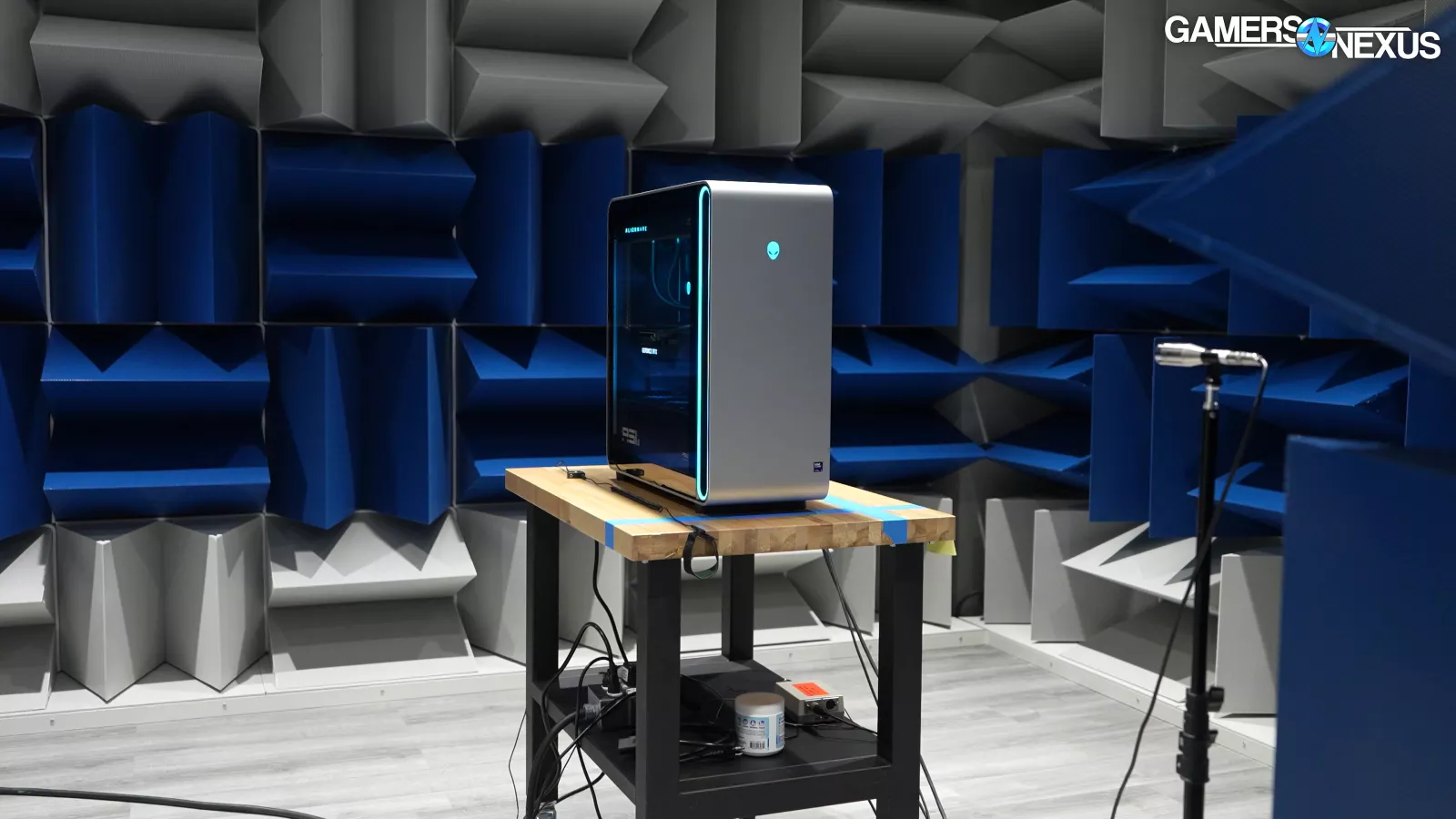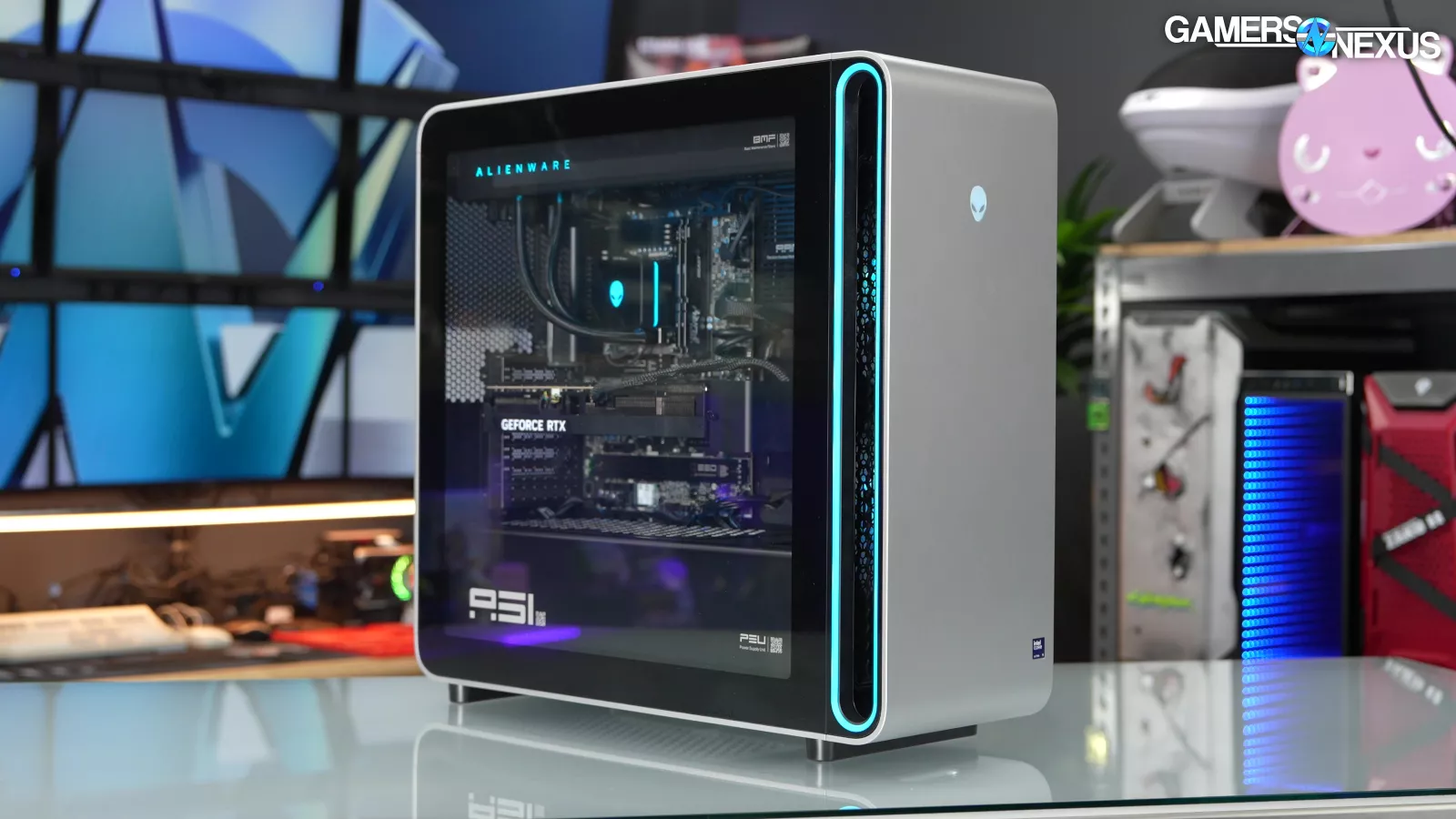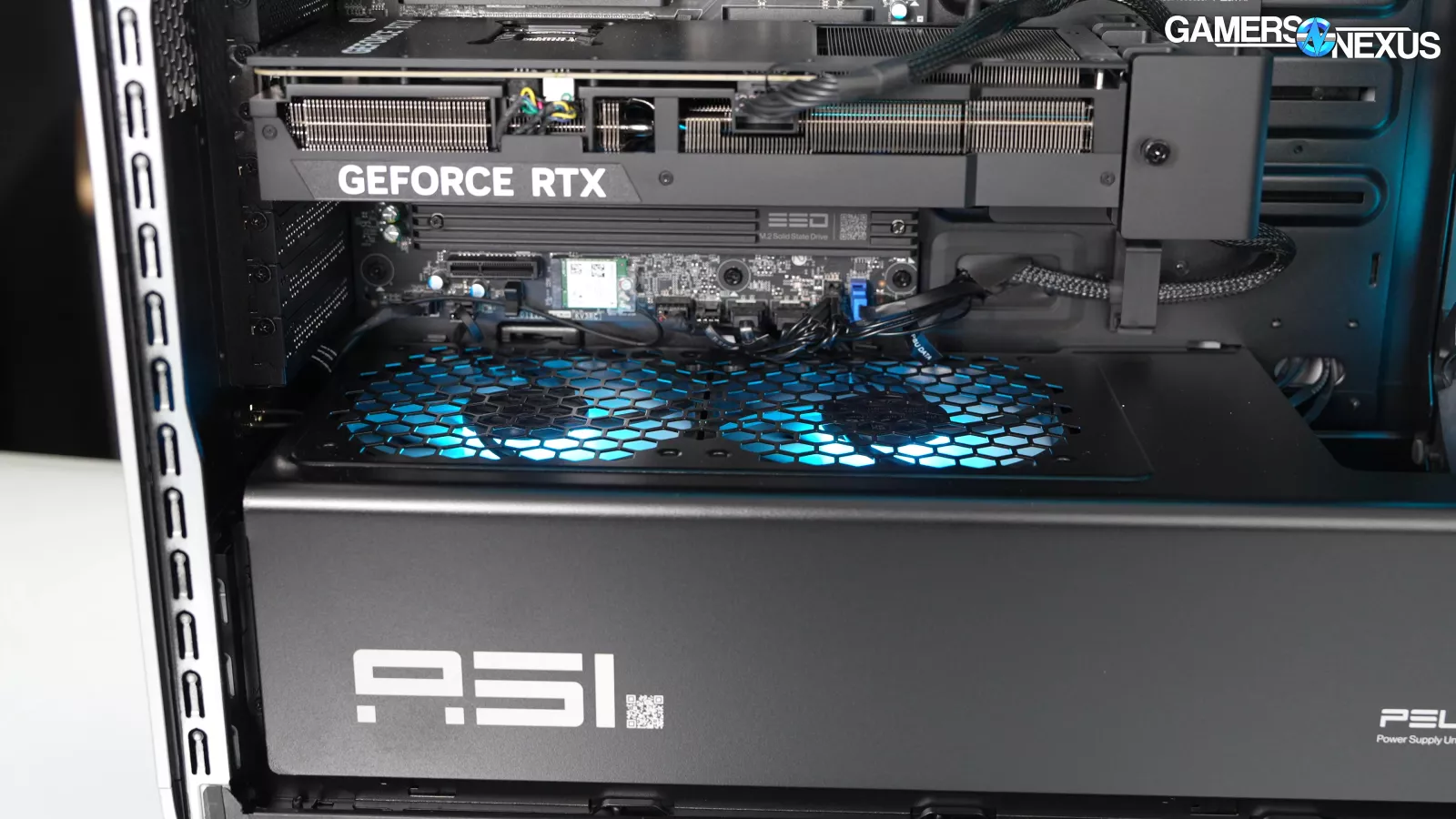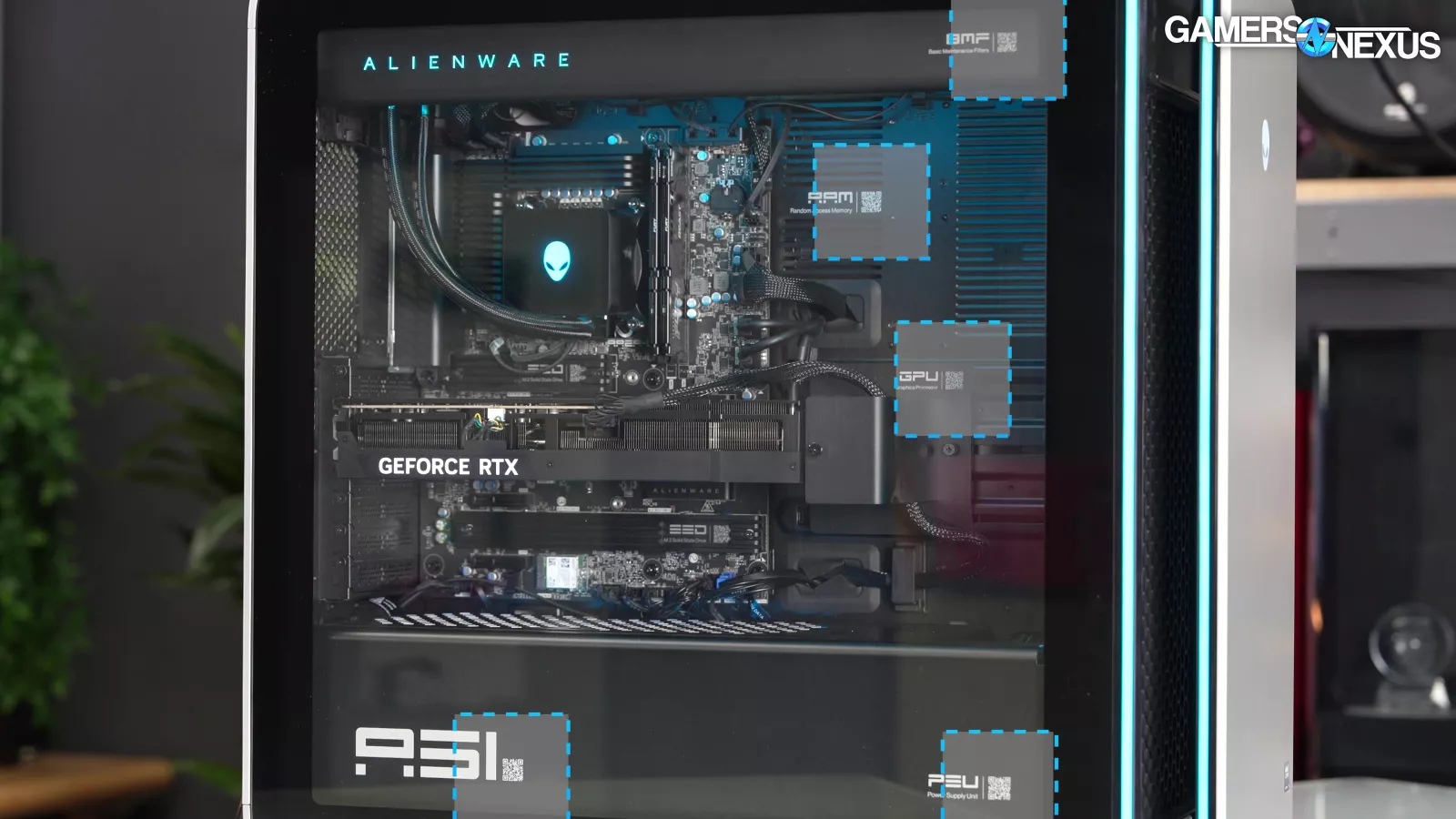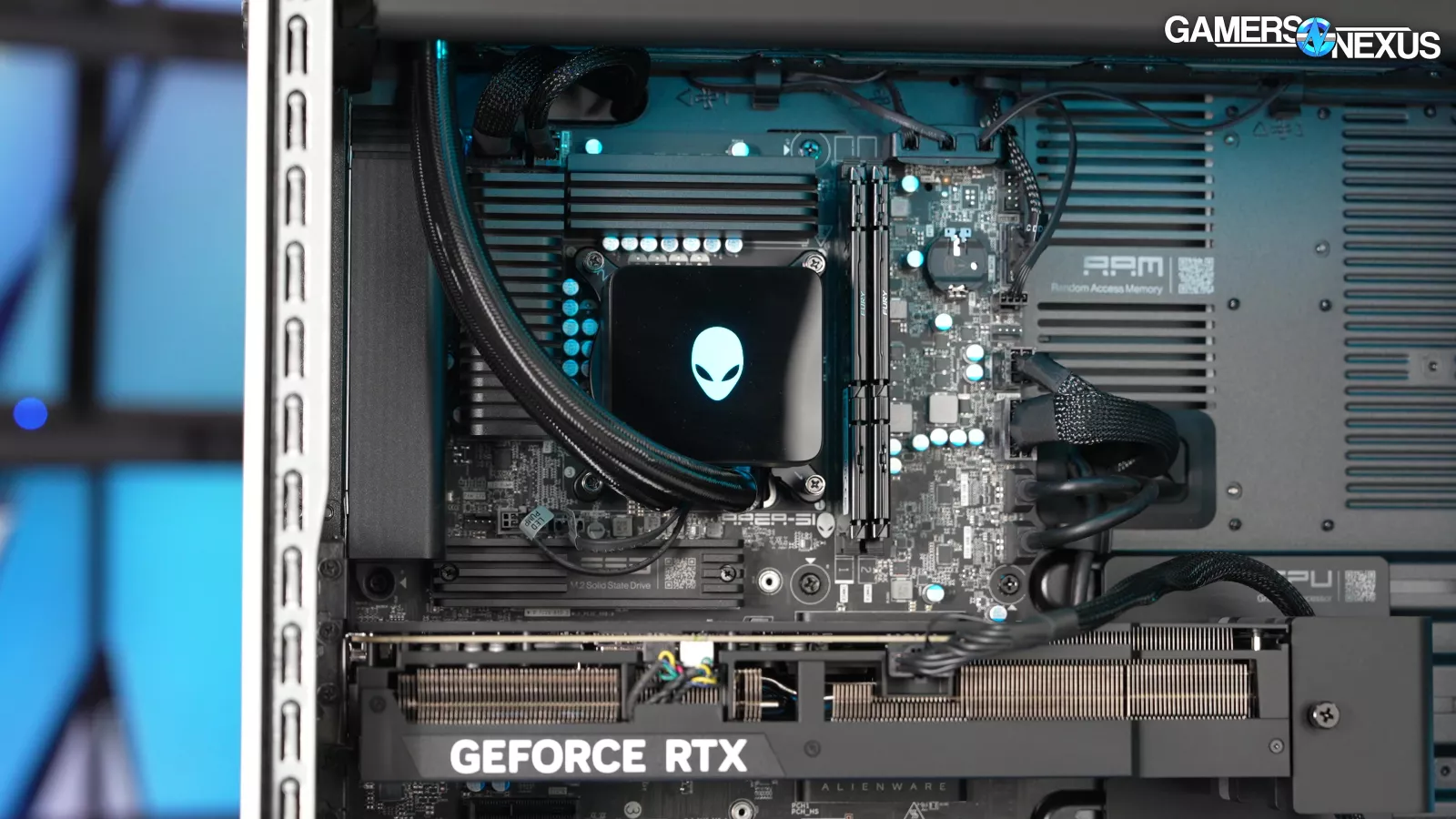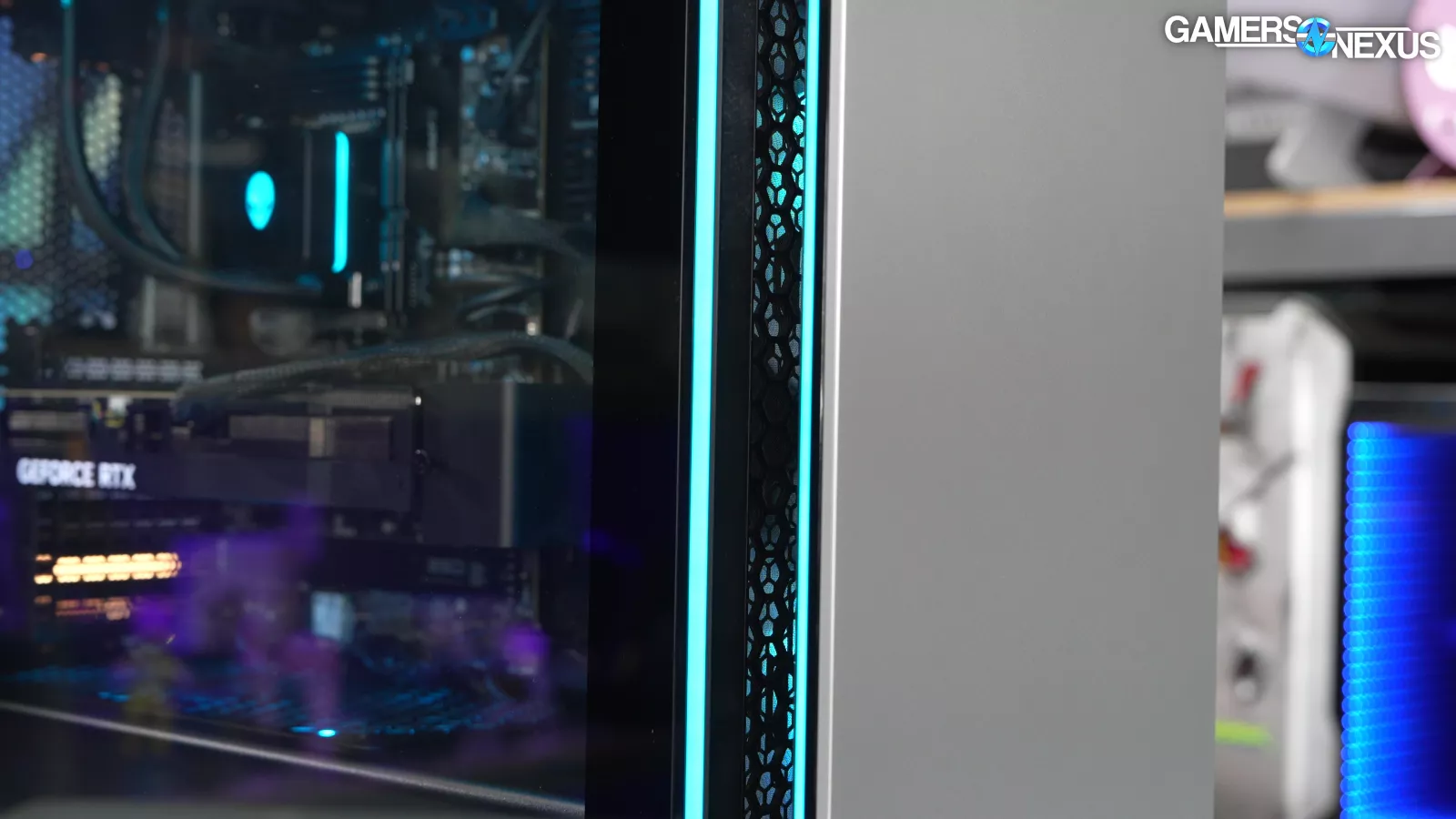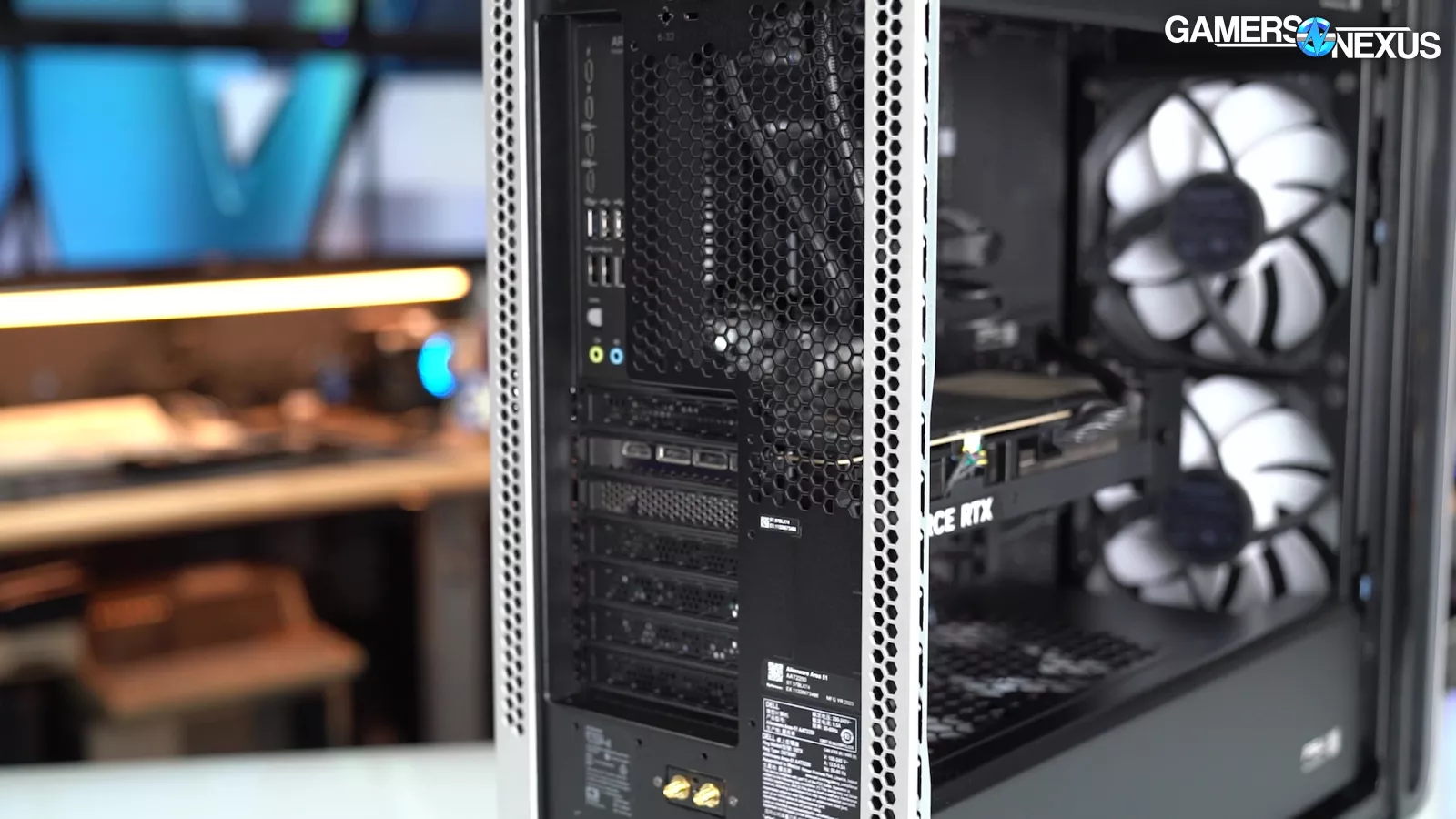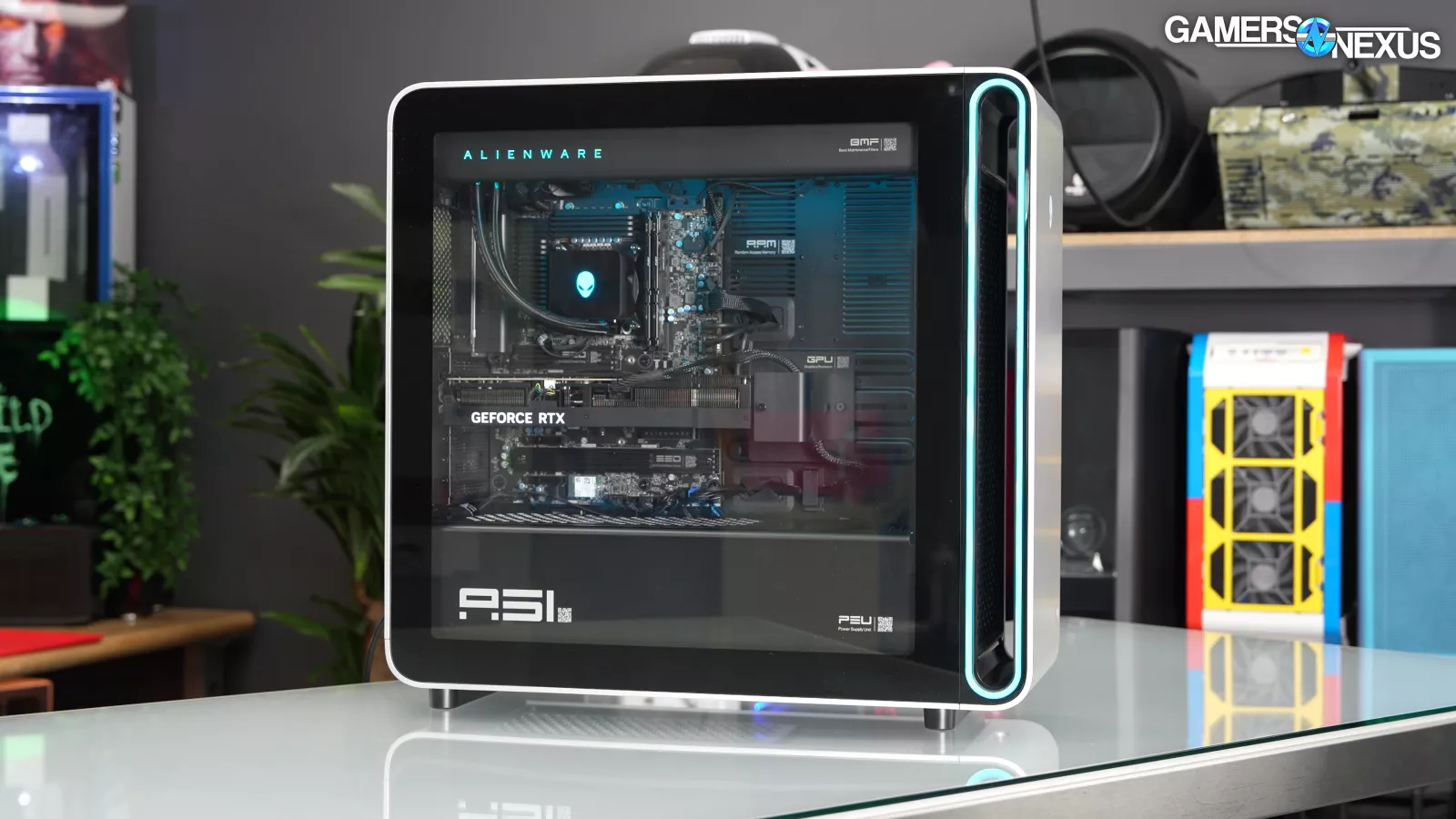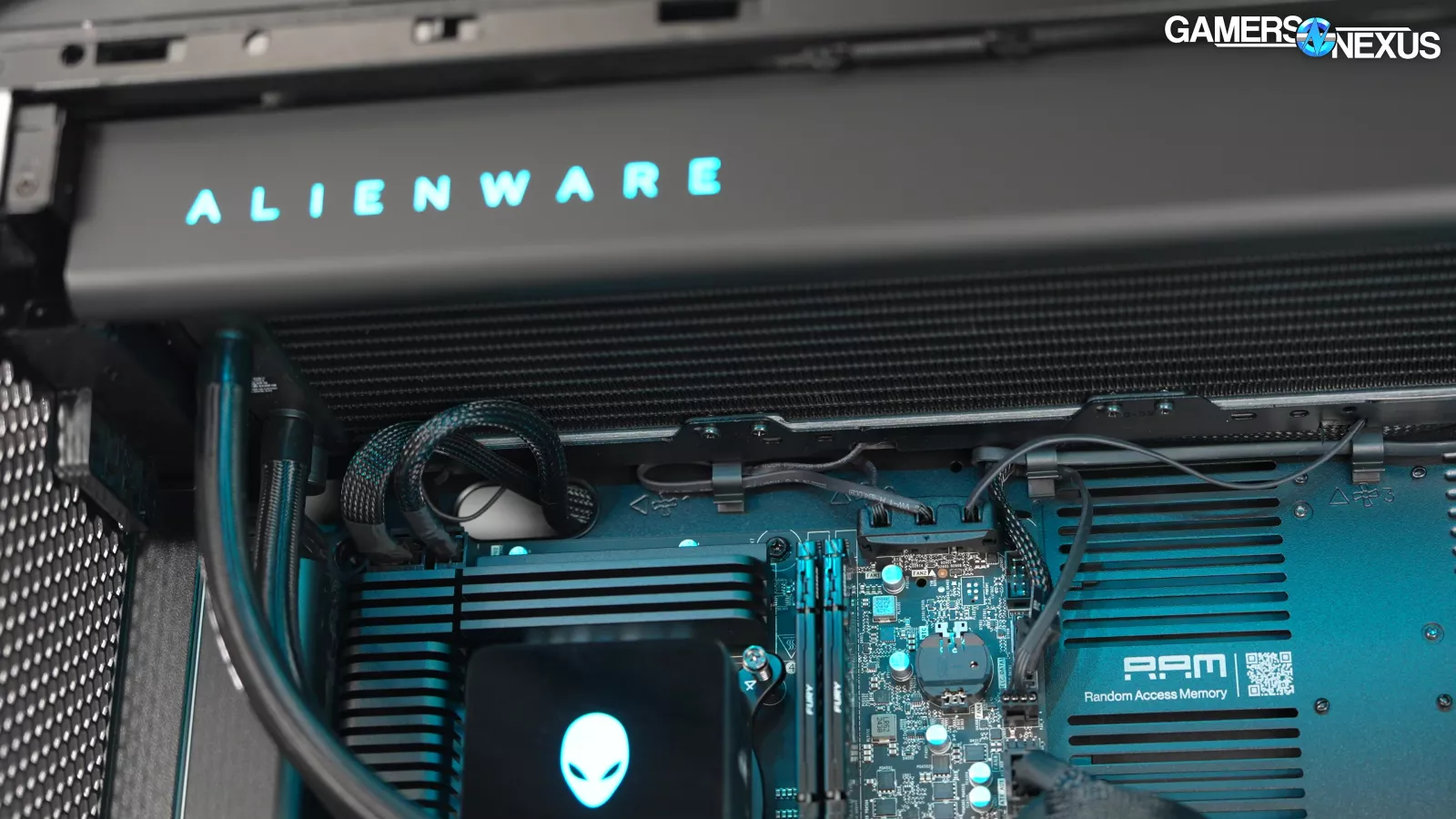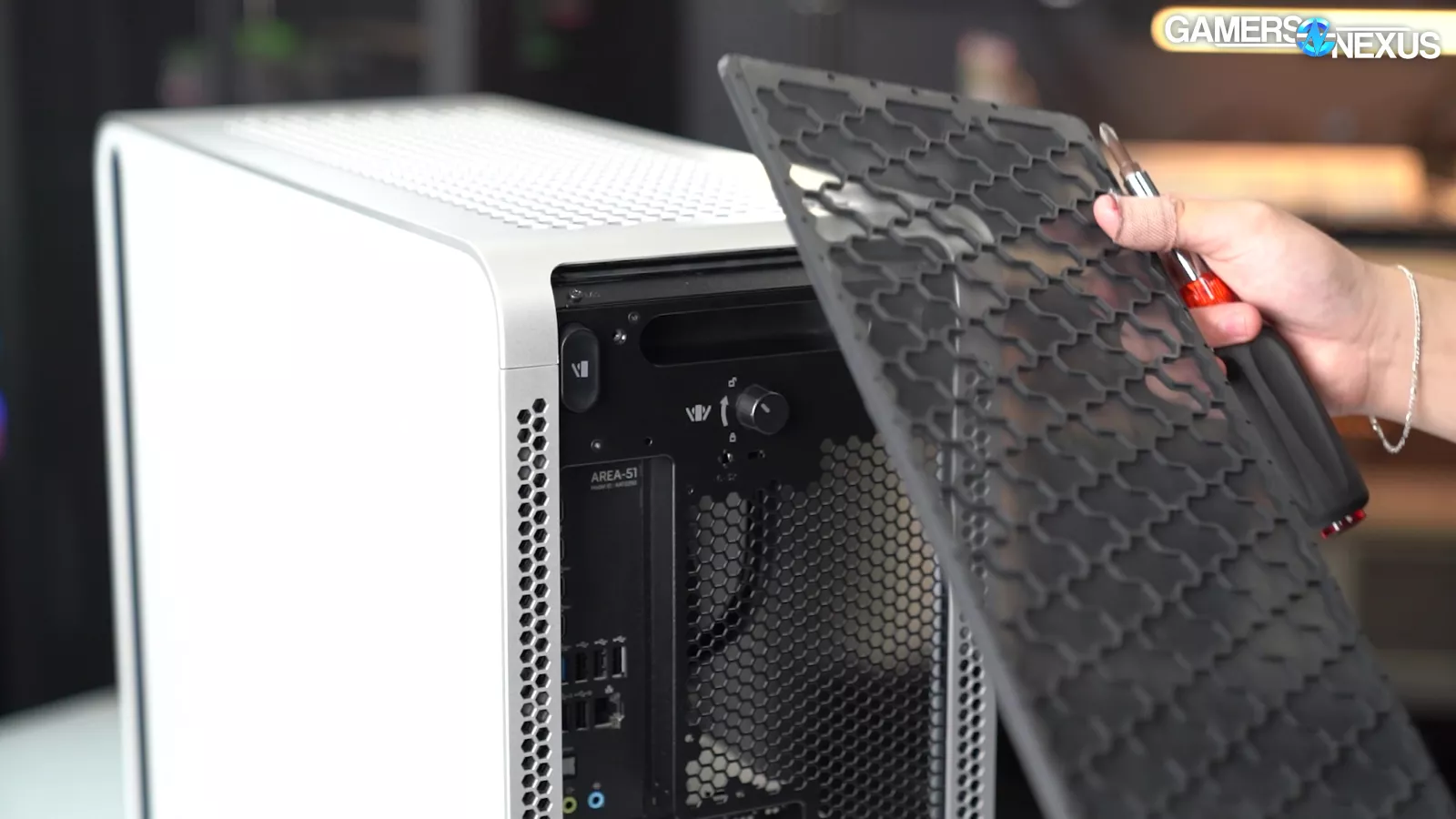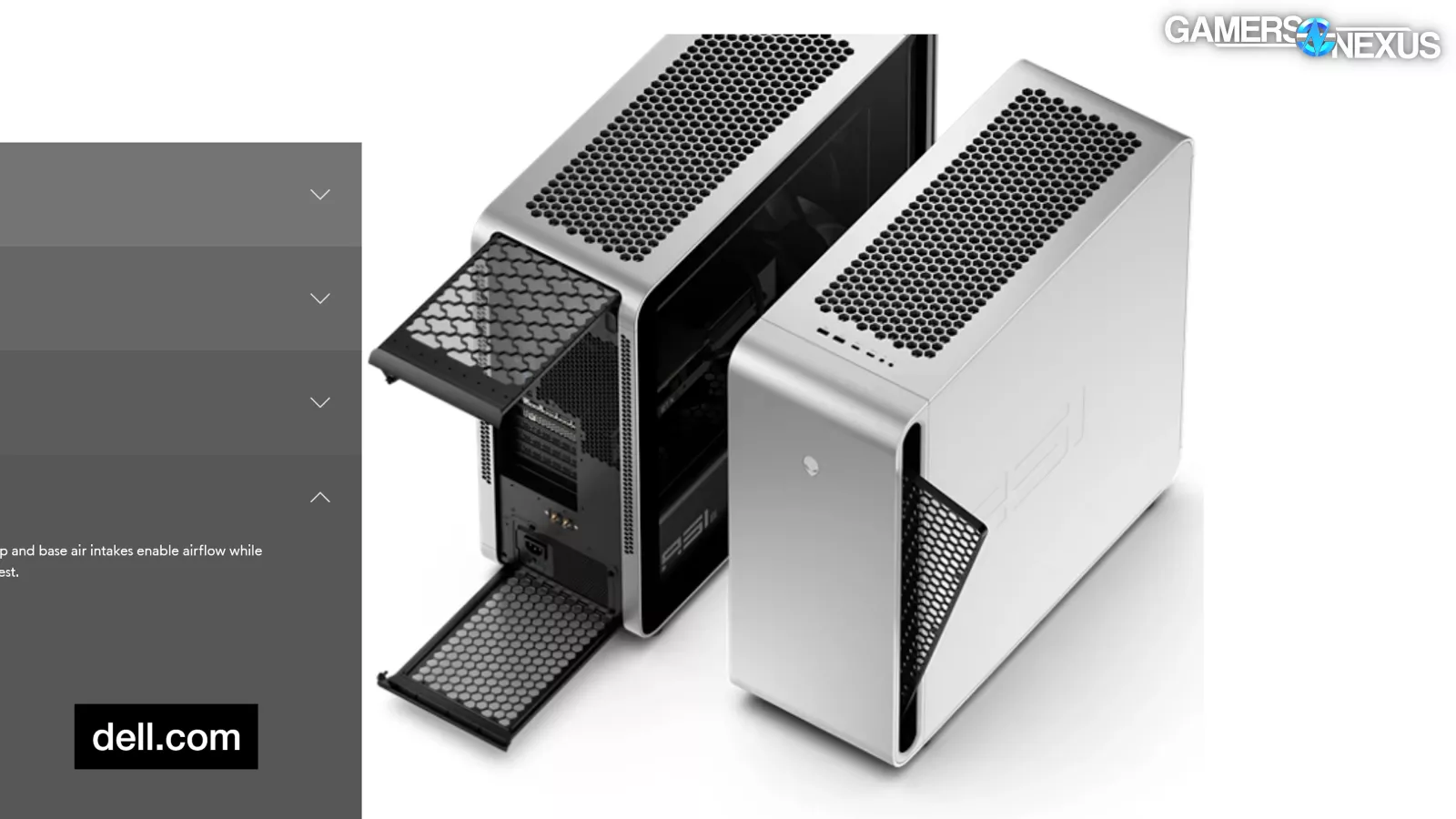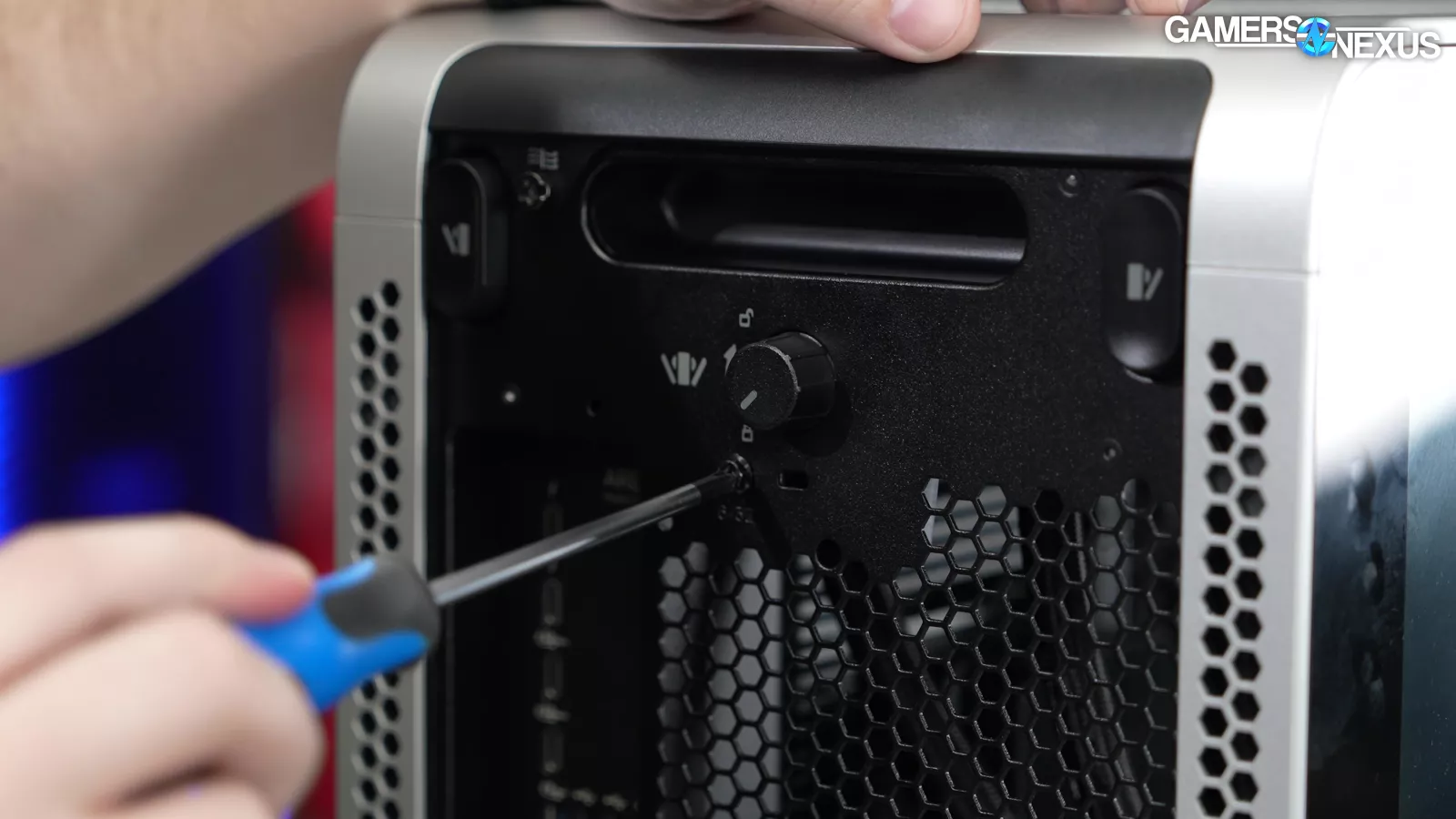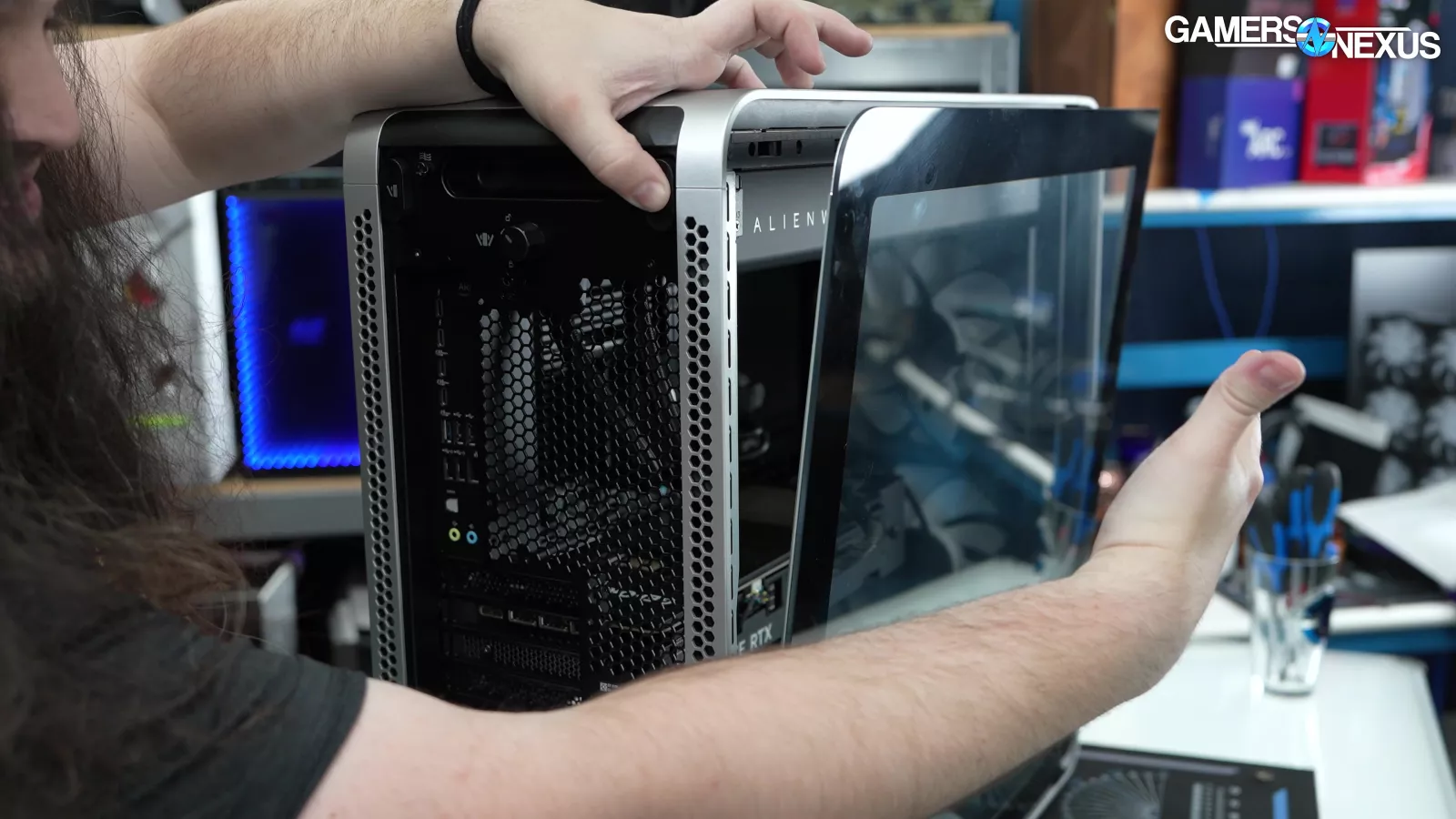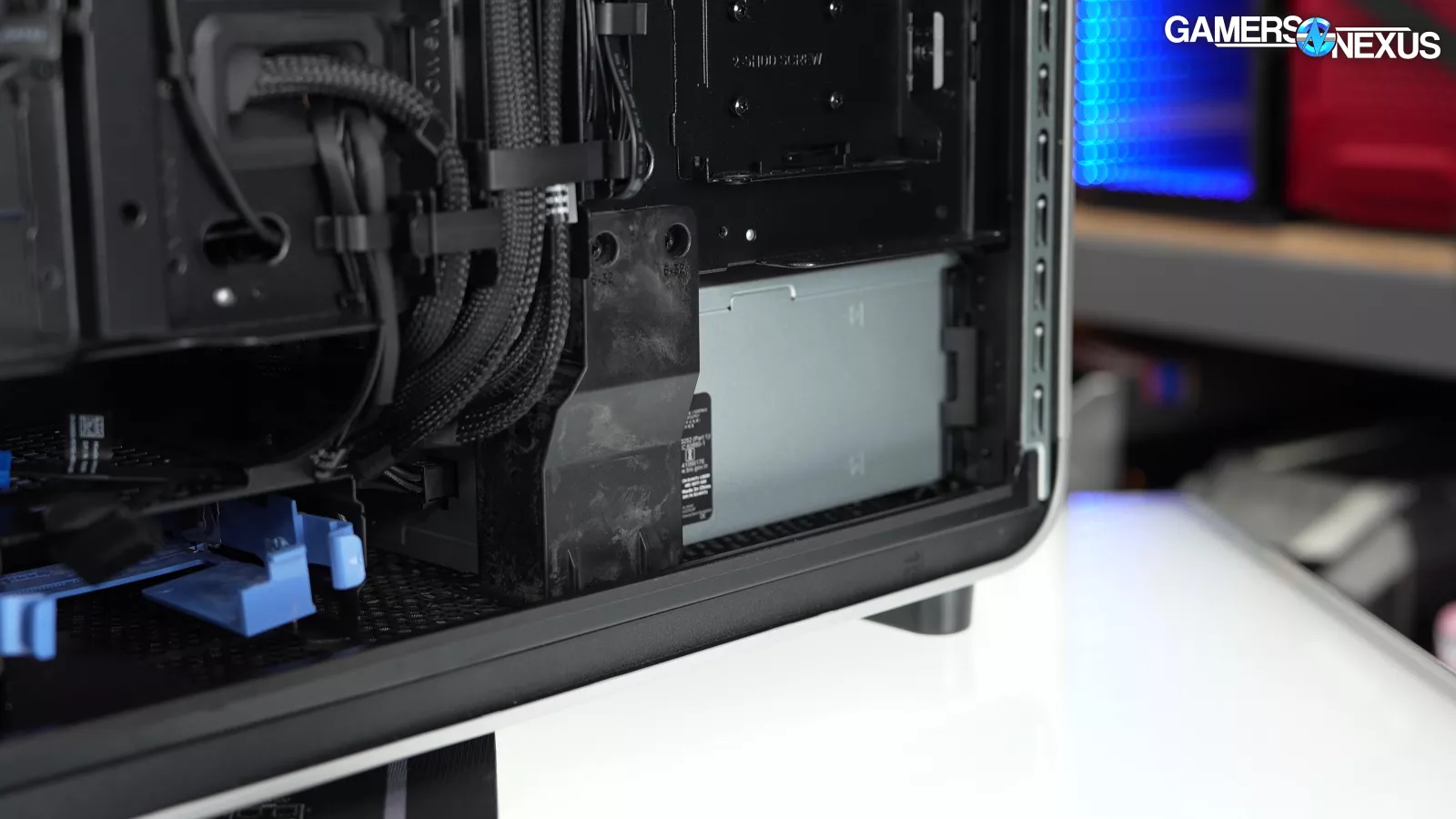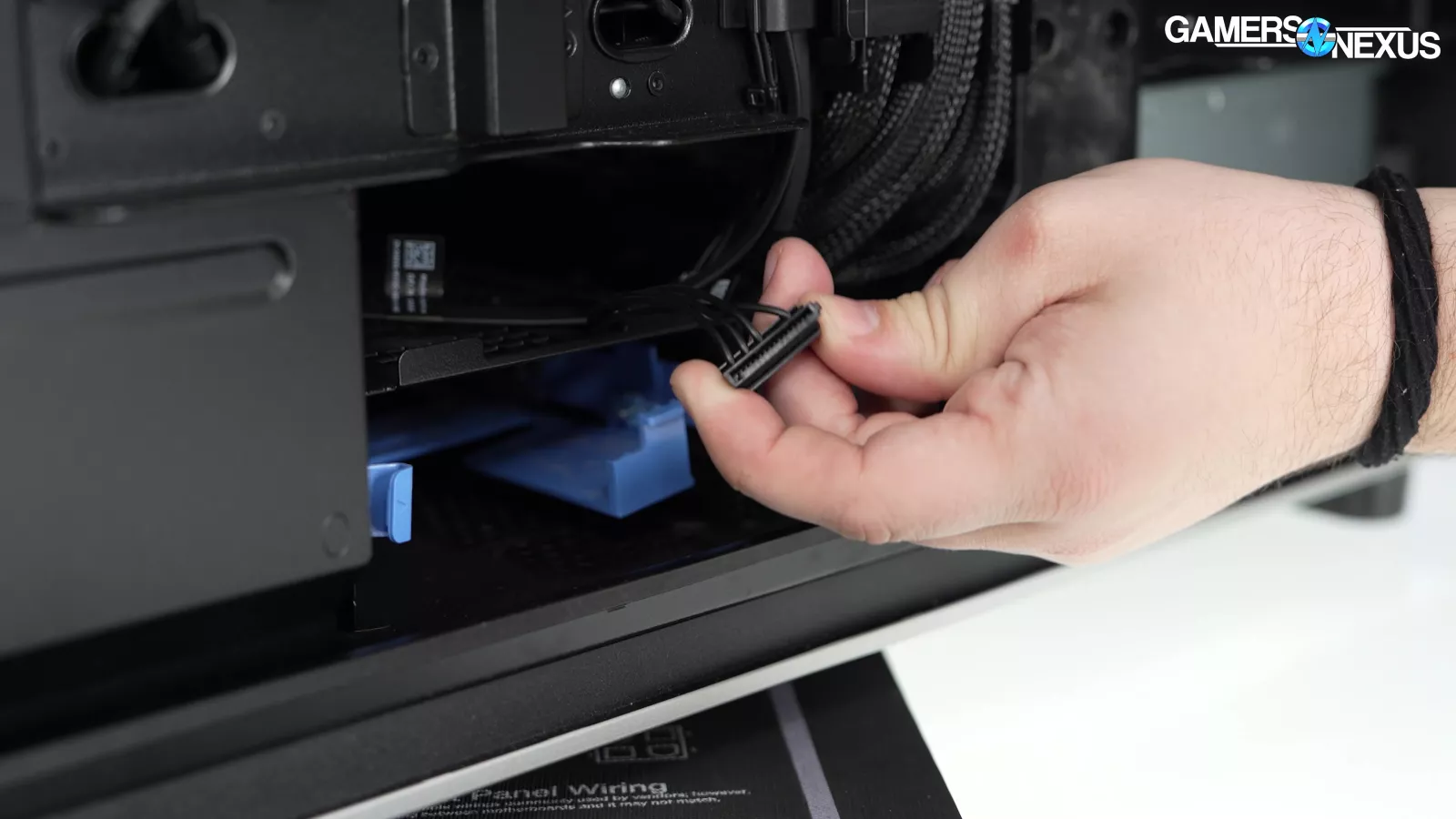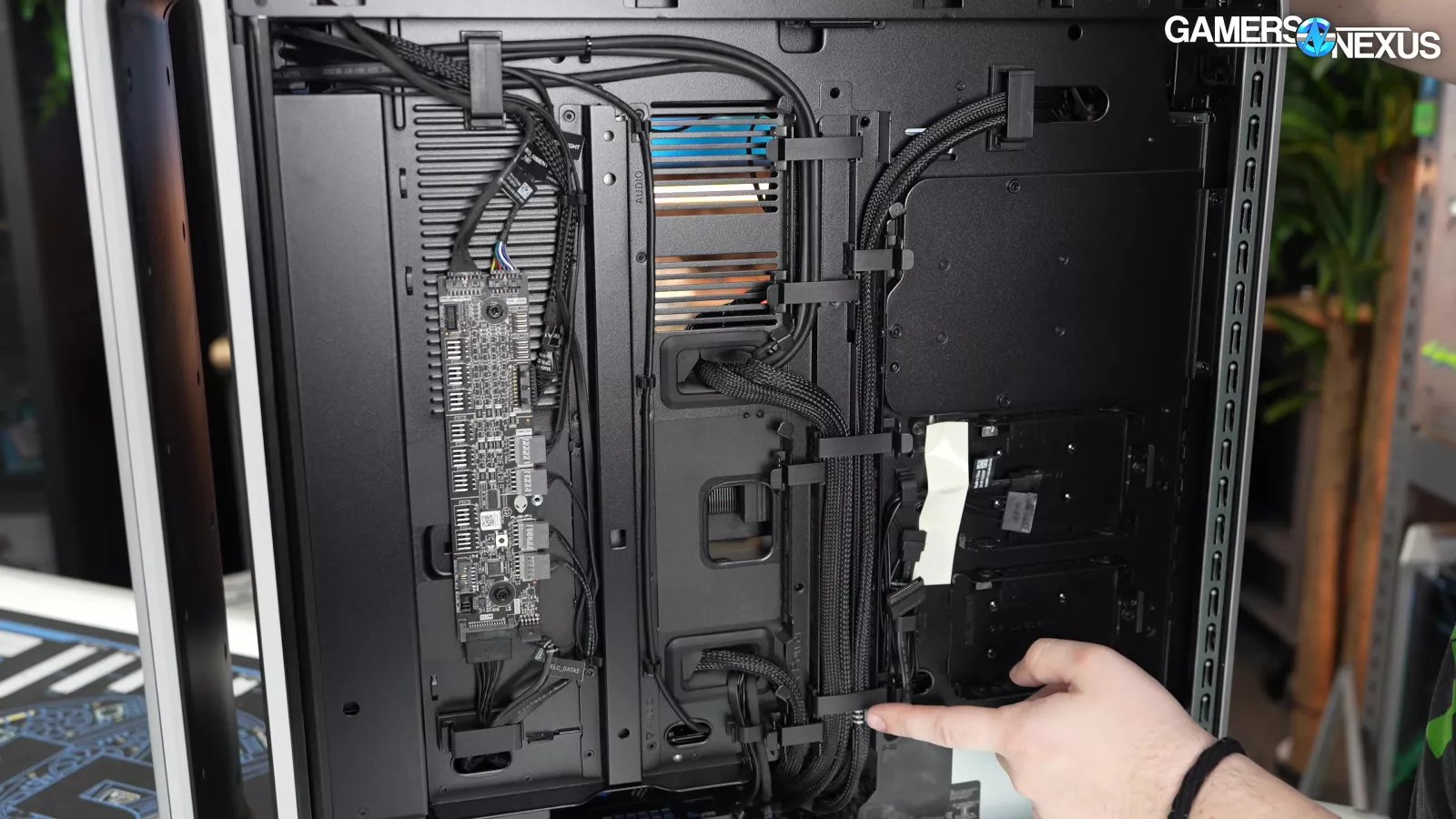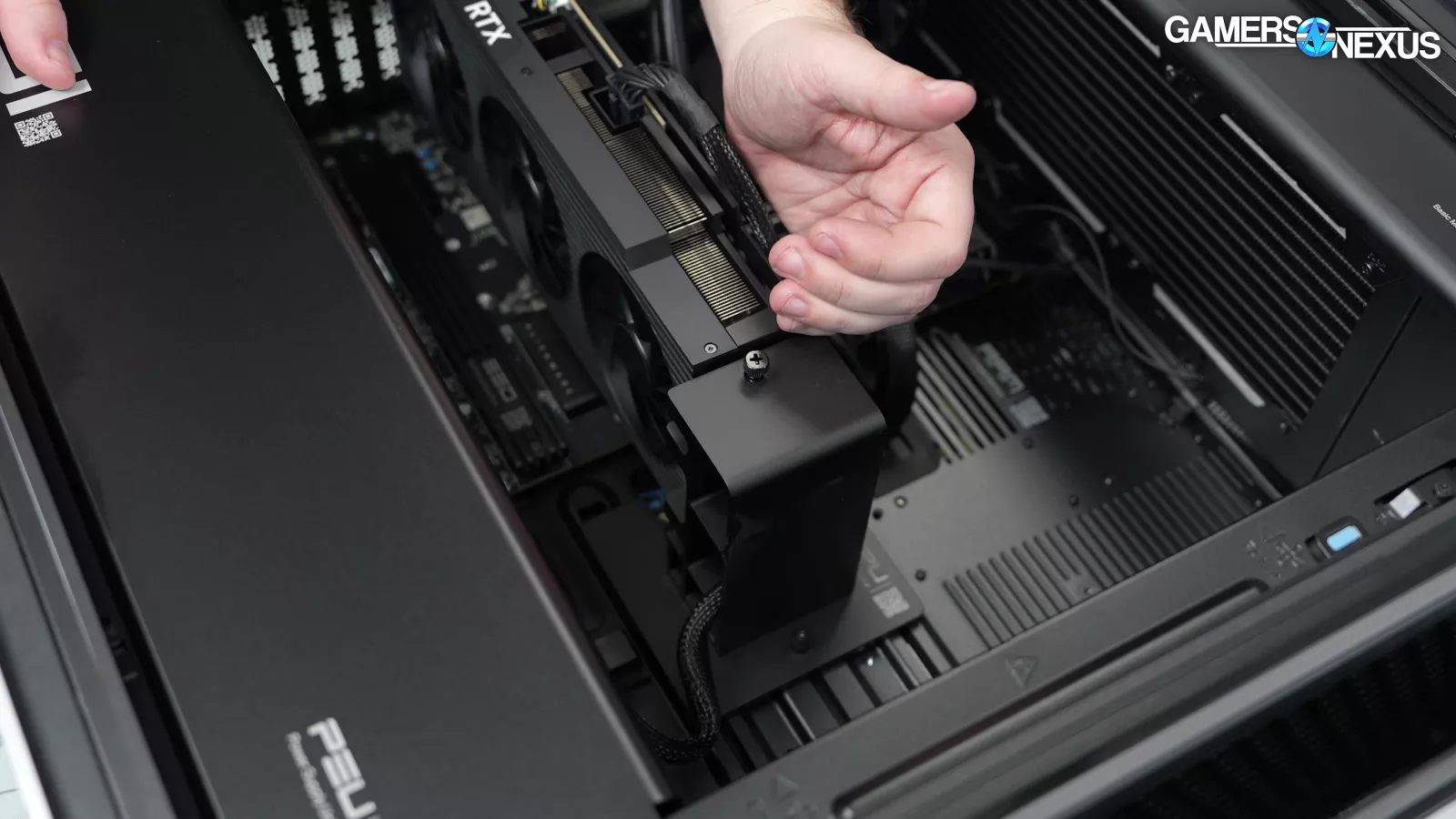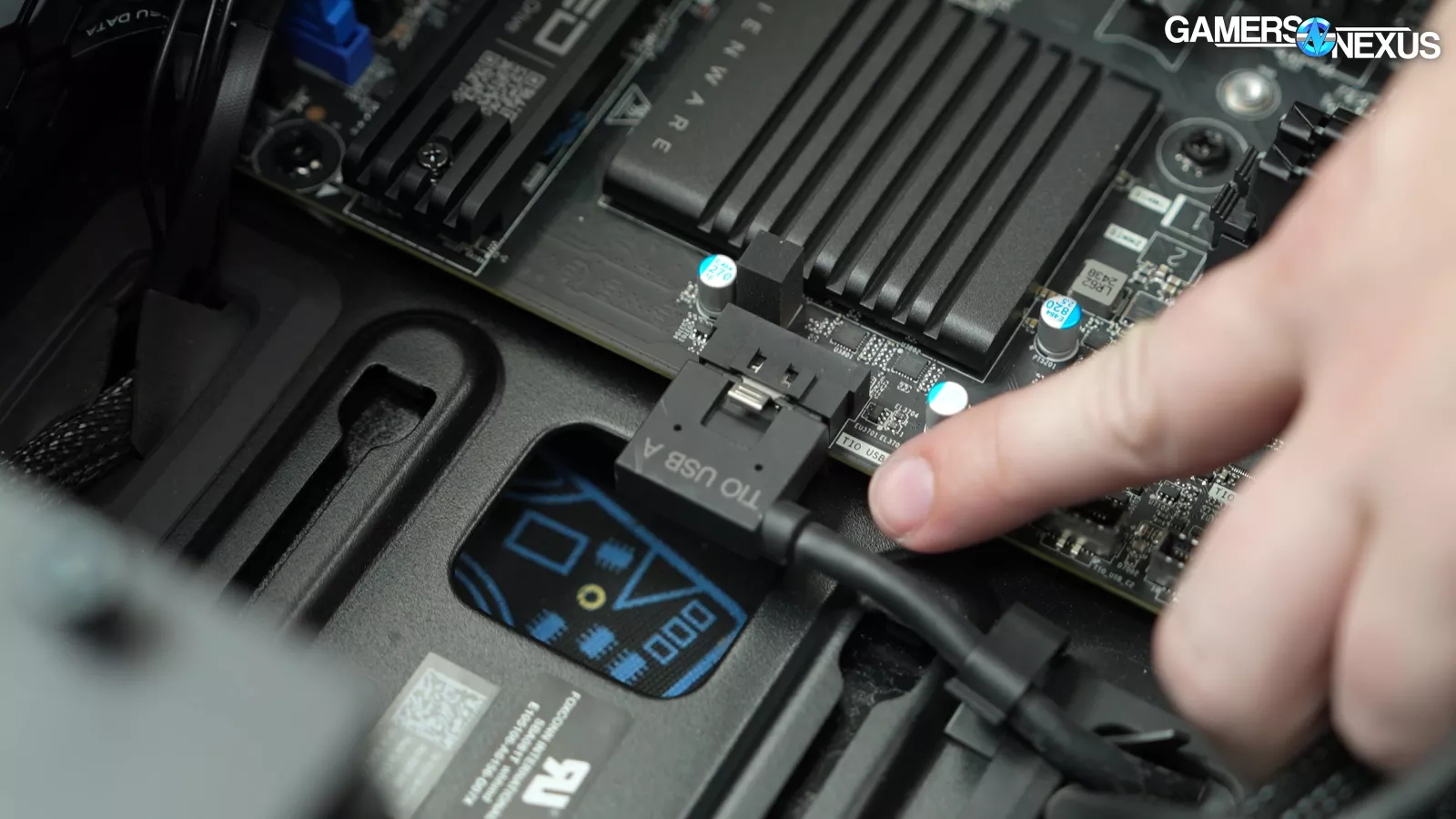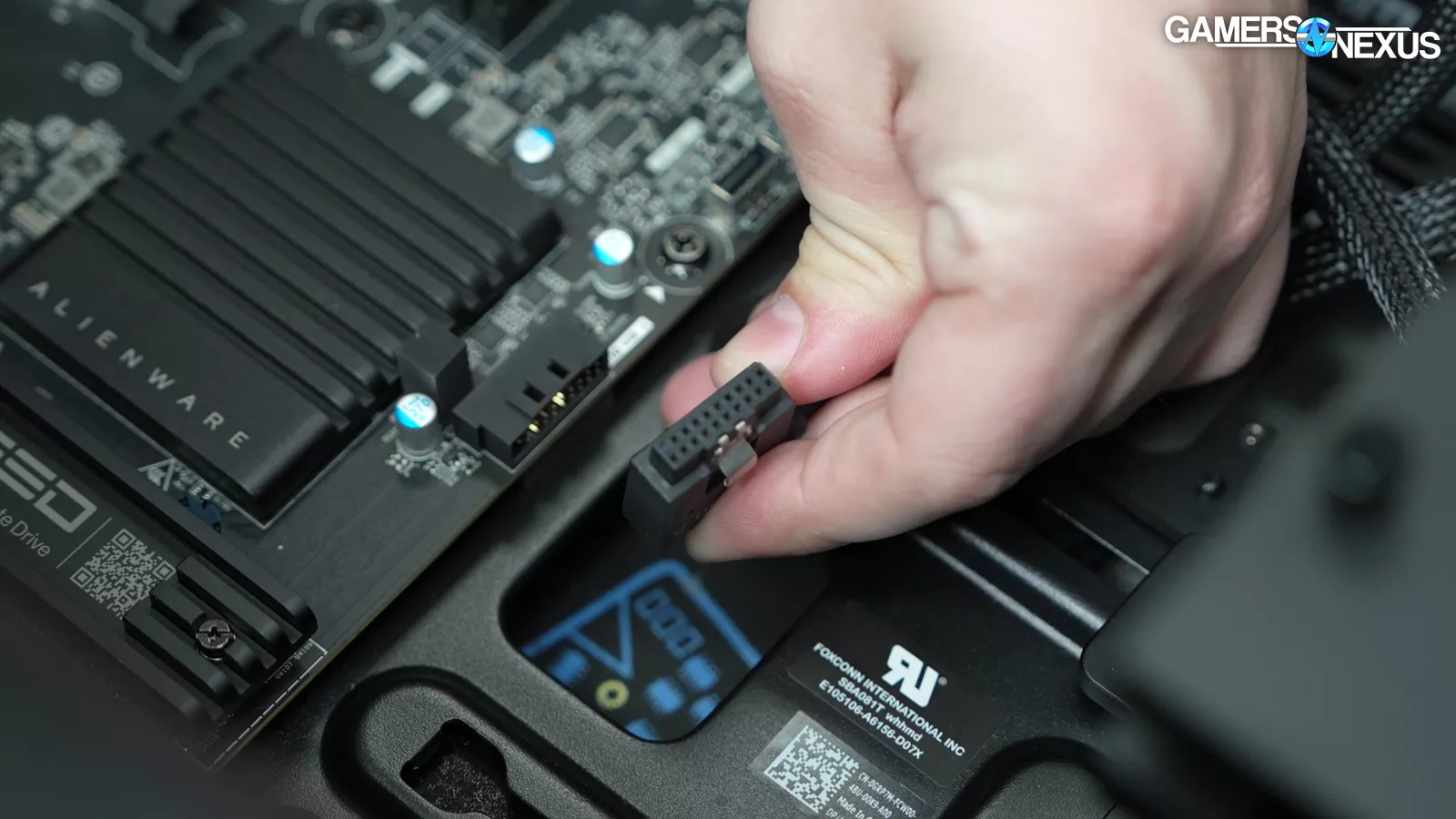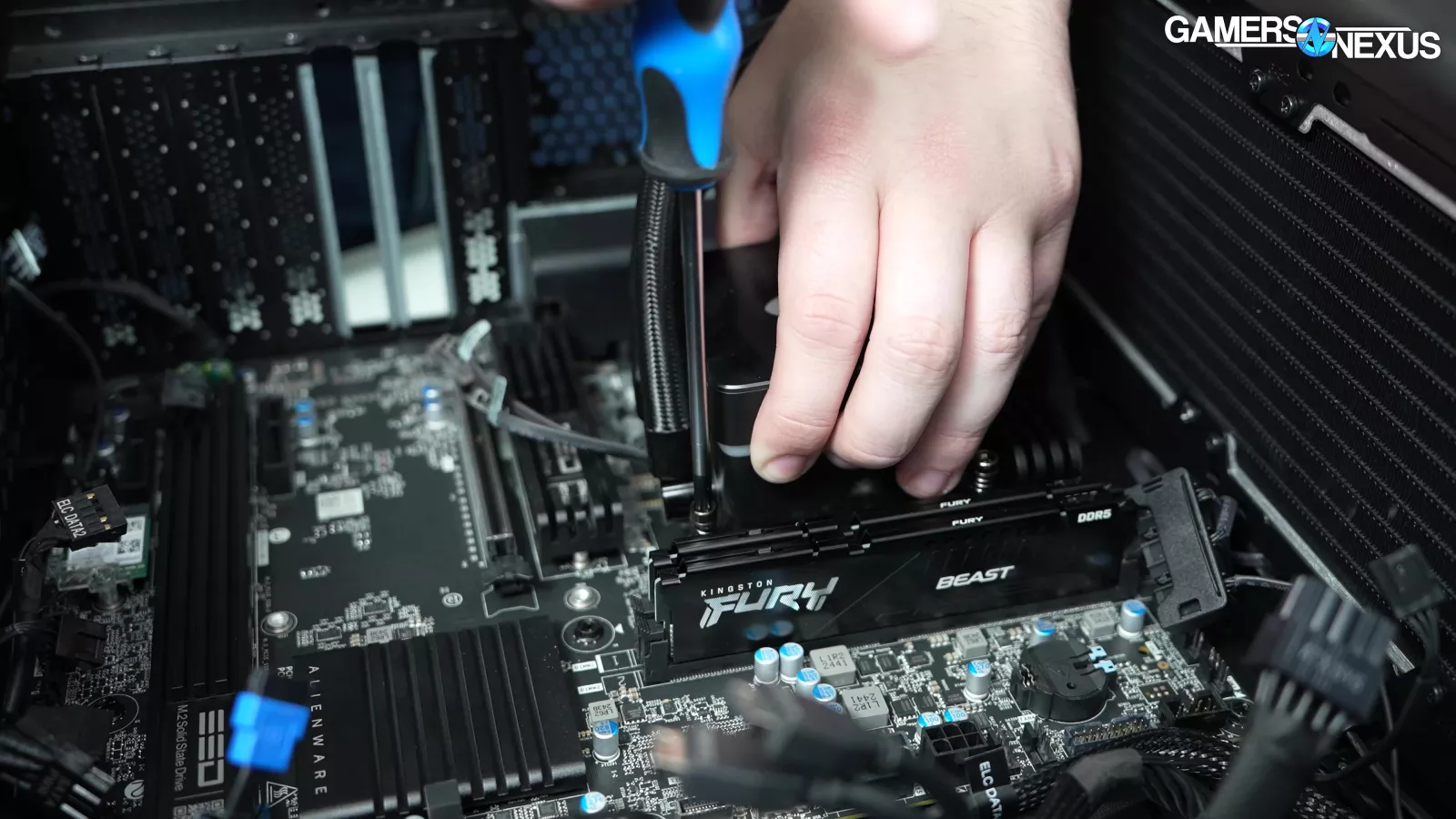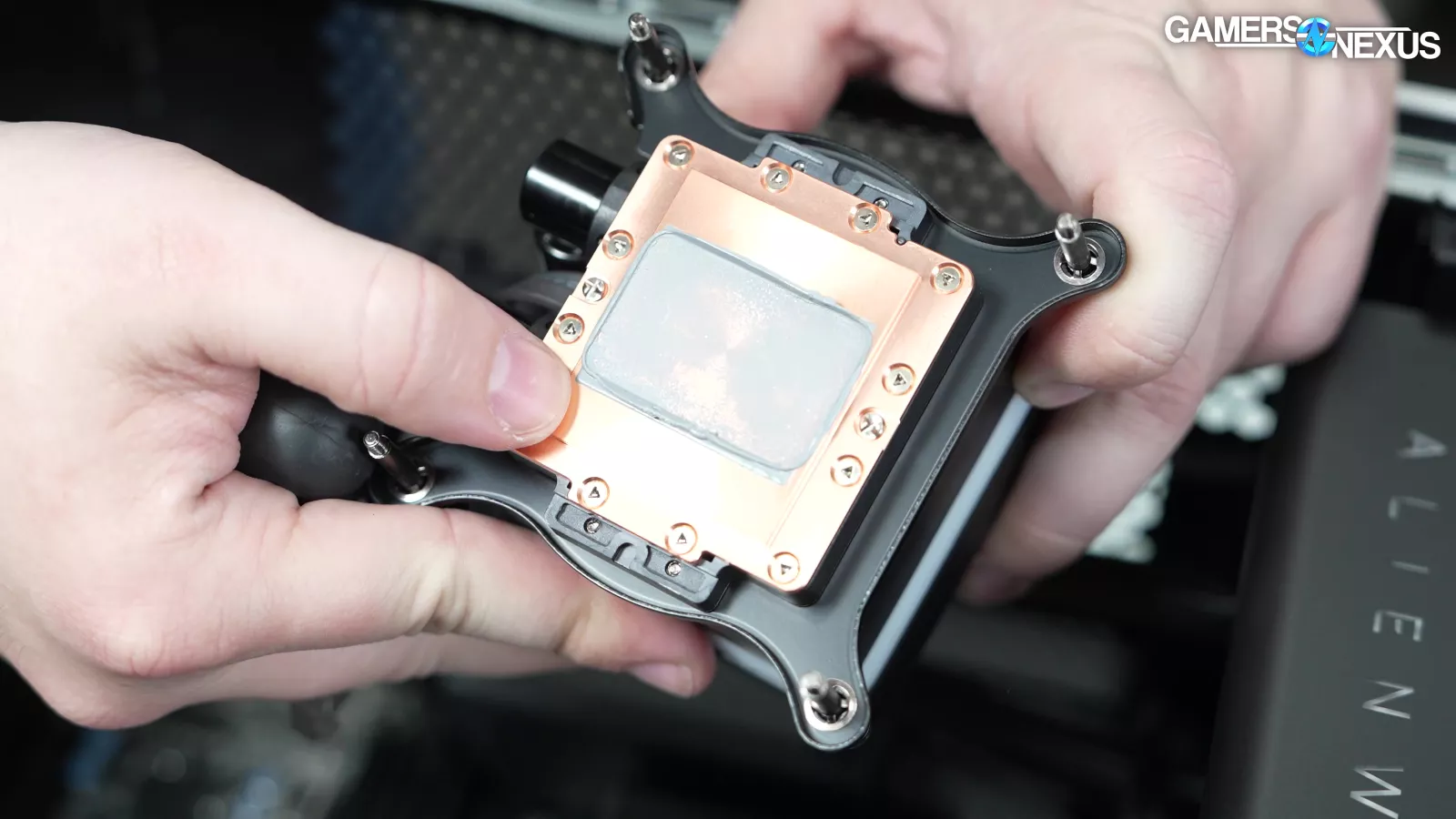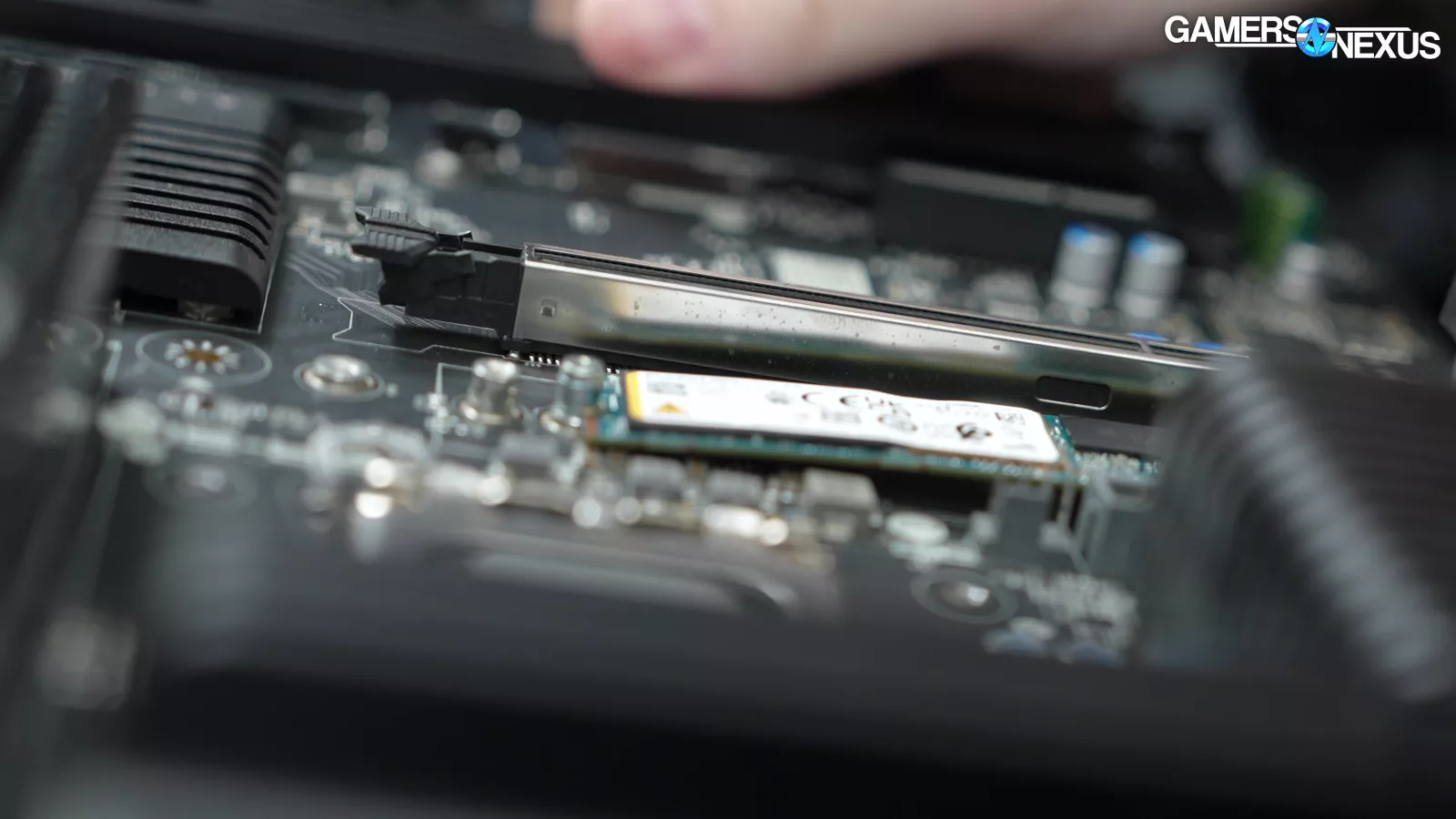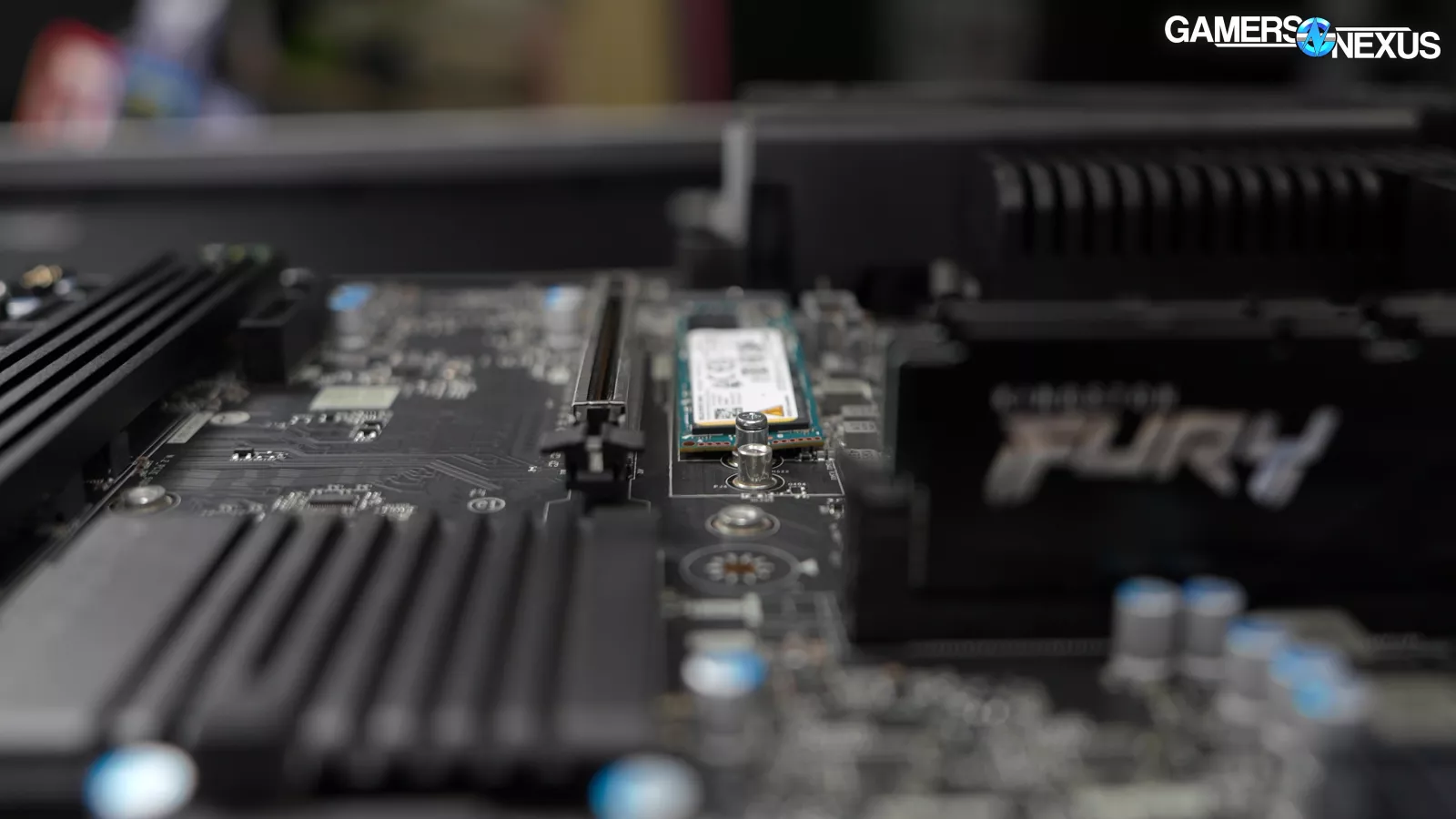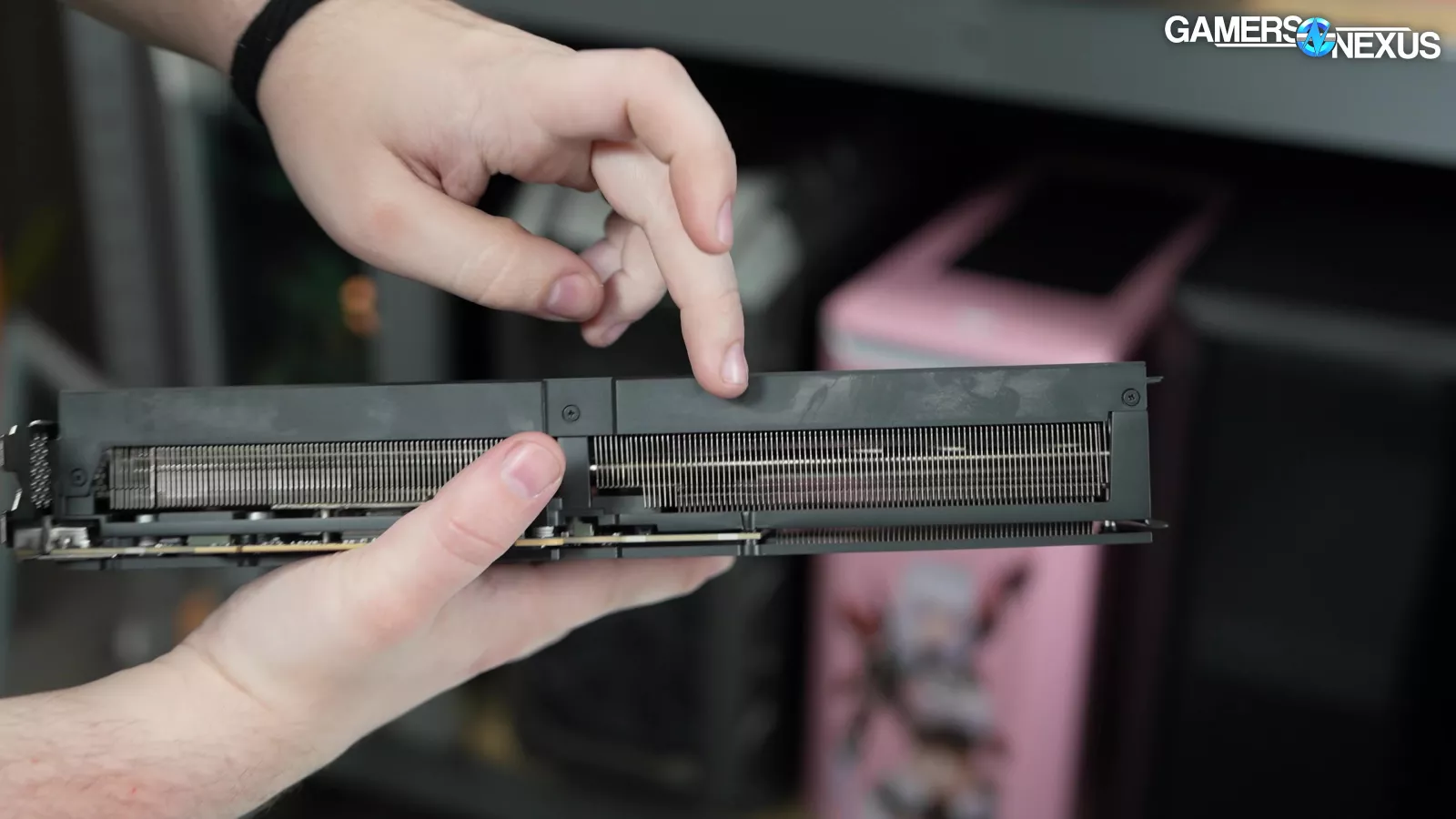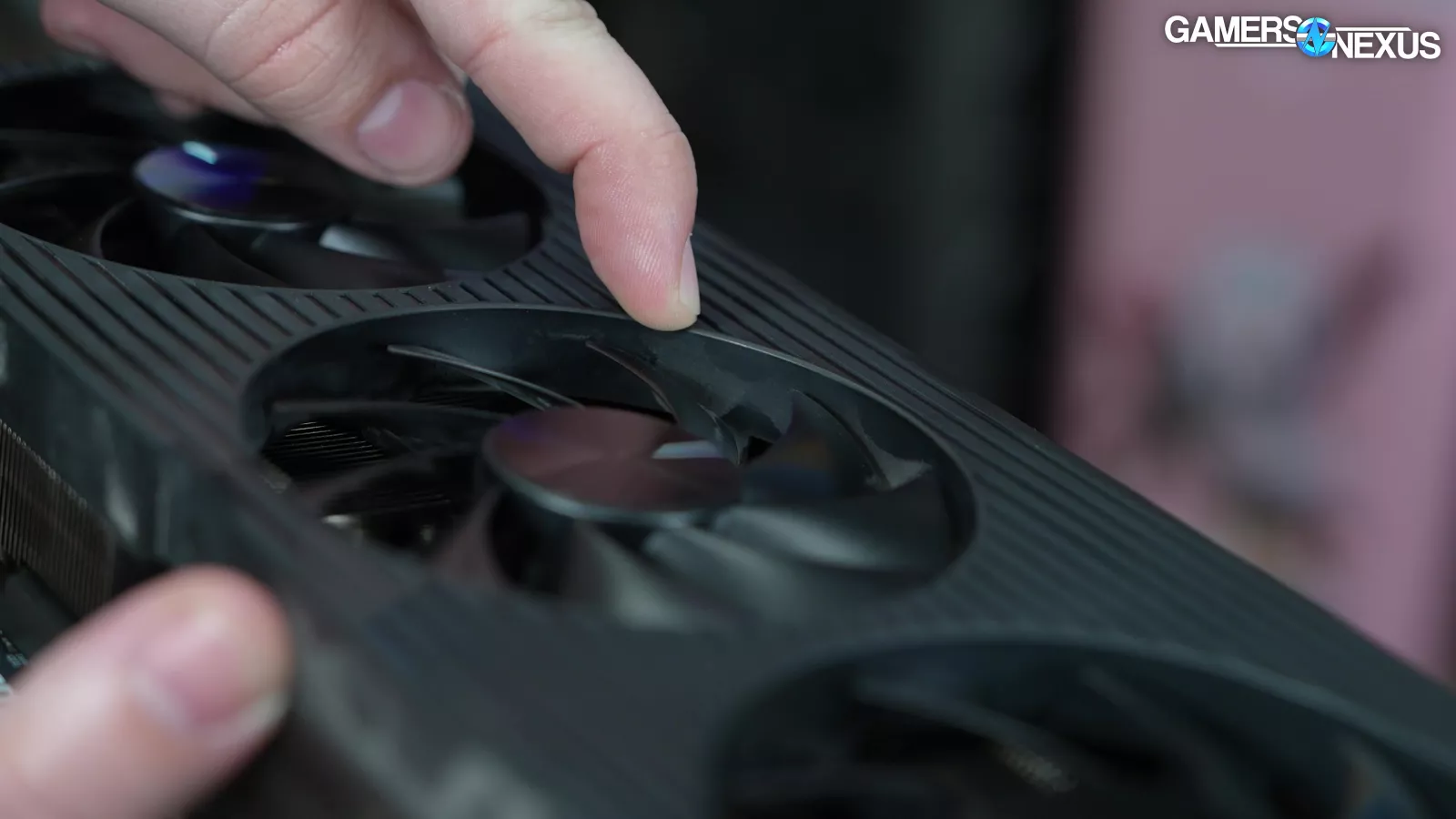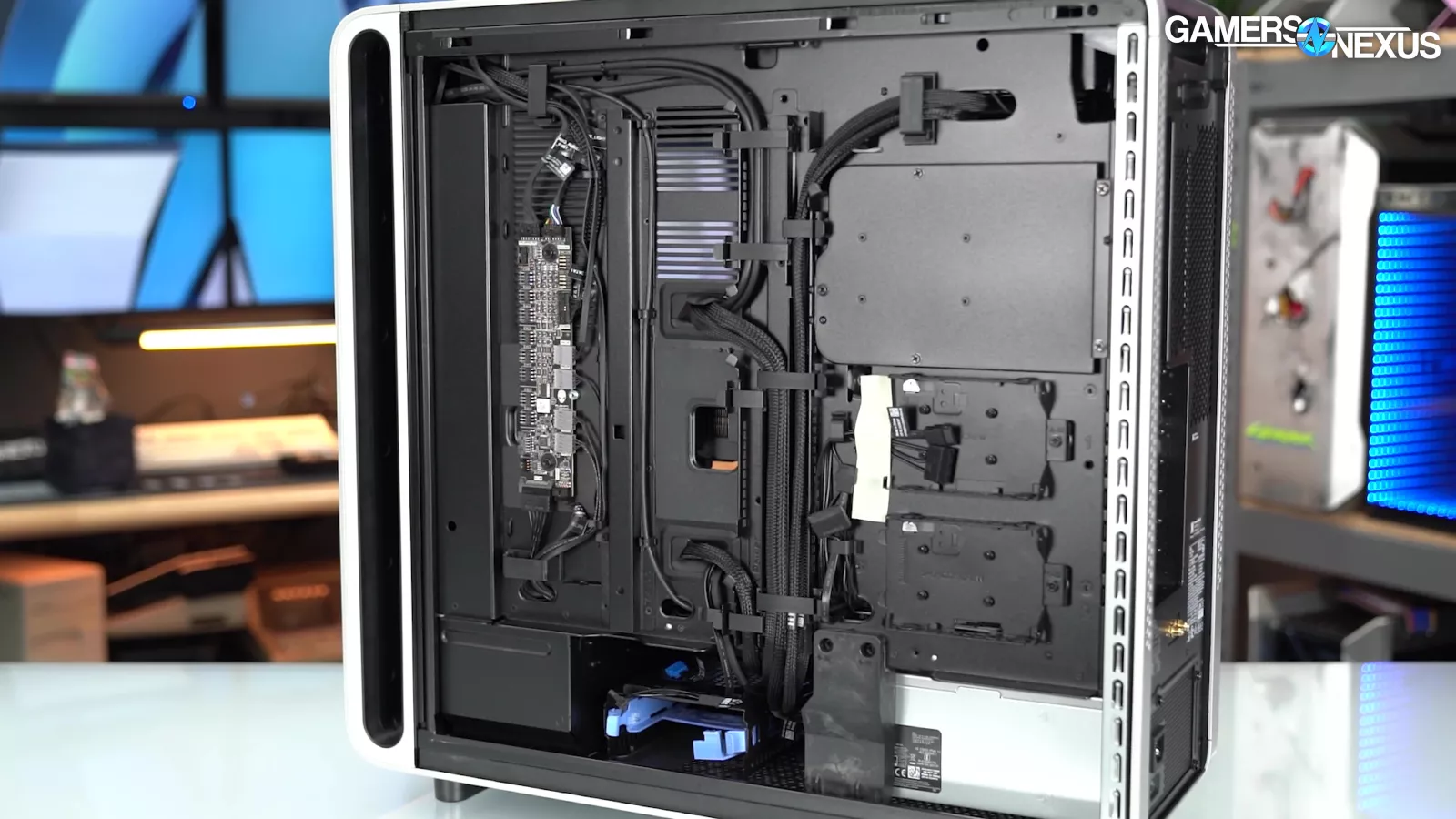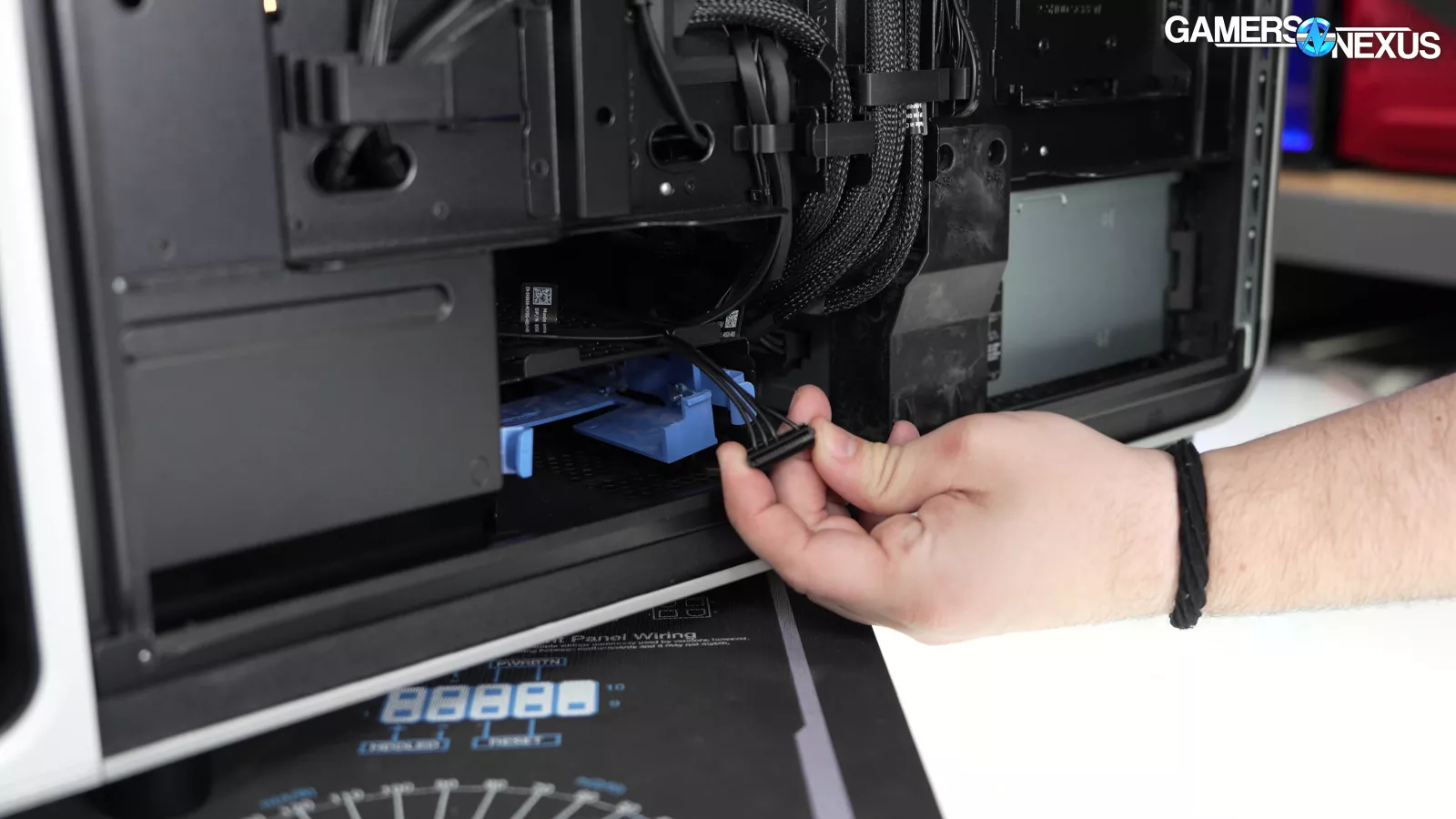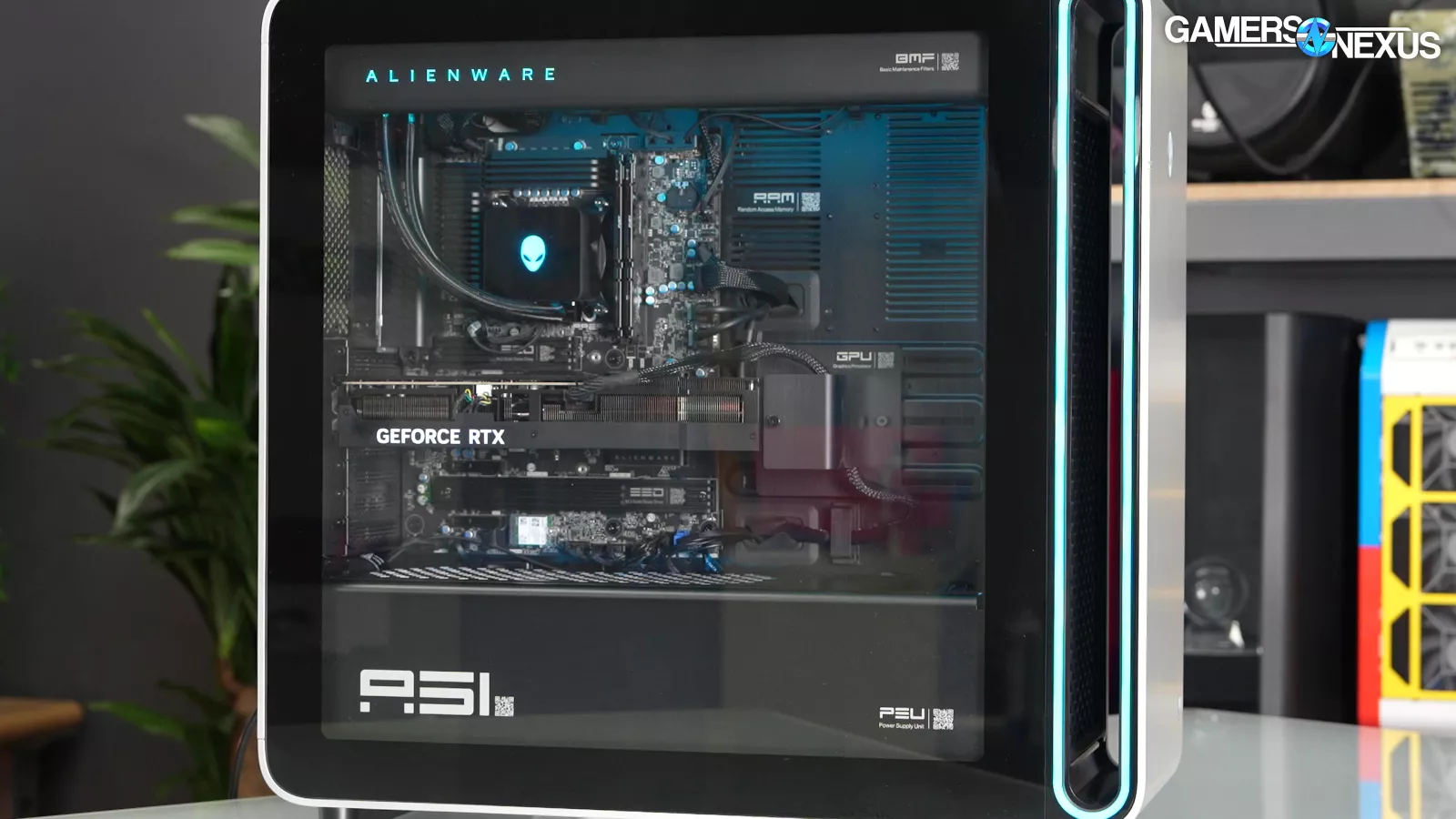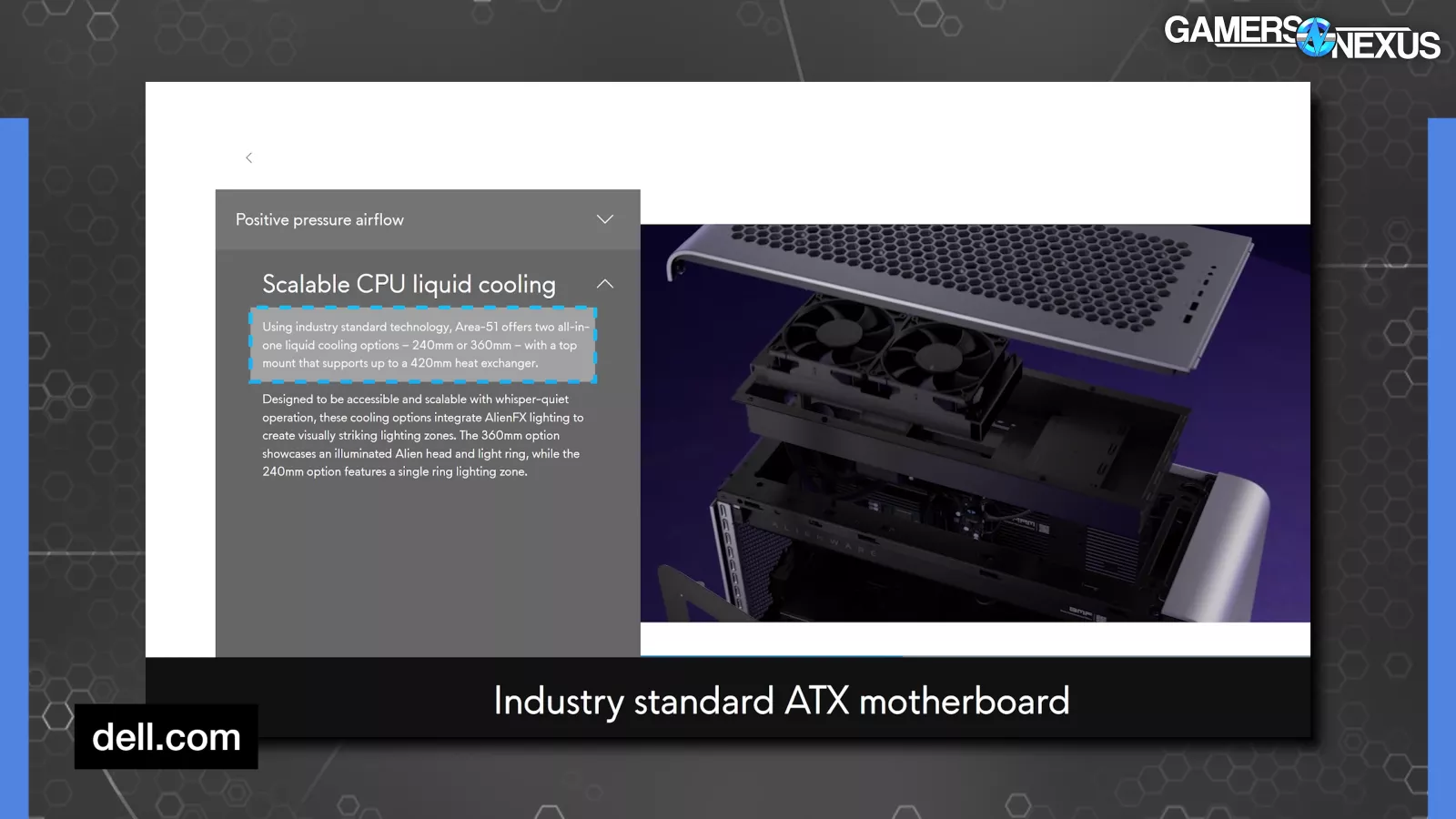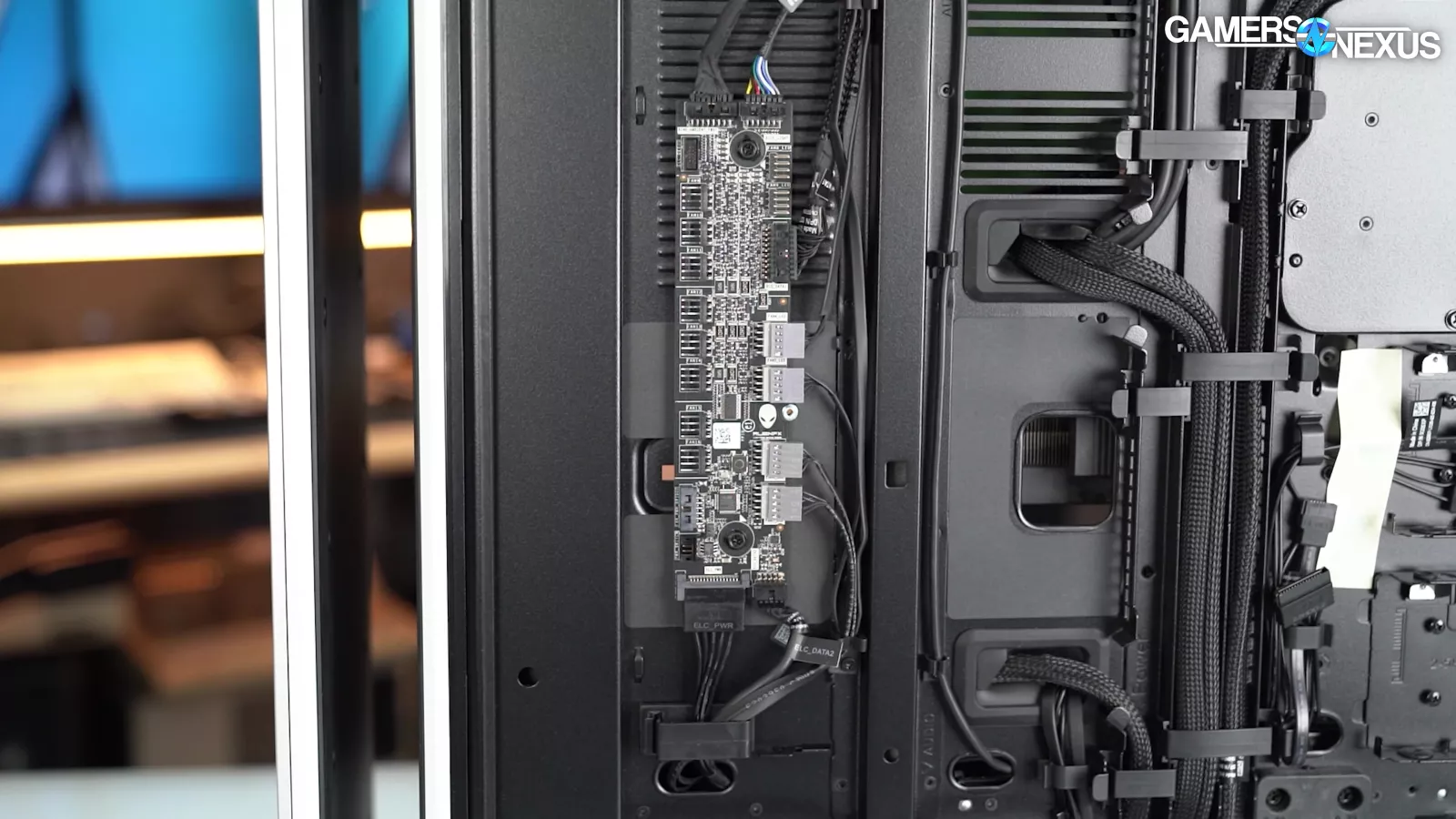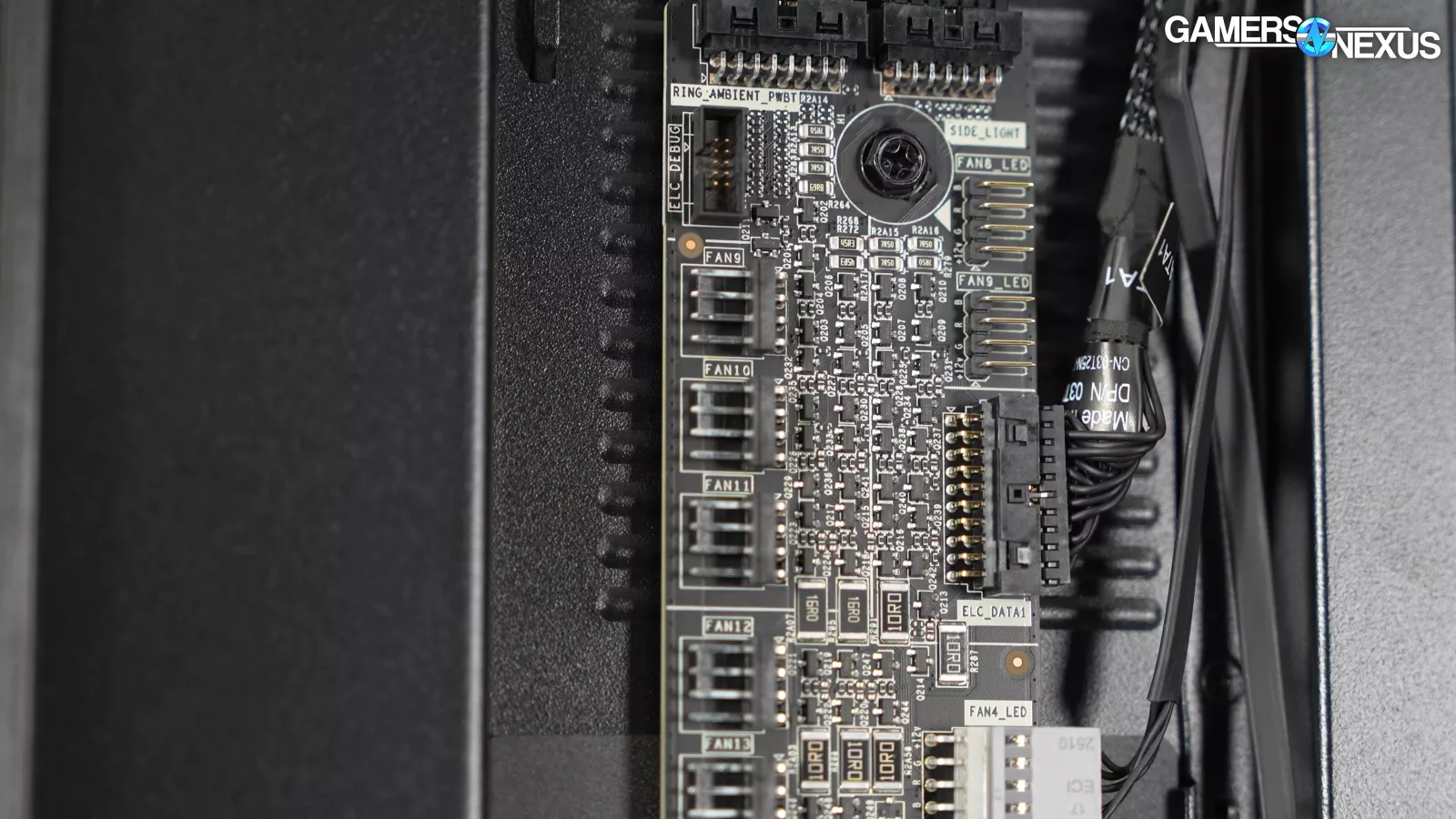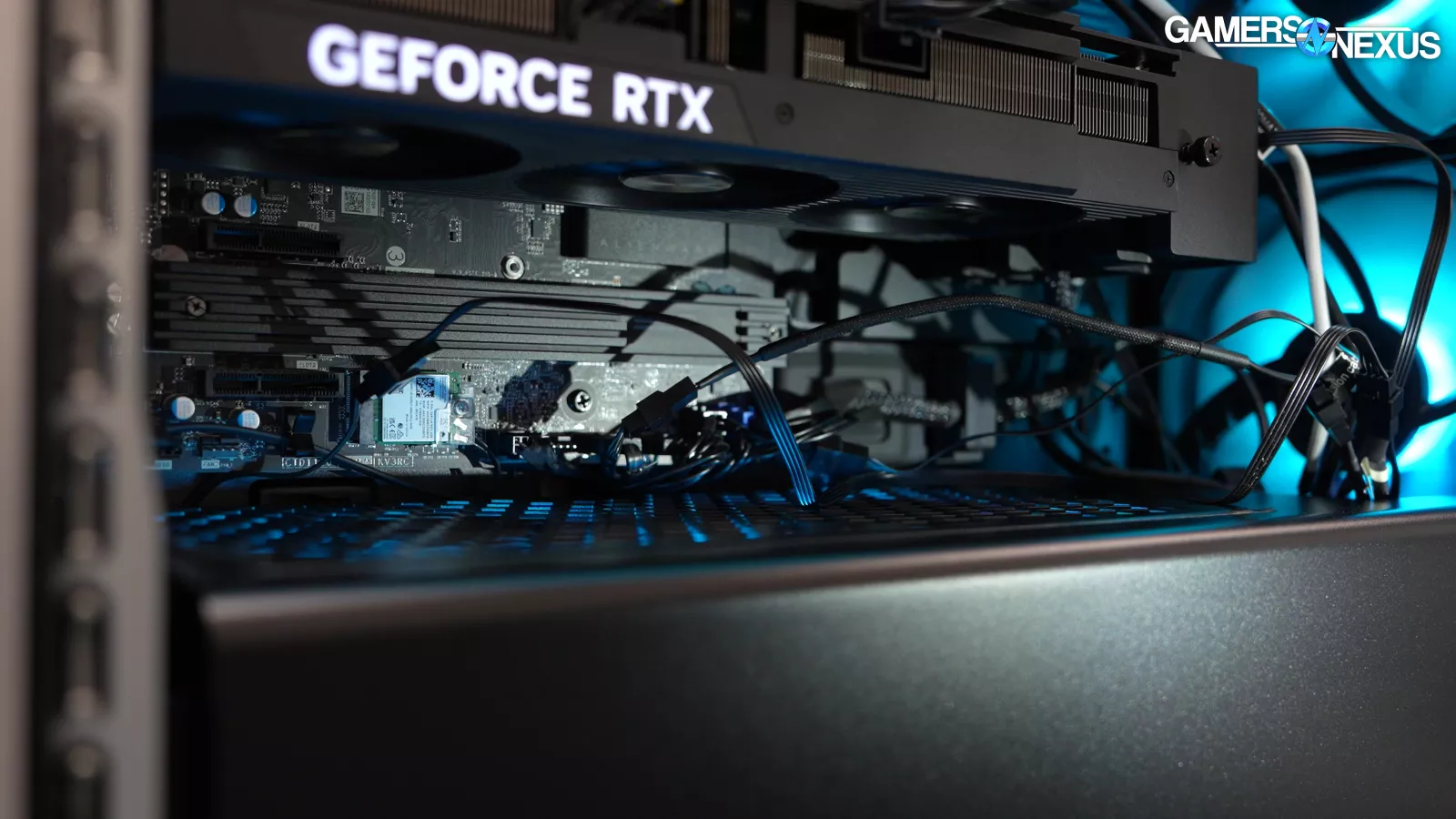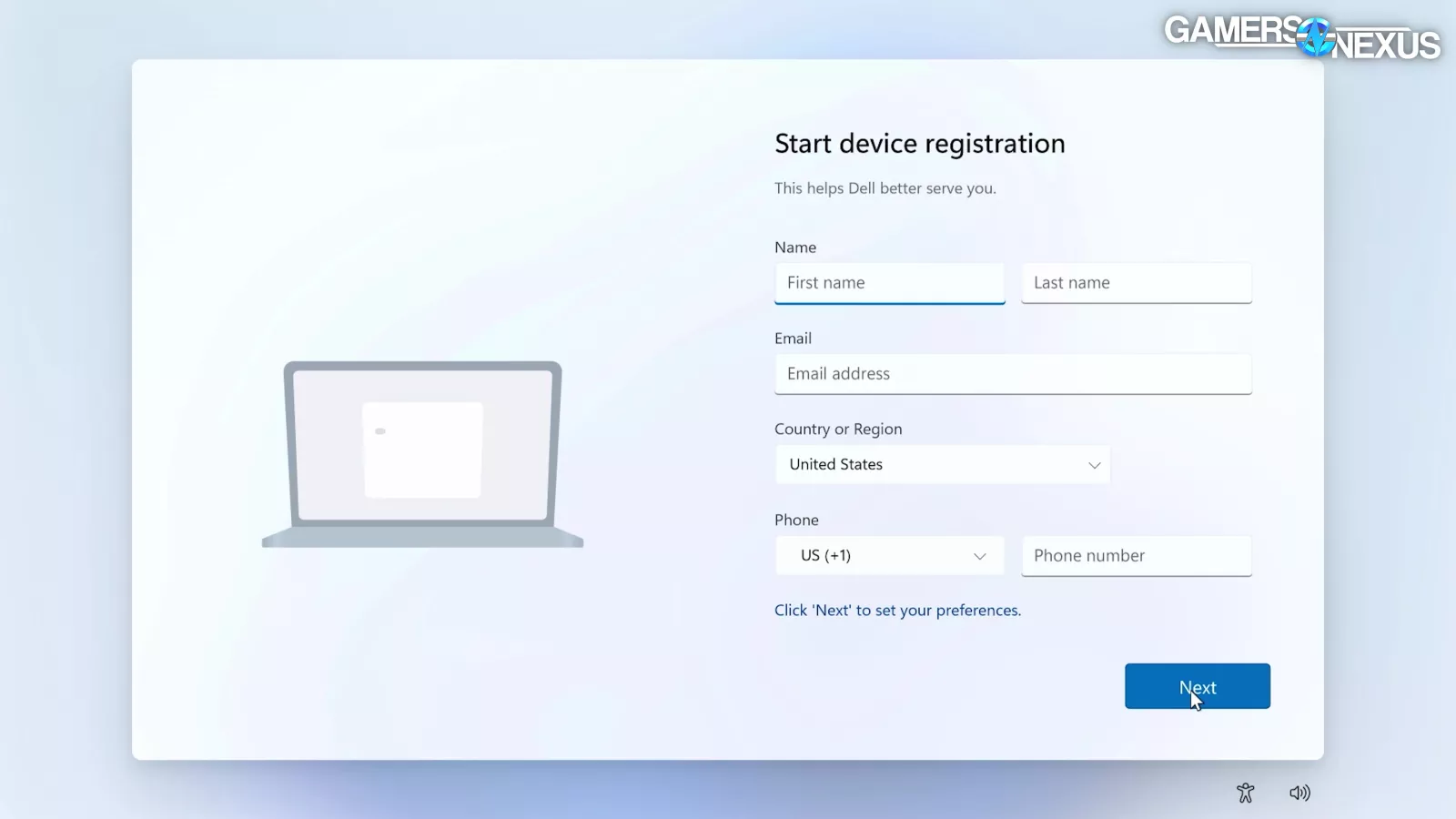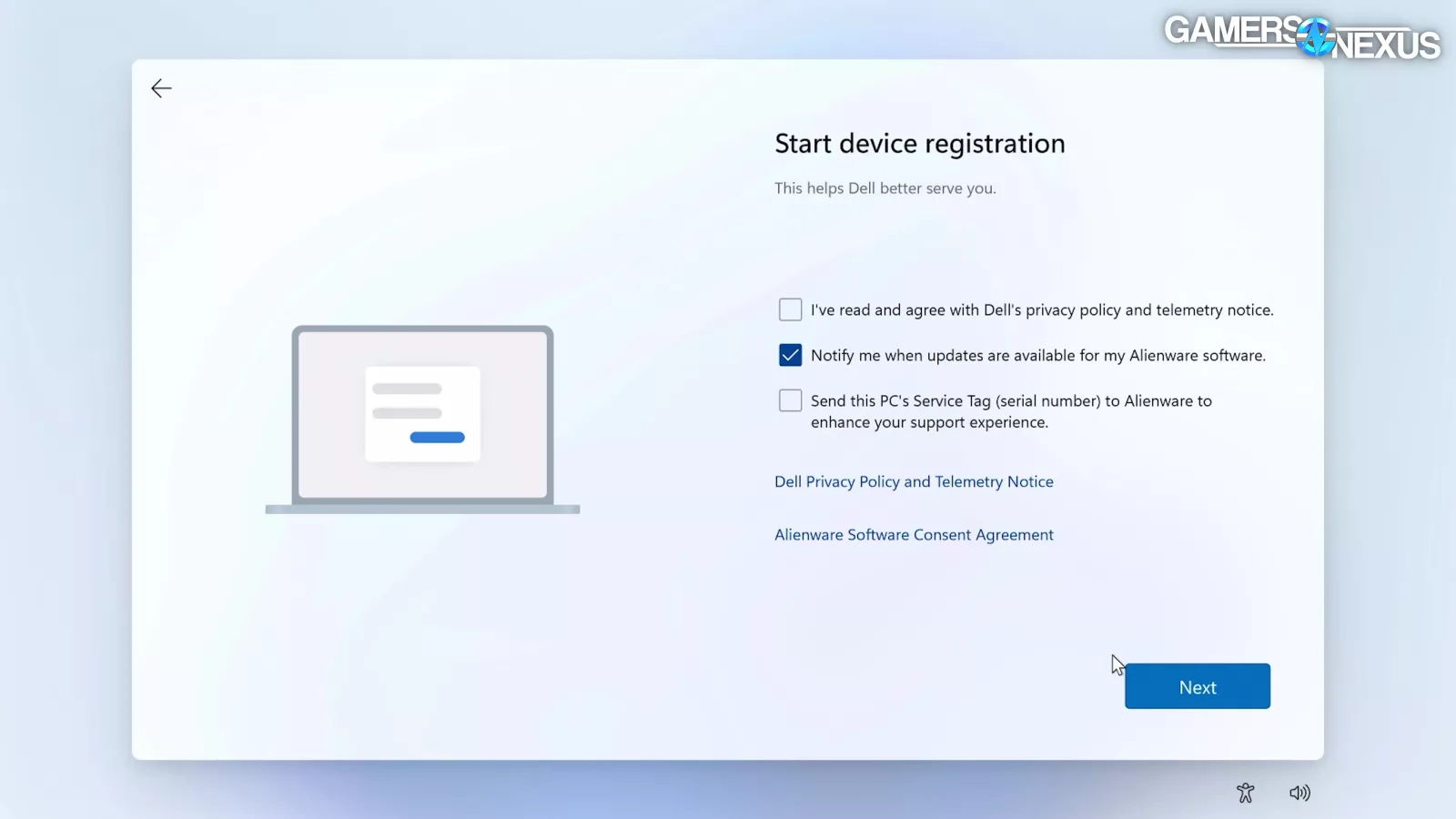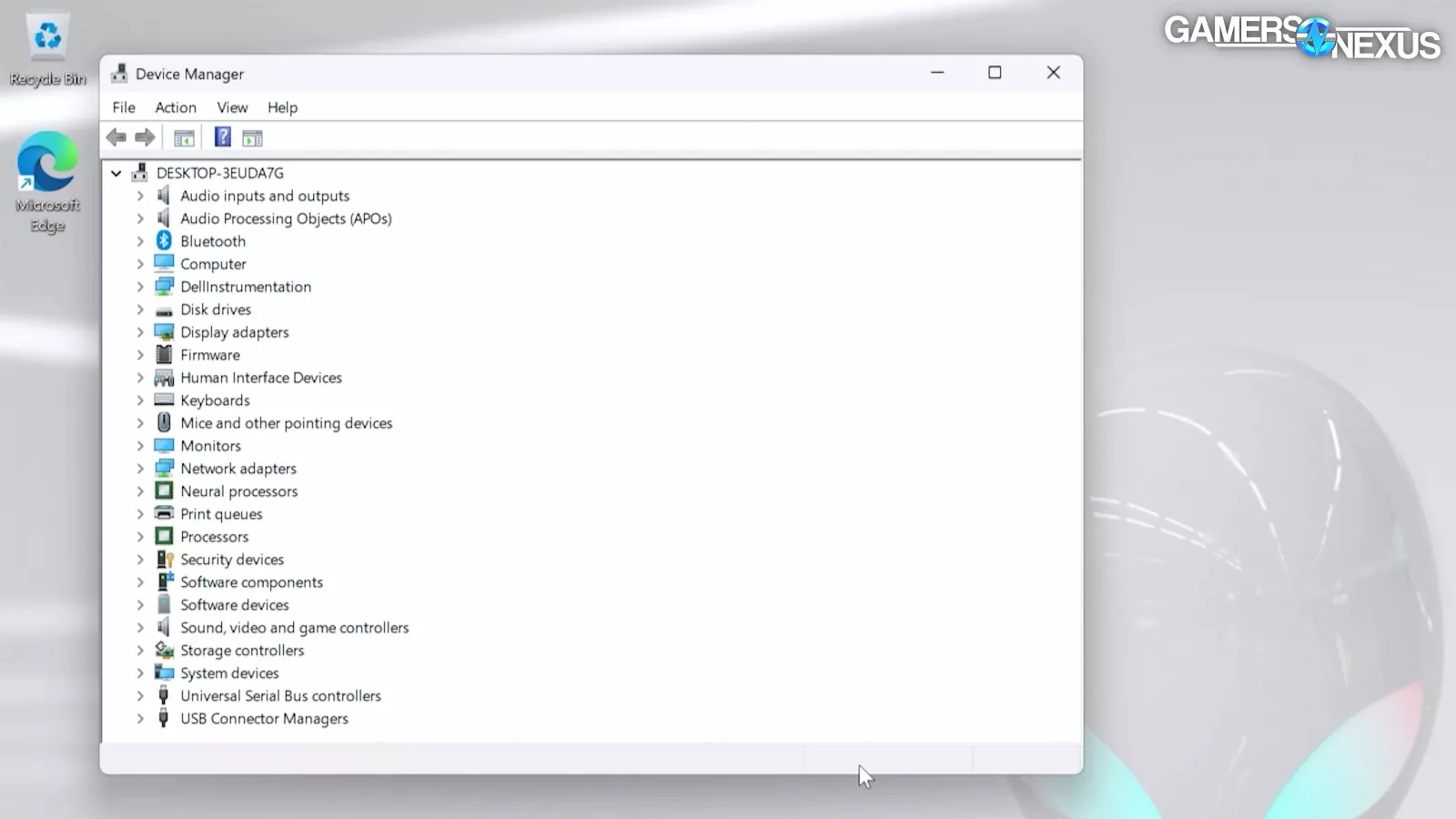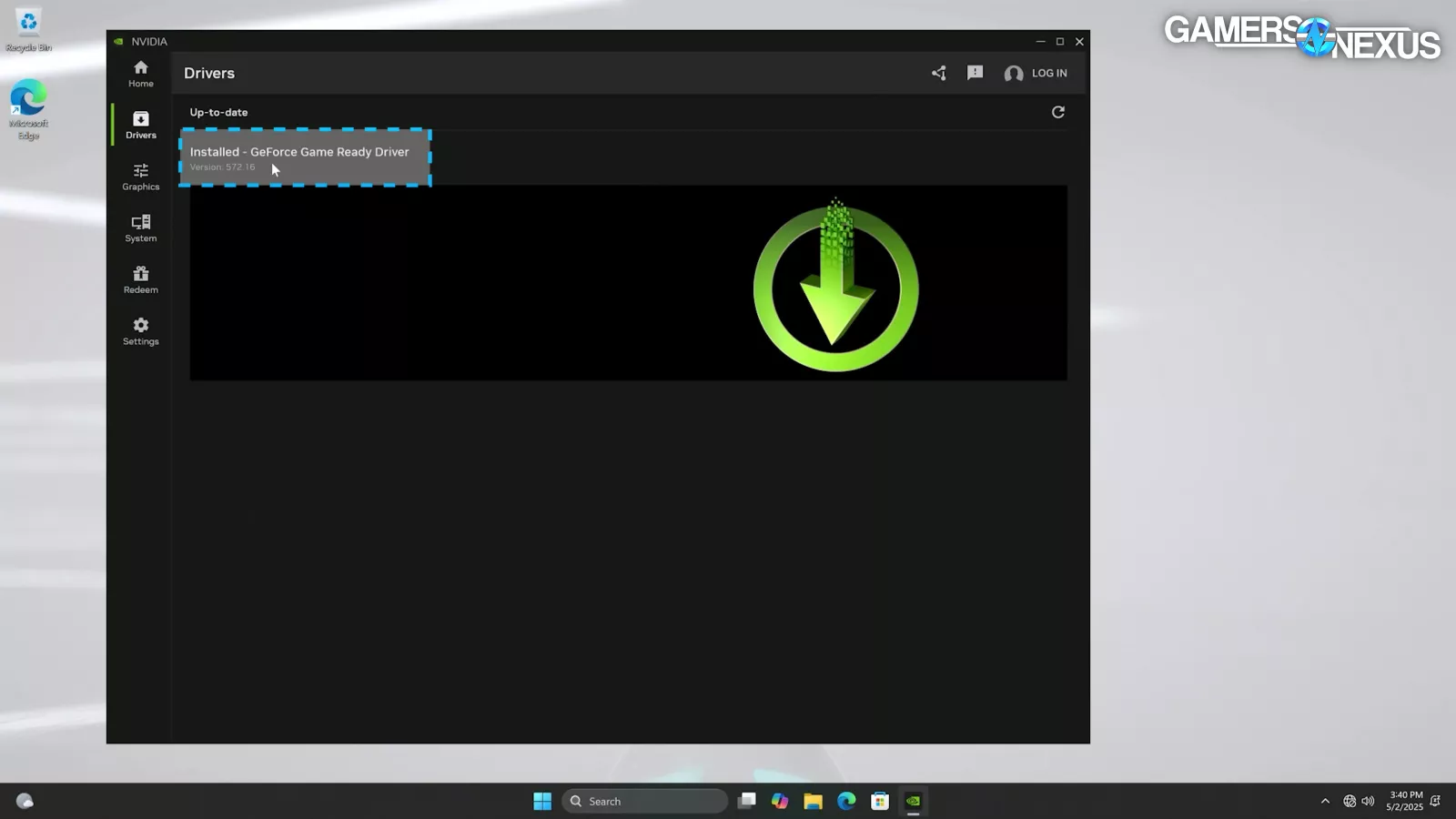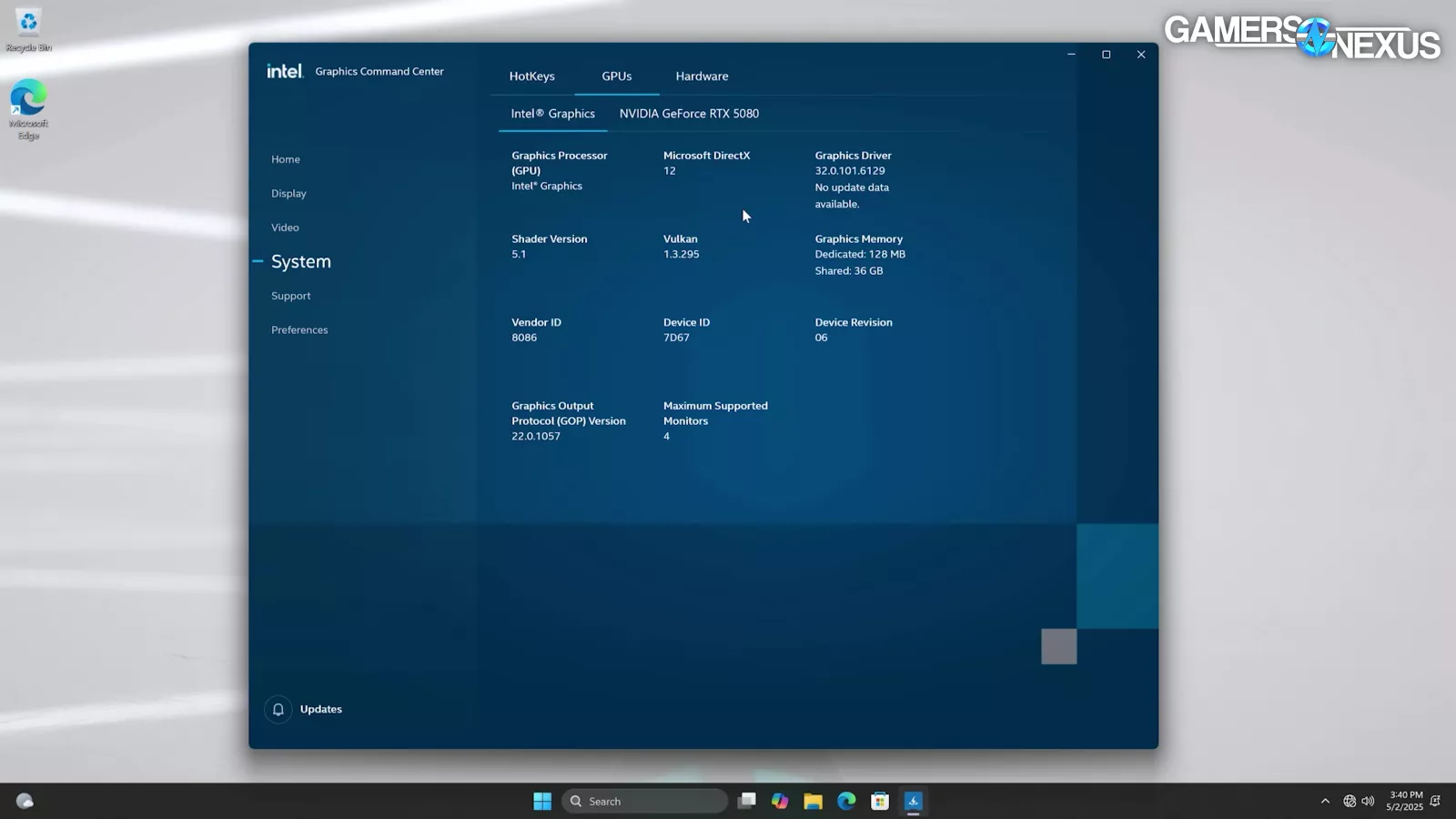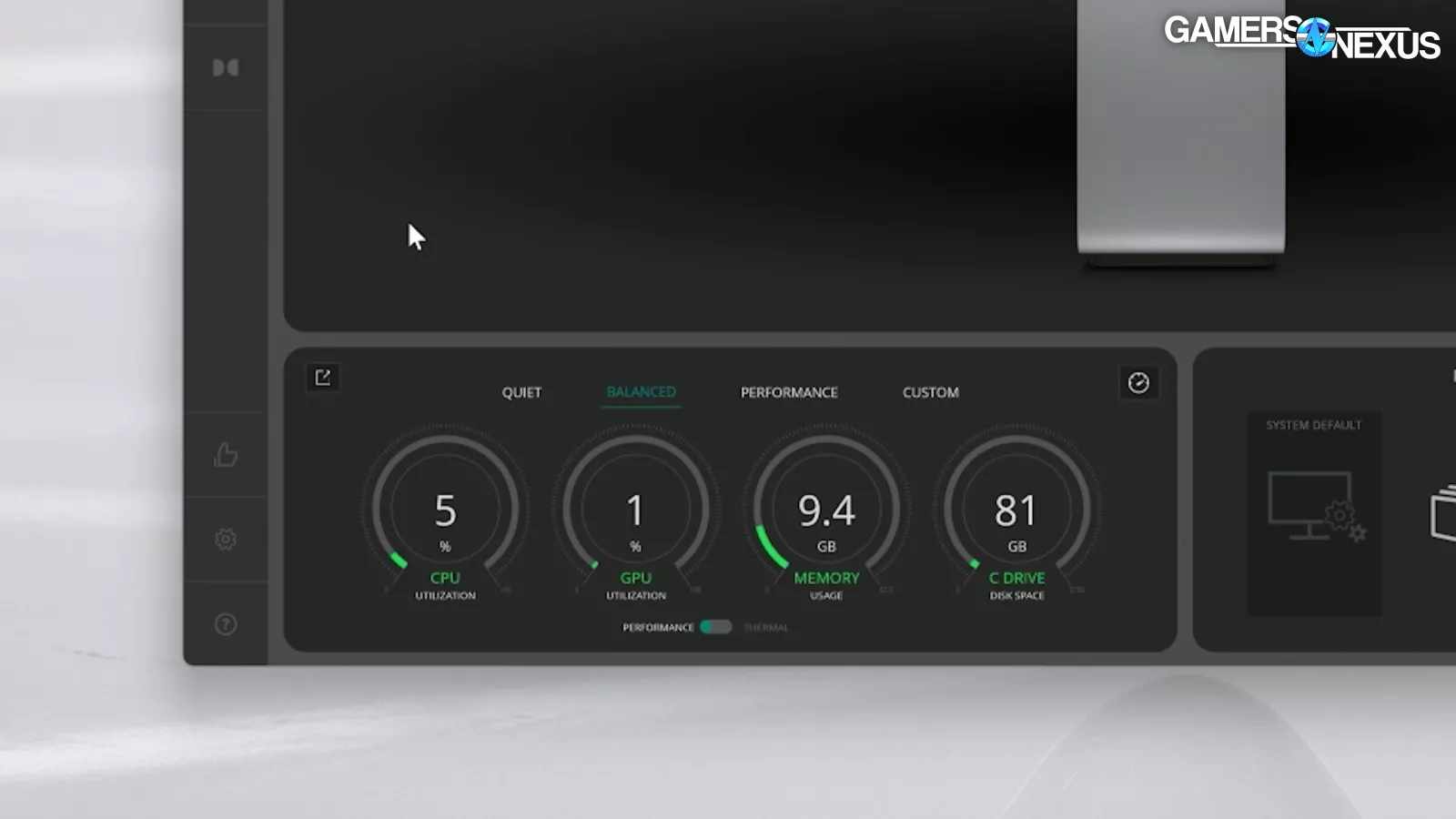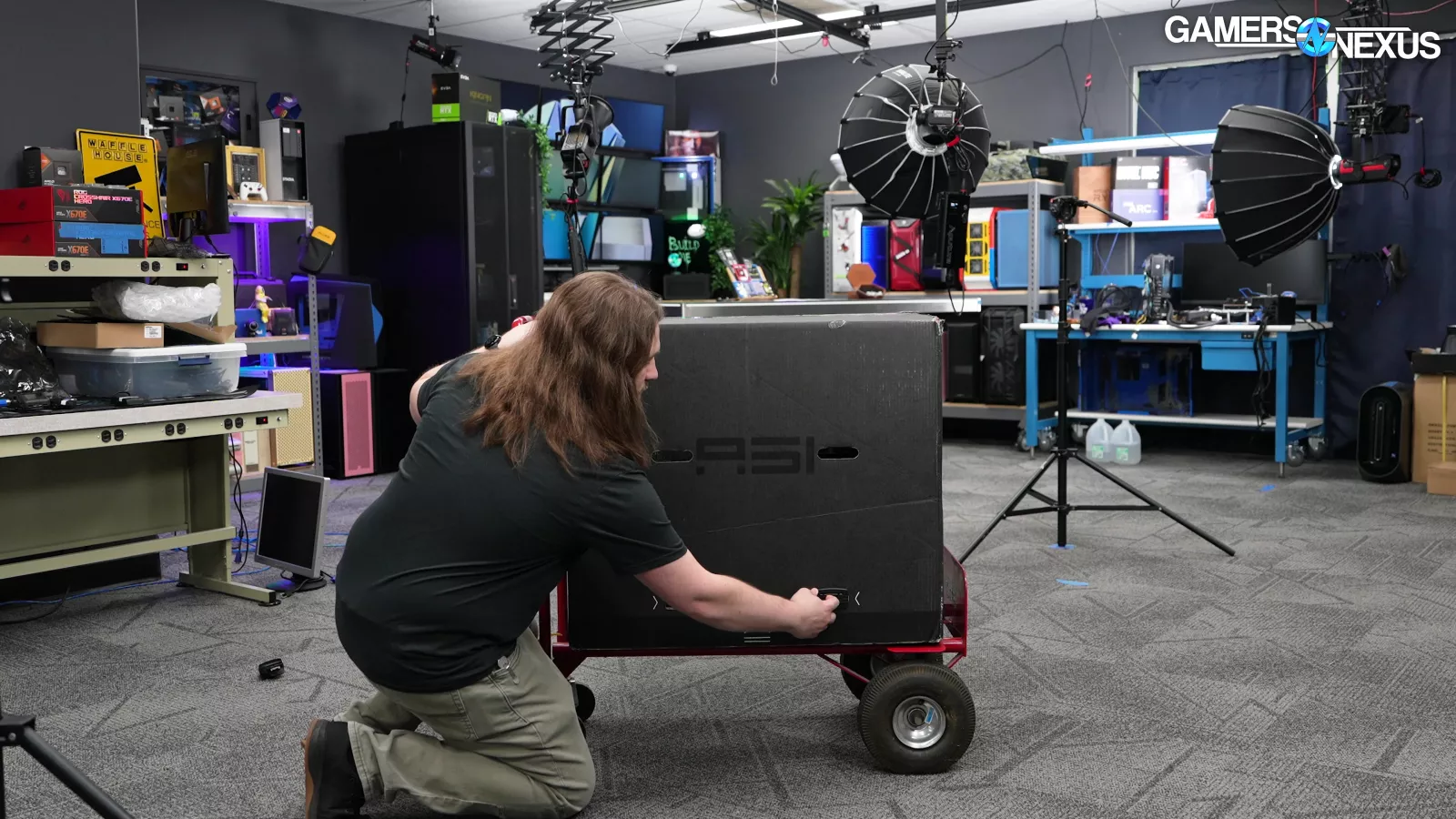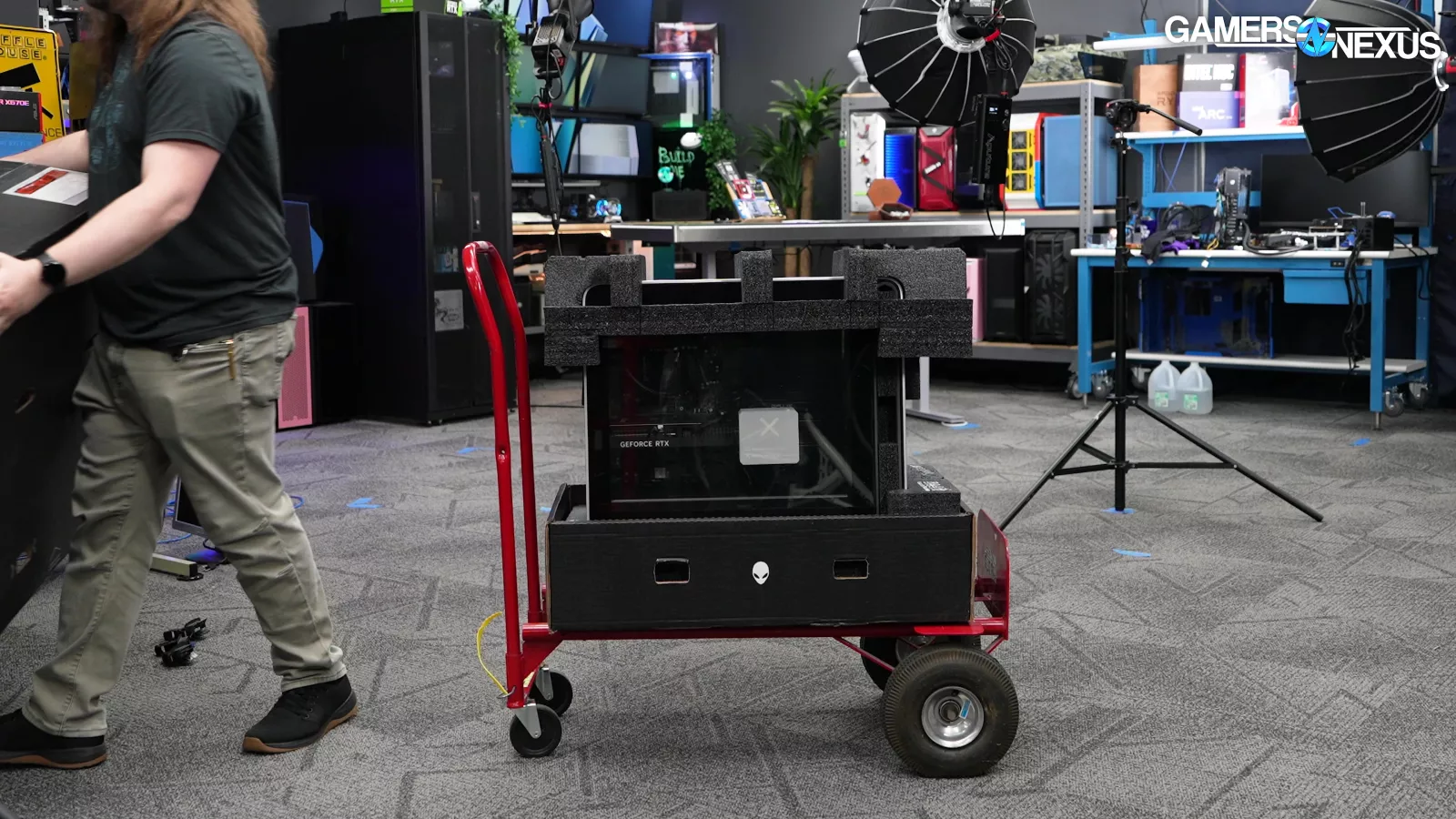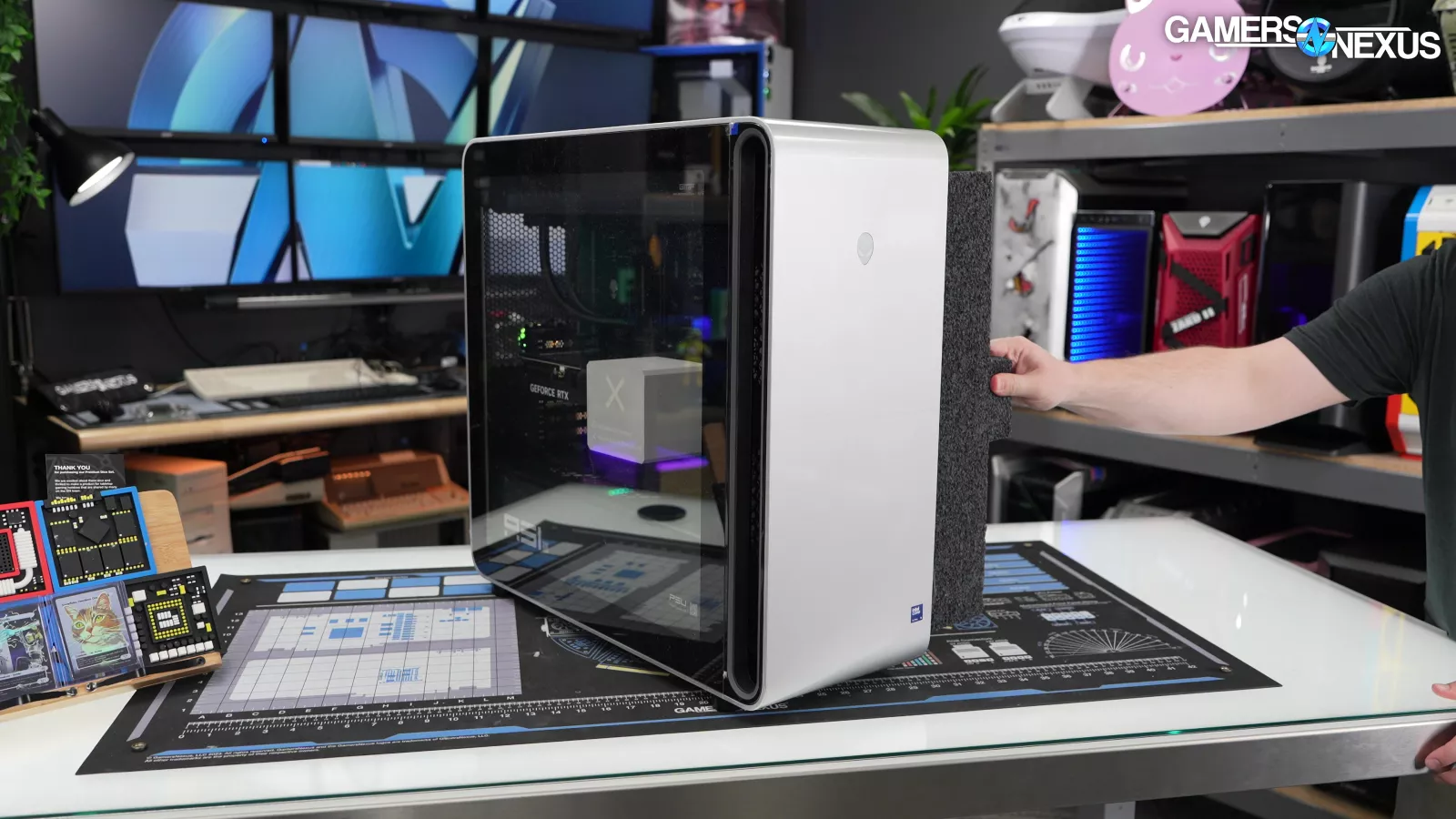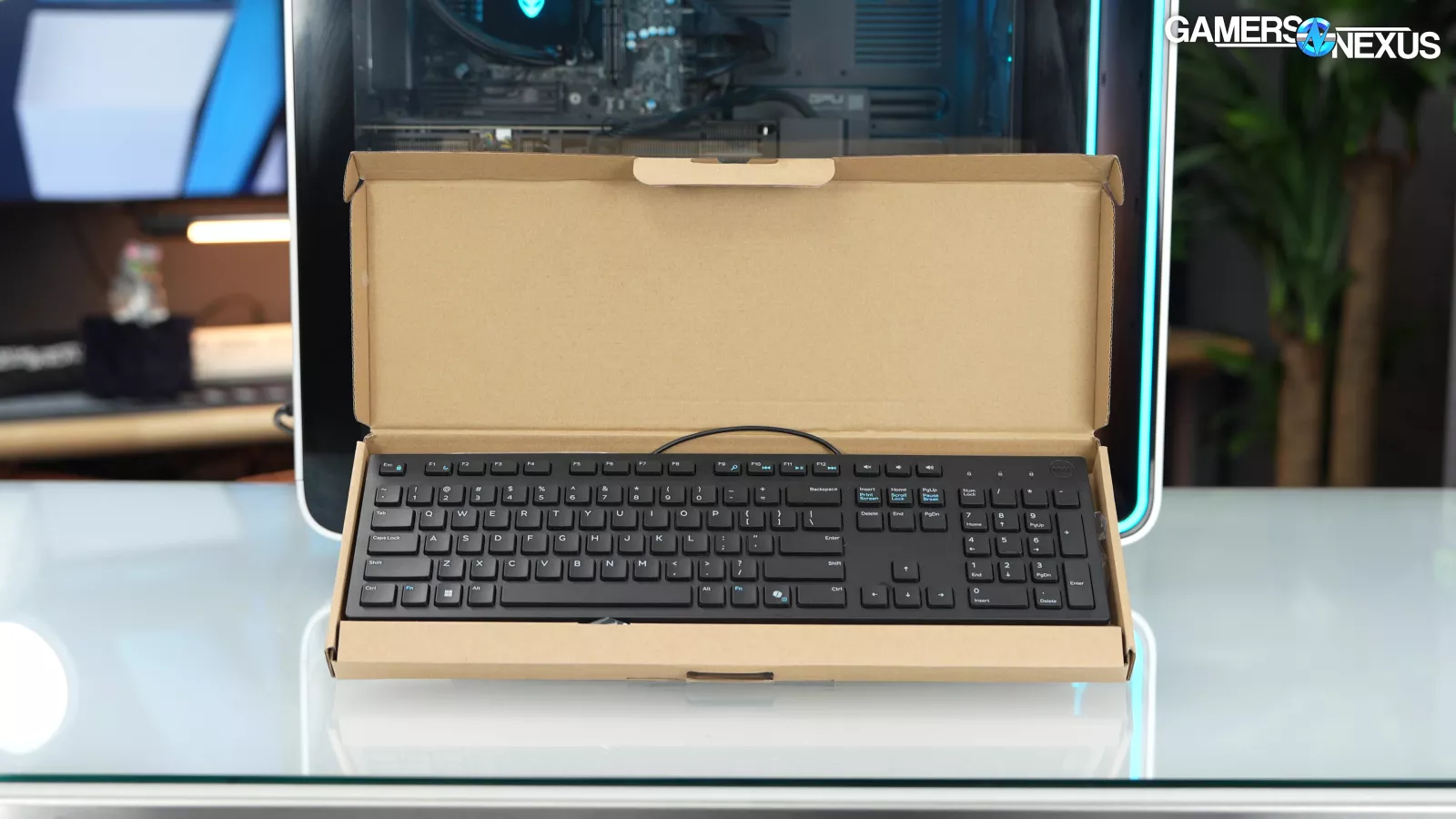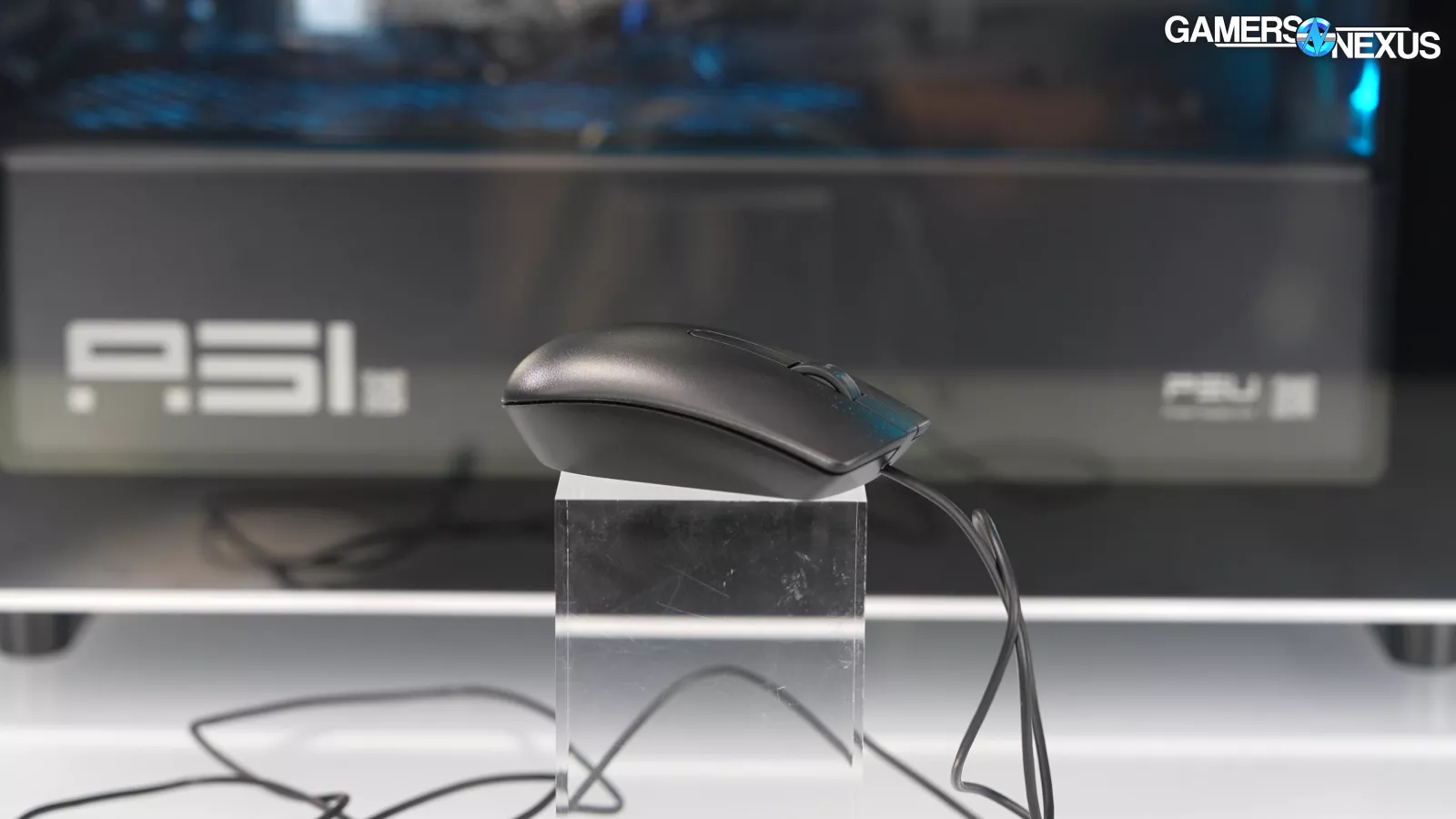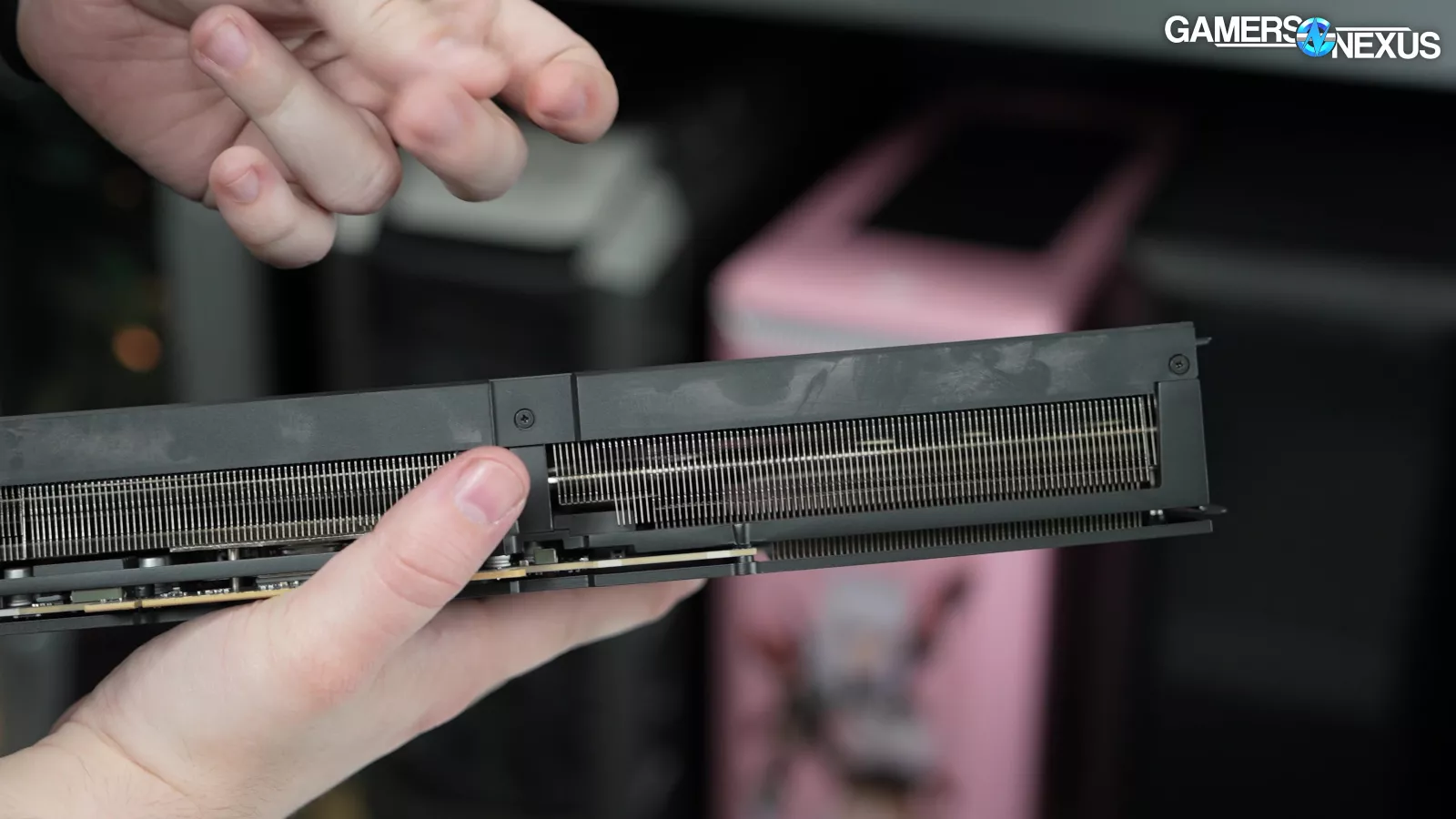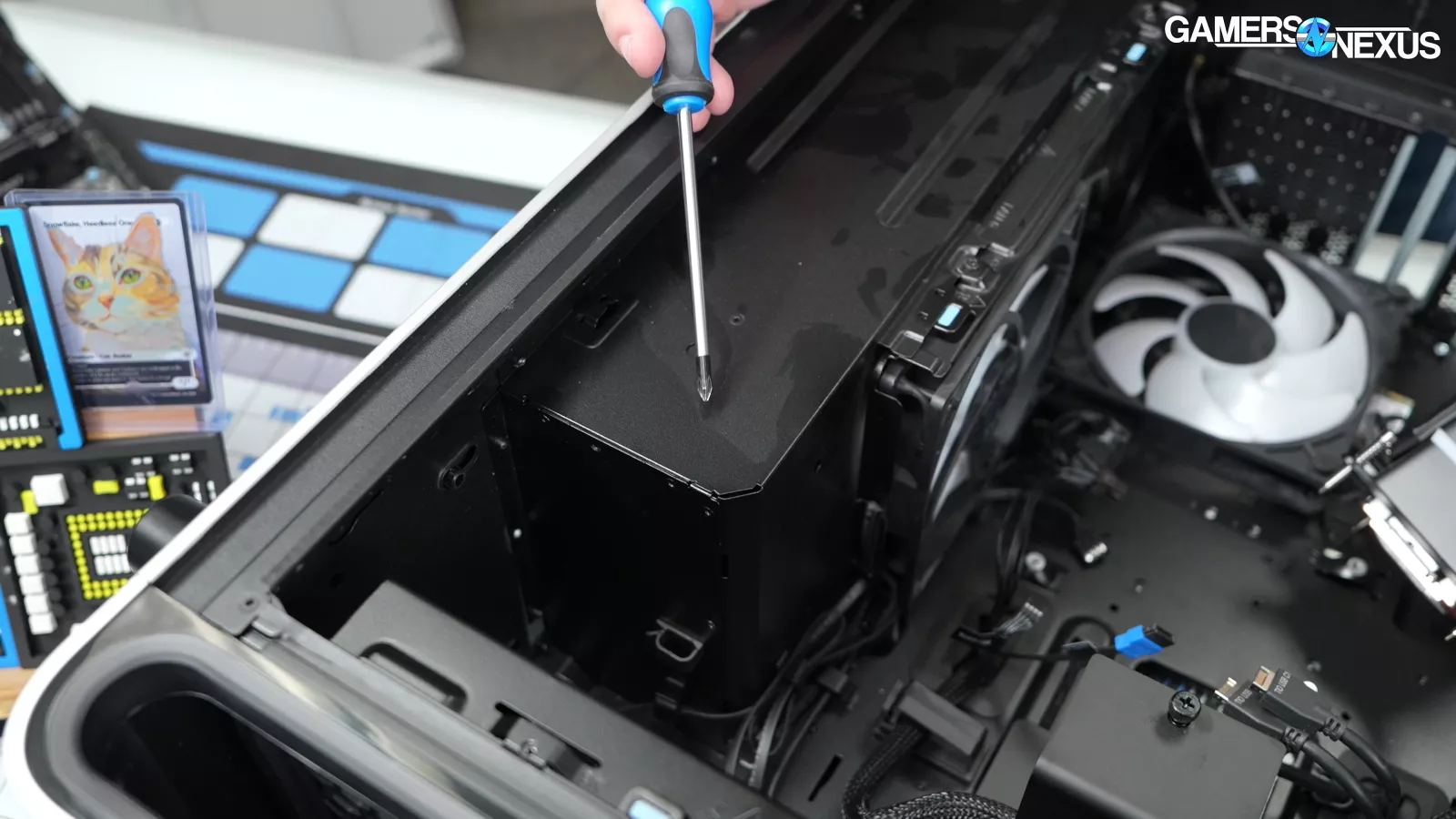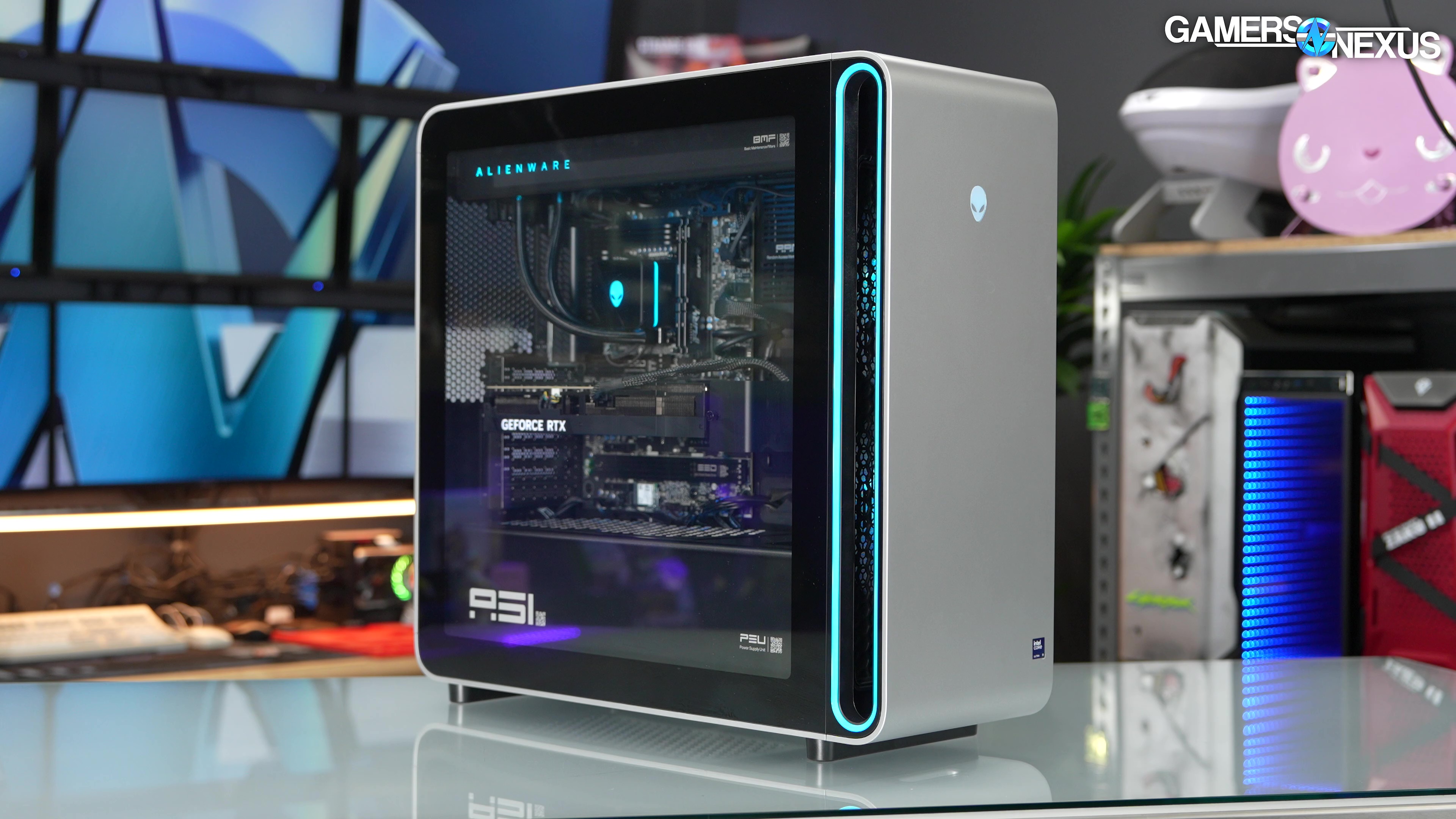
We review Alienware’s 2025 Area-51 and test its thermal performance, noise levels, power consumption, and more
The Highlights
- Our Alienware Area-51 PC was outfitted with an RTX 5080 and an Intel 285K CPU
- The system is a poor value and came with a bent SSD
- Despite its flaws, the company’s 2025 Area-51 PC represents a huge improvement for the company
- Original MSRP: $4,650
Table of Contents
- AutoTOC

Intro
Alienware got tired of us finding all the flaws in its Aurora line of desktop pre-builts, so it brought back the big guns: The Area-51. That’s a name we haven’t heard in a long time. Well, except for that one incident we had in Nevada…but we’ve been told not to talk about that.
As for Alienware’s Area 51, we bought one for independent review.
Speaking purely about the PC itself, this is the most significant positive effort we’ve seen from Alienware to date – including an overhaul to thermals and a new focus on industry standard parts.
Editor's note: This was originally published on June 18, 2025 as a video. This content has been adapted to written format for this article and is unchanged from the original publication.
Credits
Test Lead, Host, Writing
Steve Burke
Testing, Writing
Jeremy Clayton
Camera, Video Editing
Vitalii Makhnovets
Camera
Tim Phetdara
Writing, Web Editing
Jimmy Thang
They have QR codes everywhere to detail how users can service parts, which has been our number one Alienware complaint for about a decade now. They’ve switched to using fewer proprietary components, meaning more user serviceability. That’s a huge improvement.

But Alienware still had negatives, like the inability to manually control the fans. The biggest negative is the price: We paid $4,650 for this, which at the time of purchase, was $1,500 more expensive than DIY at the time we put the pricing table together. And that’s with “$400 off” the “estimated value,” a number that Alienware claims is based on competitive data but is clearly, instead, based on something we call, uh, “bullsh*t.”
The good news is that, somehow, this is still more price competitive than Origin’s high-end pre-built PCs. Under normal circumstances, on value alone, we’d say this prebuilt is eliminated from consideration; however, Origin puts Alienware into a new perspective where, somehow, even a $1,500 higher price than DIY parts looks doable.
The thermals and construction are the most interesting for this one. Let’s get into it.
Alienware Area-51 Price Comparison vs. DIY
Alienware Area-51 AAT2250 Pre-built | Part and Price Breakdown | GamersNexus
| Part Name | DIY Equivalent Part | DIY Part Price | |
| CPU | Intel Ultra 9 285K | Intel Ultra 9 285K | $589 |
| CPU Cooler | 360mm Liquid Cooler | Arctic Liquid Freezer III Pro 360 | $85 |
| Motherboard | Alienware Z890 ATX with WIFI7 | Gigabyte Z890 EAGLE WIFI7 | $225 |
| Memory | 64GB DDR5-6400 (2x32GB) | 64GB DDR5-6400 (2x32GB) | $230 |
| Storage | 4TB NVMe M.2 PCIe 4 SSD | Teamgroup T-FORCE G50 4TB PCIe 4 SSD | $200 |
| GPU | NVIDIA RTX 5080 16GB | NVIDIA RTX 5080 16GB | $1,380 |
| Case | Alienware Area 51 Case | Lian Li Lancool 216 RGB | $103 |
| Power Supply | 1500W Platinum ATX12VO | be quiet! Straight Power 12 1500W Platinum | $235 |
| Fans | 2x180mm front and 2x140mm bottom | 2x Arctic P14 PWM PST A-RGB | $44 |
| Pre-built Price: $4650 | DIY Total: $3091 | ||
| Pre-built Premium Over DIY: $1559 |
We’ll start with a price comparison. Prices for DIY parts were taken at the end of May and were as close a match as we could find to Alienware’s selection. We did not try to fine-tune.
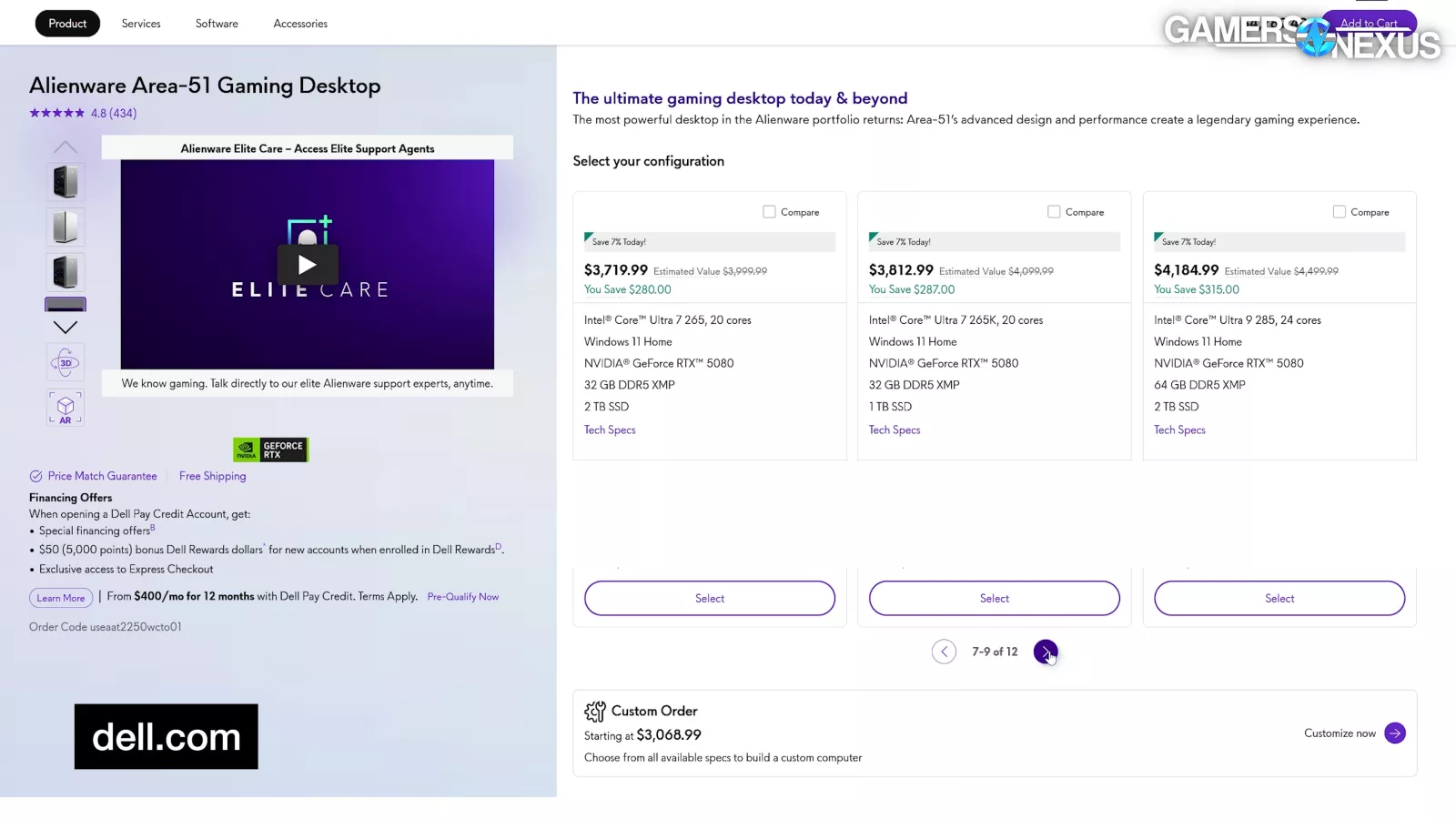
The new Area-51 comes in 13 different configurations, up from just 3 when we ordered, all with Intel Core Ultra CPUs and NVIDIA RTX 50 Series GPUs.
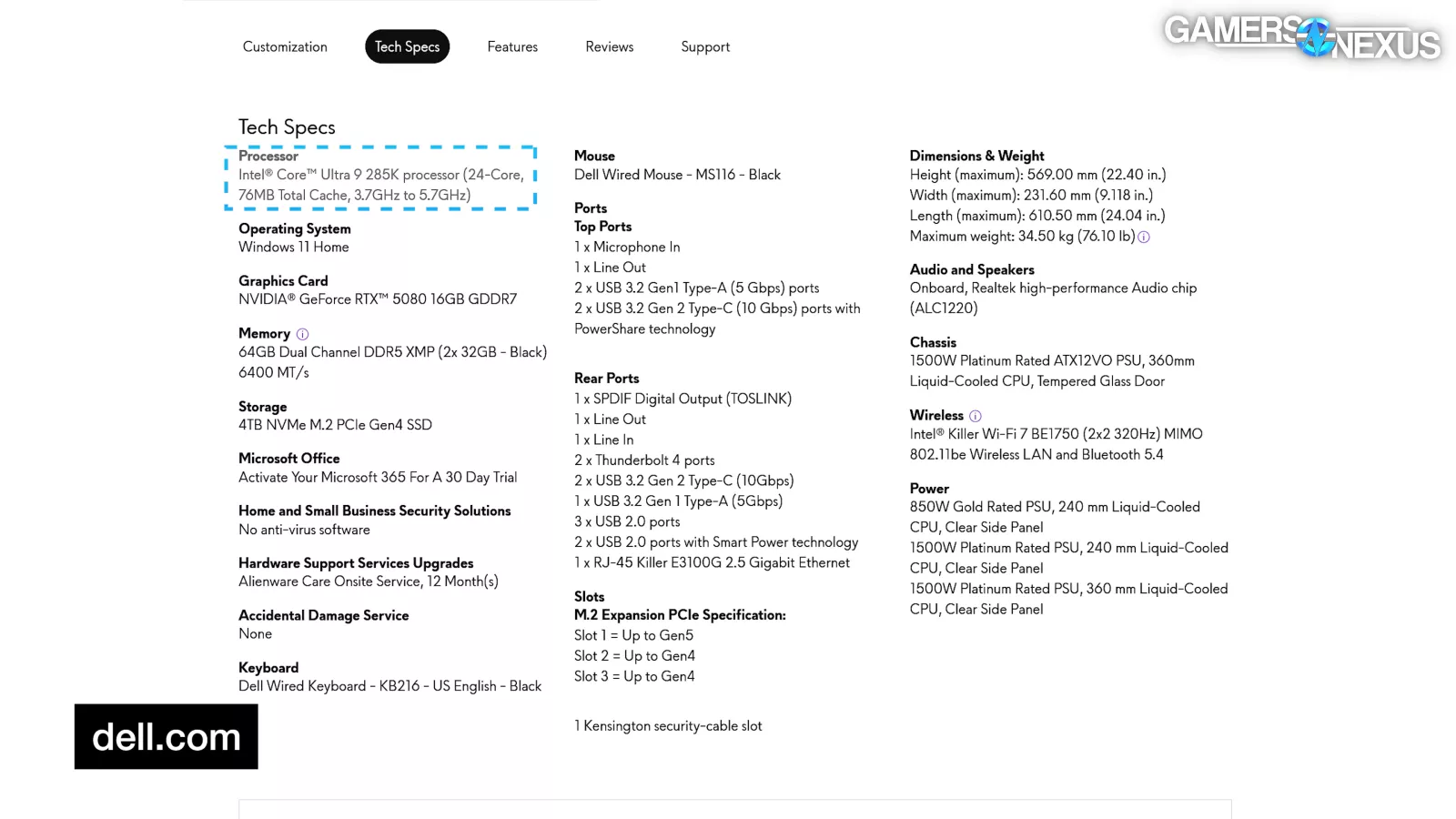
Our configuration has a 285K, an RTX 5080 (read our review), 64GB of DDR5-6400, and a 4TB SSD.
Along with that is a 360mm liquid cooler and a 1500W 80 Plus Platinum rated ATX12VO PSU.
Value discussion is a total non-starter. The DIY total comes to $3,091 at the time of writing, making it $1,559 less expensive than the Alienware’s ridiculous $4,650 price tag. Expressed another way, the Area-51 is 50% more expensive than DIY parts cost; there are cheaper pre-builts out there. If you’re opposed to DIY (and we don’t have a problem with people buying pre-builts). We think the Area-51’s case is probably more expensive to produce than the manufacturing cost of our Lian Li Lancool 216 RGB substitution, but that’s obviously not enough to really sway the math. It’s also not relevant to an end user.
Overview and Marketing
The biggest updates to the Area-51 are the construction, thermal solutions, and part choices. Alienware actually had emailed us to ask if we wanted to look at one, as the company felt confident in its changes. We rejected the offer and bought one independently, as always for pre-built reviews, as we wanted the full customer experience.
Alienware went with a traditionally laid out large tower case with far more ventilation than its past designs. As a reminder of how bad it’s been before, we made an entire video “fixing” the dumpster fire known as the Alienware R13.
On the new system, the top, front, and most of the bottom are all air intake areas, leaving the meshed-out rear as a totally passive exhaust. Particularly interesting are the two 180mm fans in the front panel, reminiscent of the Fractal Torrent. There’s roughly 35mm of clearance in the front cutout, which should be sufficient to avoid too much restriction despite looking covered. It helps that the hub loses the most access to air, and yet is the only part of a fan that air can’t go through. The dust filter inside the panel is magnetically retained for easier cleaning as well, which is a nice feature.
The CPU is cooled by a 360mm liquid cooler with access to fresh air through the top, with a dust filter that slides out to the rear, retained by a screw. The bottom has one as well.
Alienware Area-51 Tear-Down
The last couple of Alienware systems we’ve tested have been really difficult to take apart. This one is easier to work with.
To get inside, you remove a screw, turn the lock knob, then press these spring-loaded buttons to release the side panels. Fortunately, they rest in a partially opened position without falling – then you just lift up. Access inside is pretty good, and the cable management is overall good.
The next biggest thing following after thermals is the Area-51’s shift to standard ATX parts – well, mostly. The motherboard is a custom Alienware model with standard ATX mounting points, but it’s actually ATX12VO electrically. That also means that the 1500W PSU is ATX12VO to match. You can see how instead of a 24-pin connector, the board has a 10-pin and a supplemental 6-pin along the right edge.
If you don’t know what ATX12VO is, we have a video from a couple years ago that covers it, so go check that out after this.
Cable management is really well done. This is an area where pre-builts tend to do really well.
Looking at the other side and inside the system, the video card is relatively large but there’s plenty of room to upgrade.
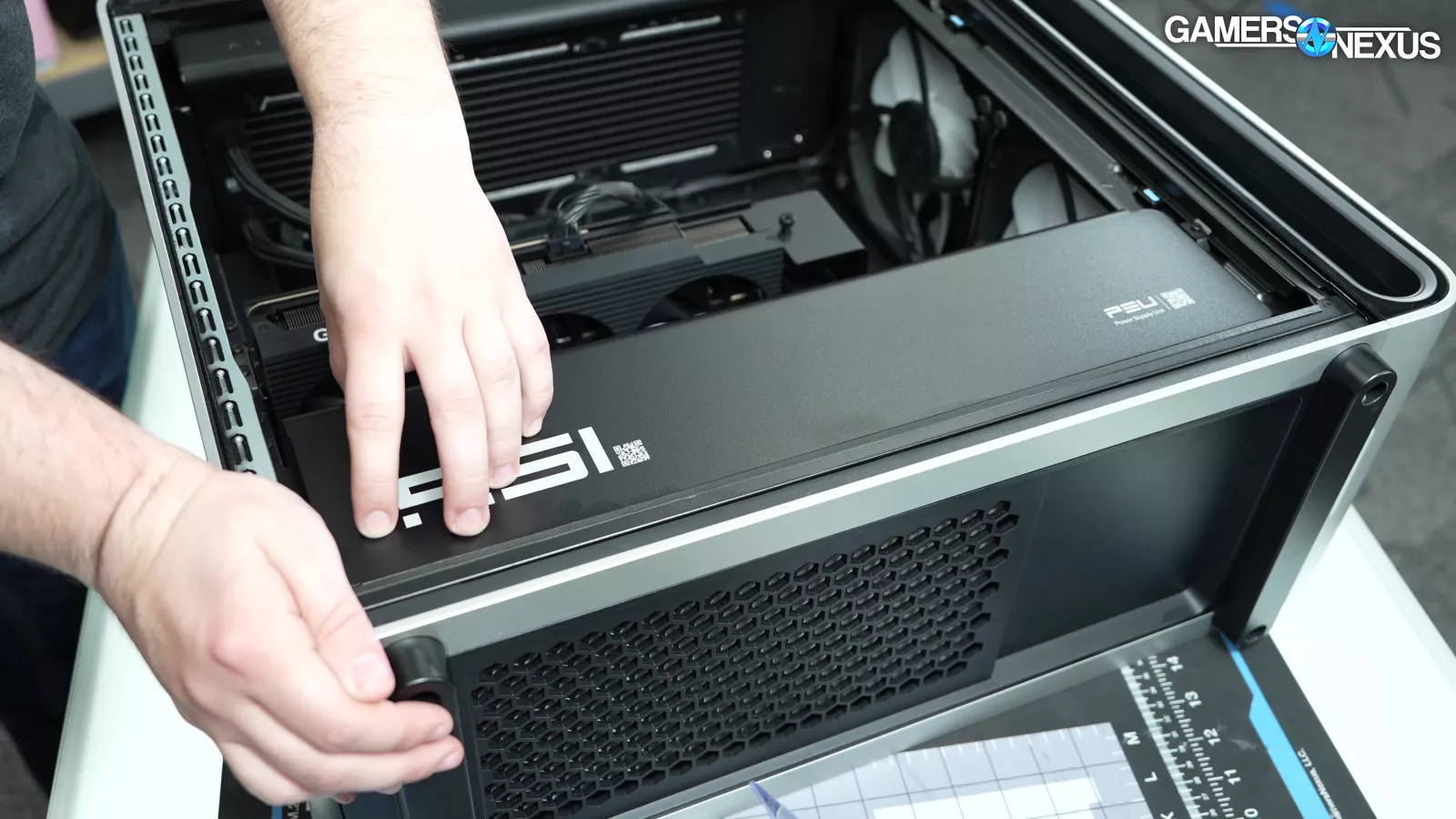
The bottom of the system has a really huge power supply shroud, which has fans inside them.
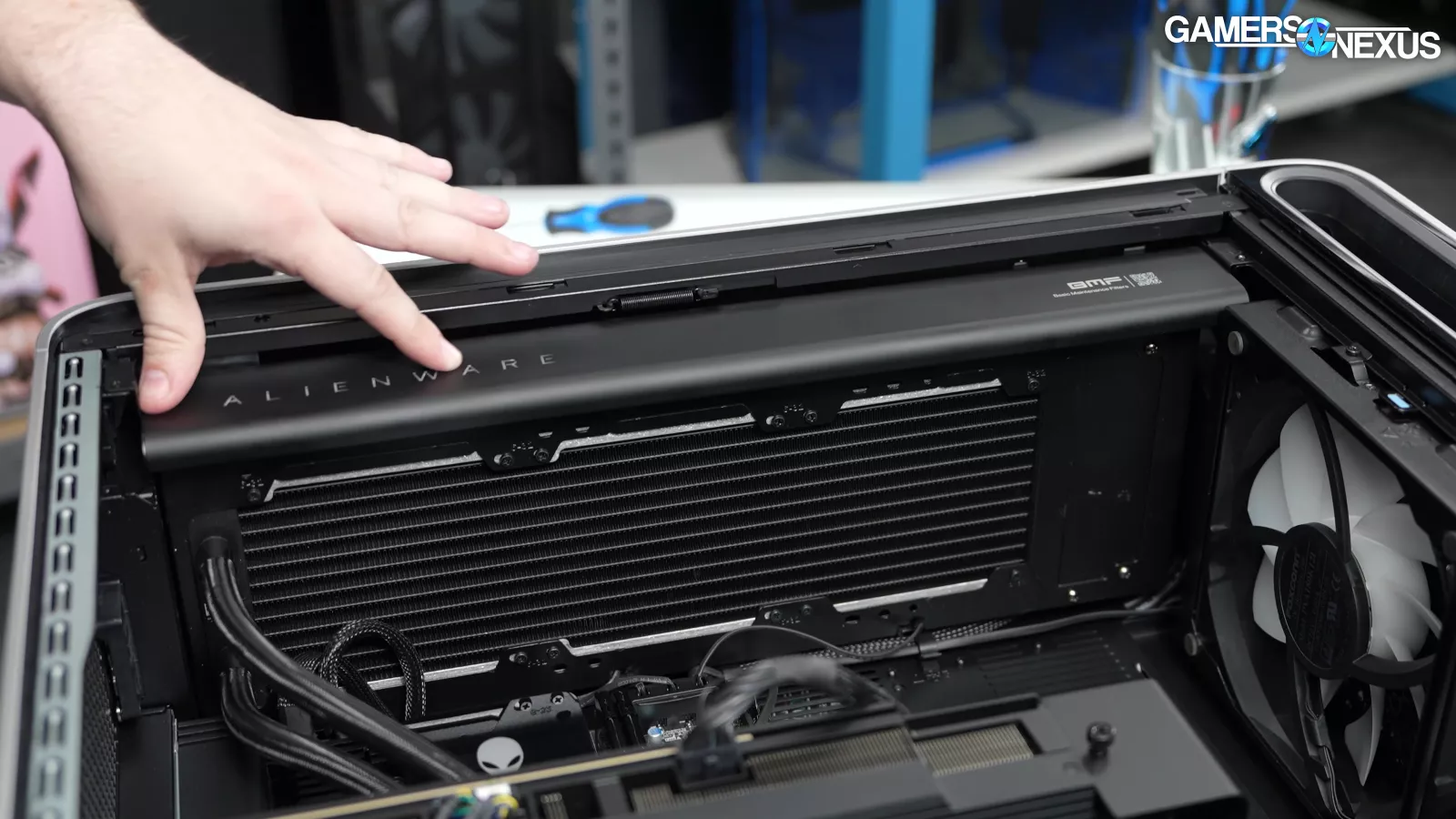
The top of the case has a bar that covers the side of the radiator, which has been in past Alienware systems.
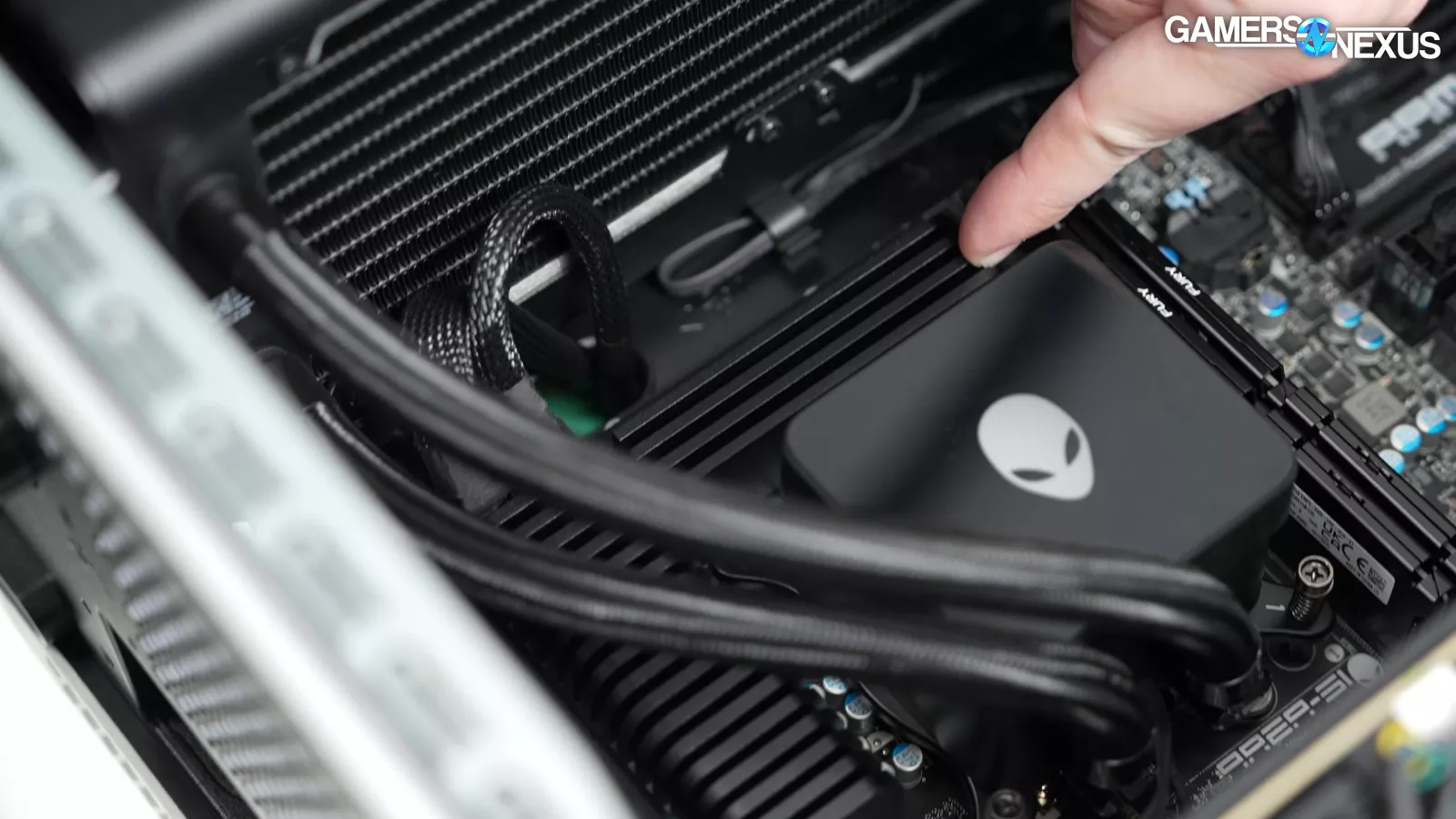
We generally like how the heat sink for the VRM are finned.
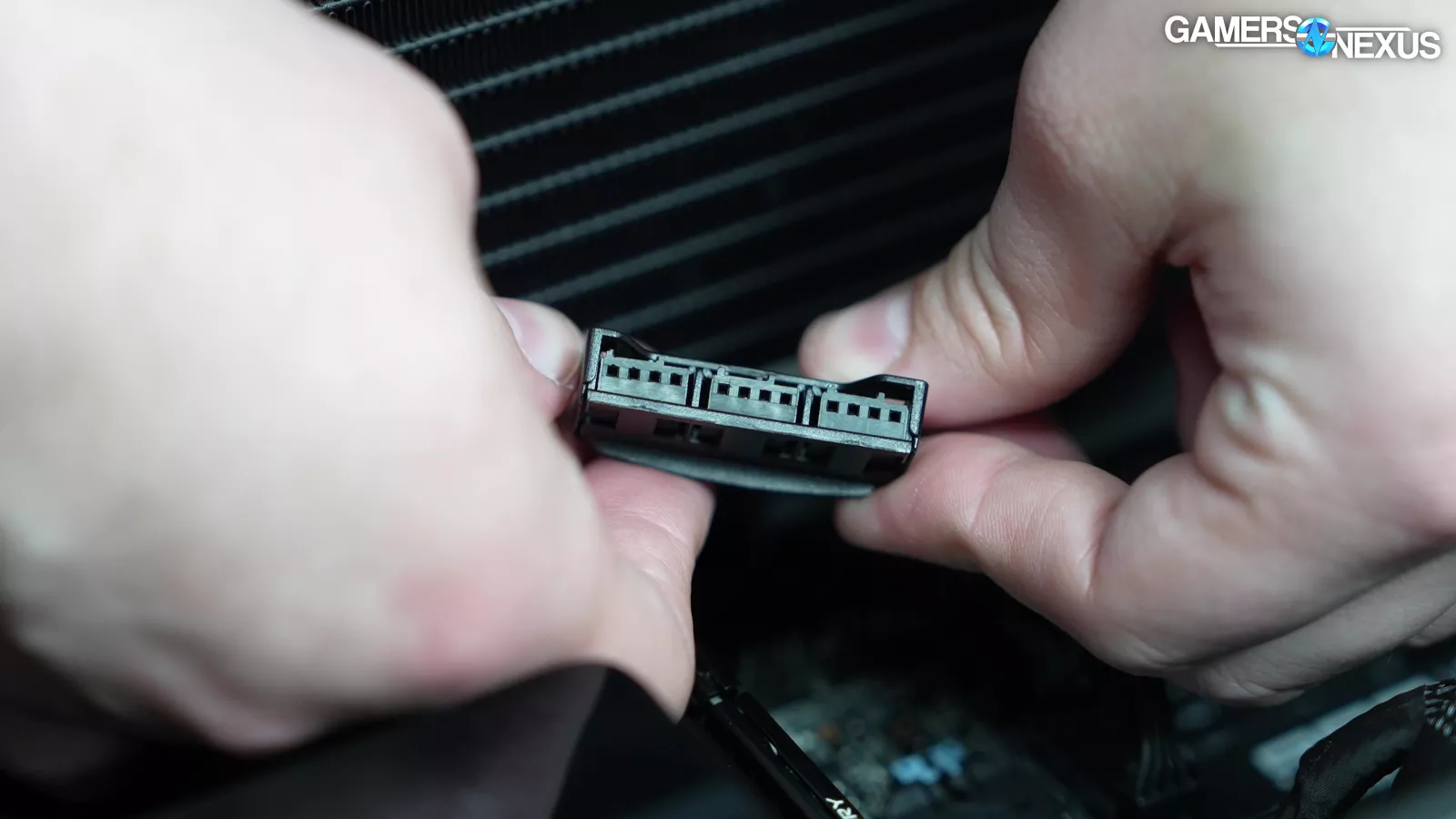
The system uses a fan header cage that creates a make-shift 12-pin connector.
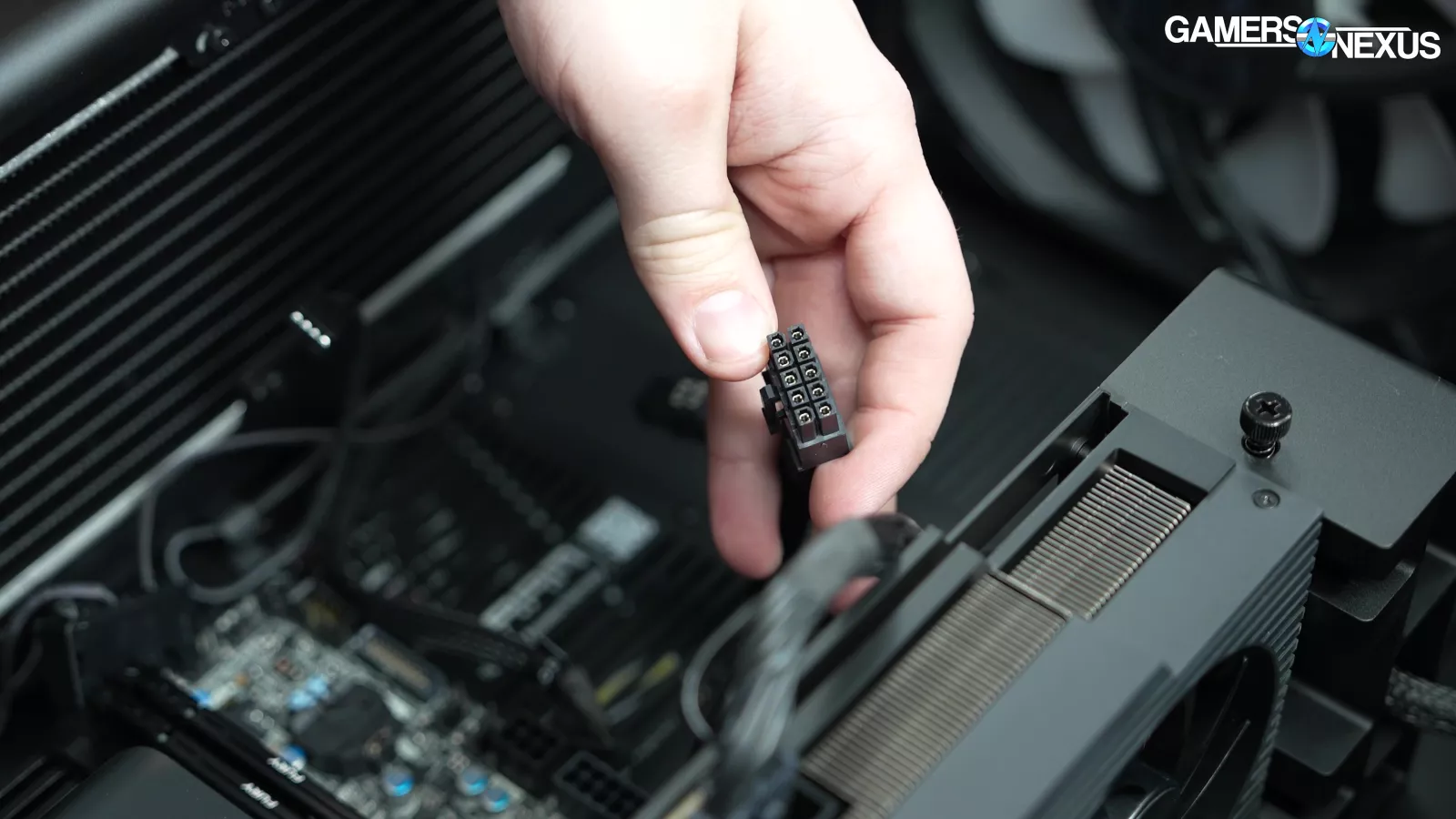
The PC doesn’t use any proprietary connectors and all the connections into the motherboard were secure.
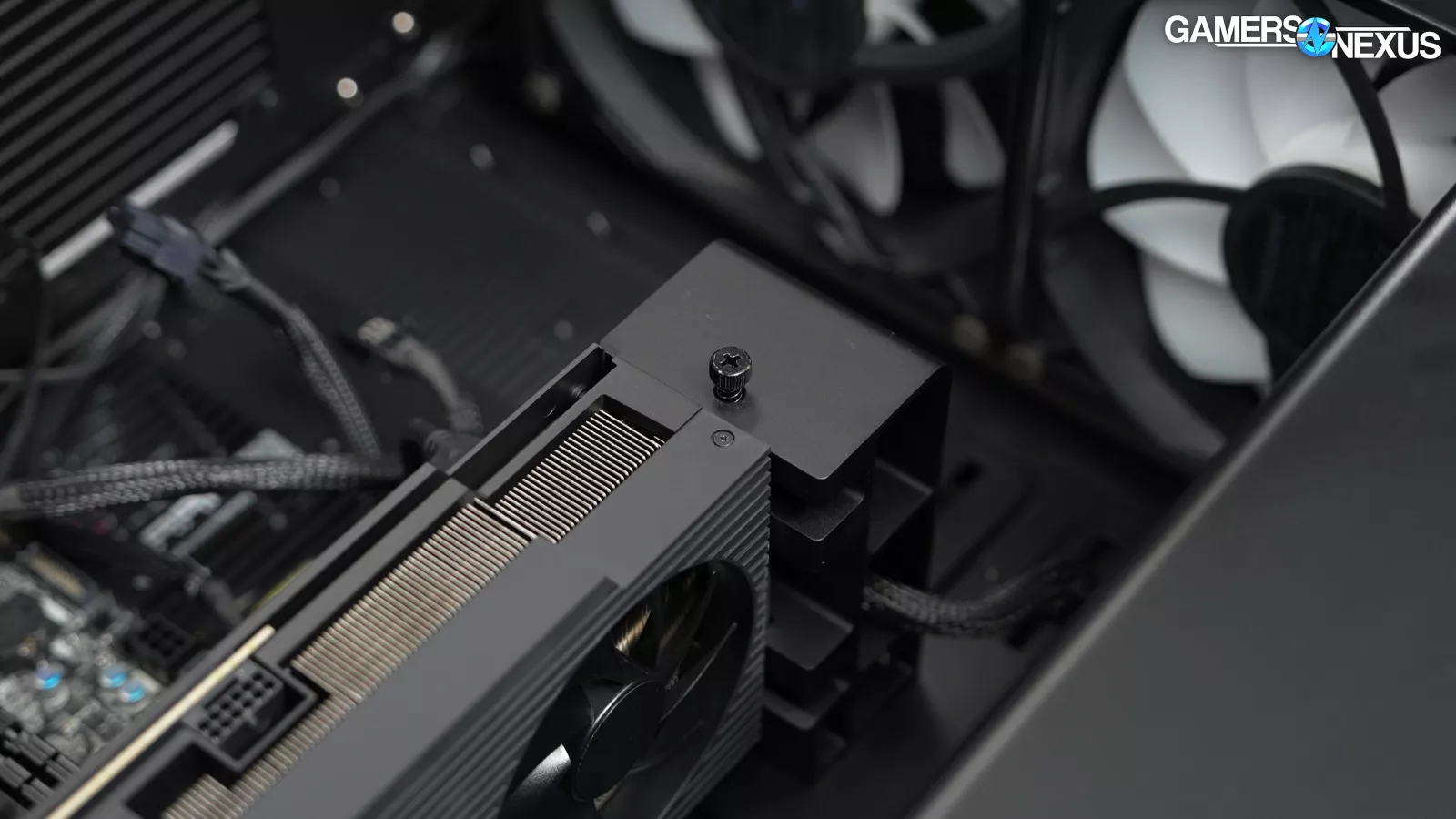
The RTX 5080 inside is held in place by the most substantial GPU bracket we’ve ever seen. It’s a chunk of solid metal attached to both the end of the GPU and the internal wall of the case and it slides into place. It’s pretty nice, but totally unnecessary and adds to the expense. It does somewhat make sense in a pre-built to prevent breaking during shipping, however.
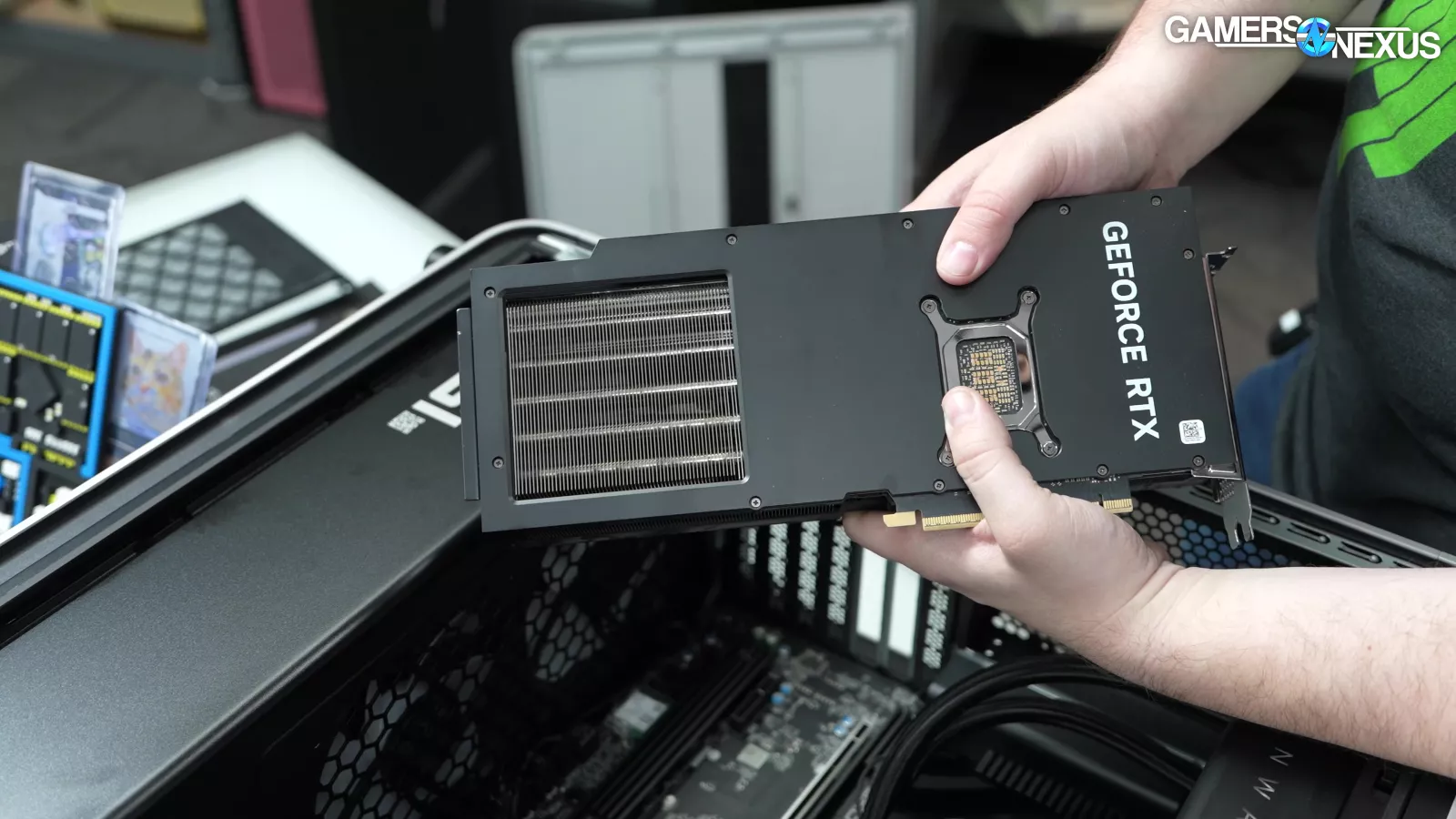
Looking at the video card, it uses a very large flow-through area, which is excellent. The last time we tested Dell’s video card, which was a 4090, the company’s design did surprisingly well for what it was.
Inside the PC, we noticed a fully custom USB 3.0 connector, which goes into the motherboard at a 90-degree angle.
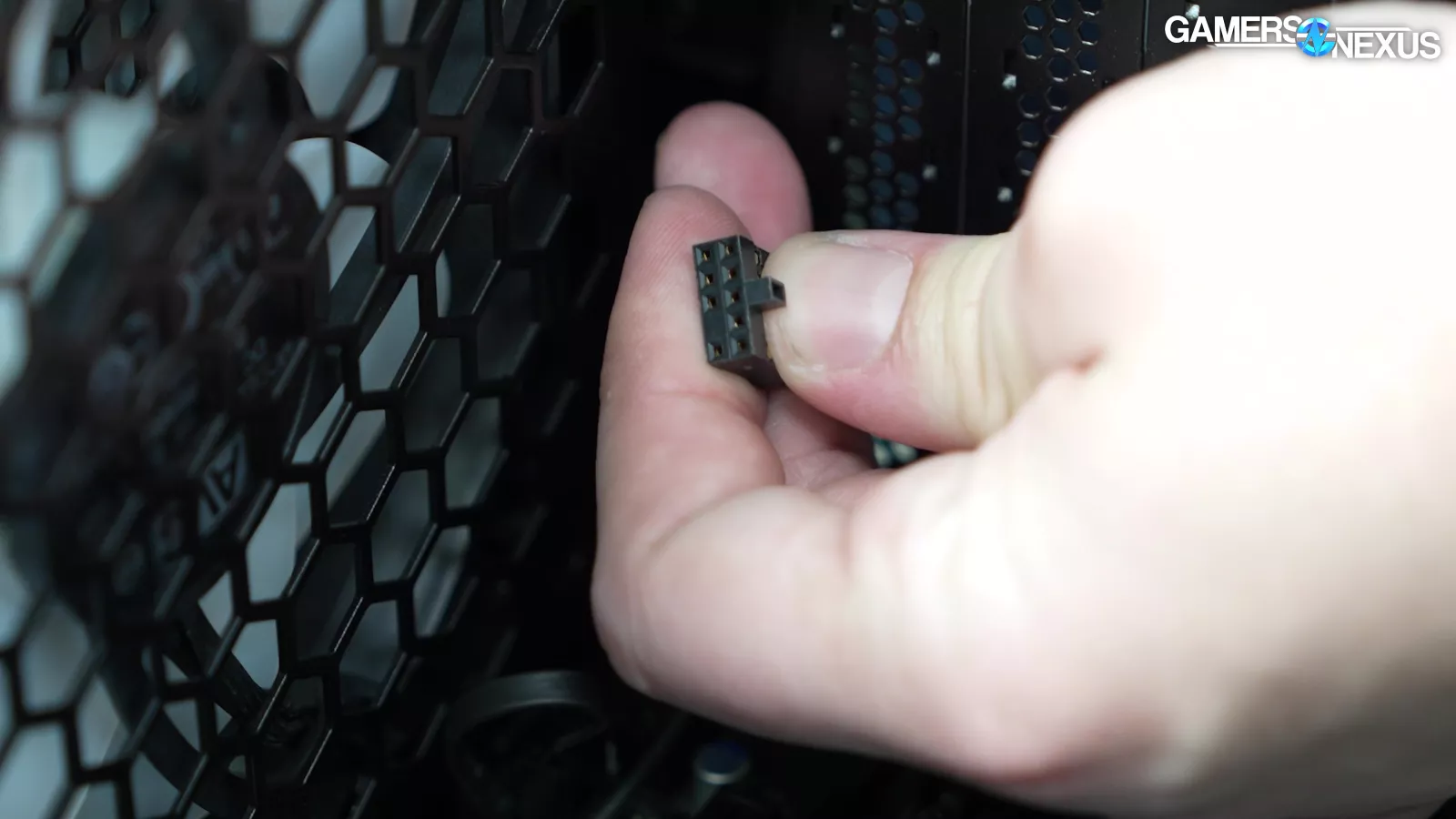
Their HD-audio connector also has an extra protrusion on it to latch it in.
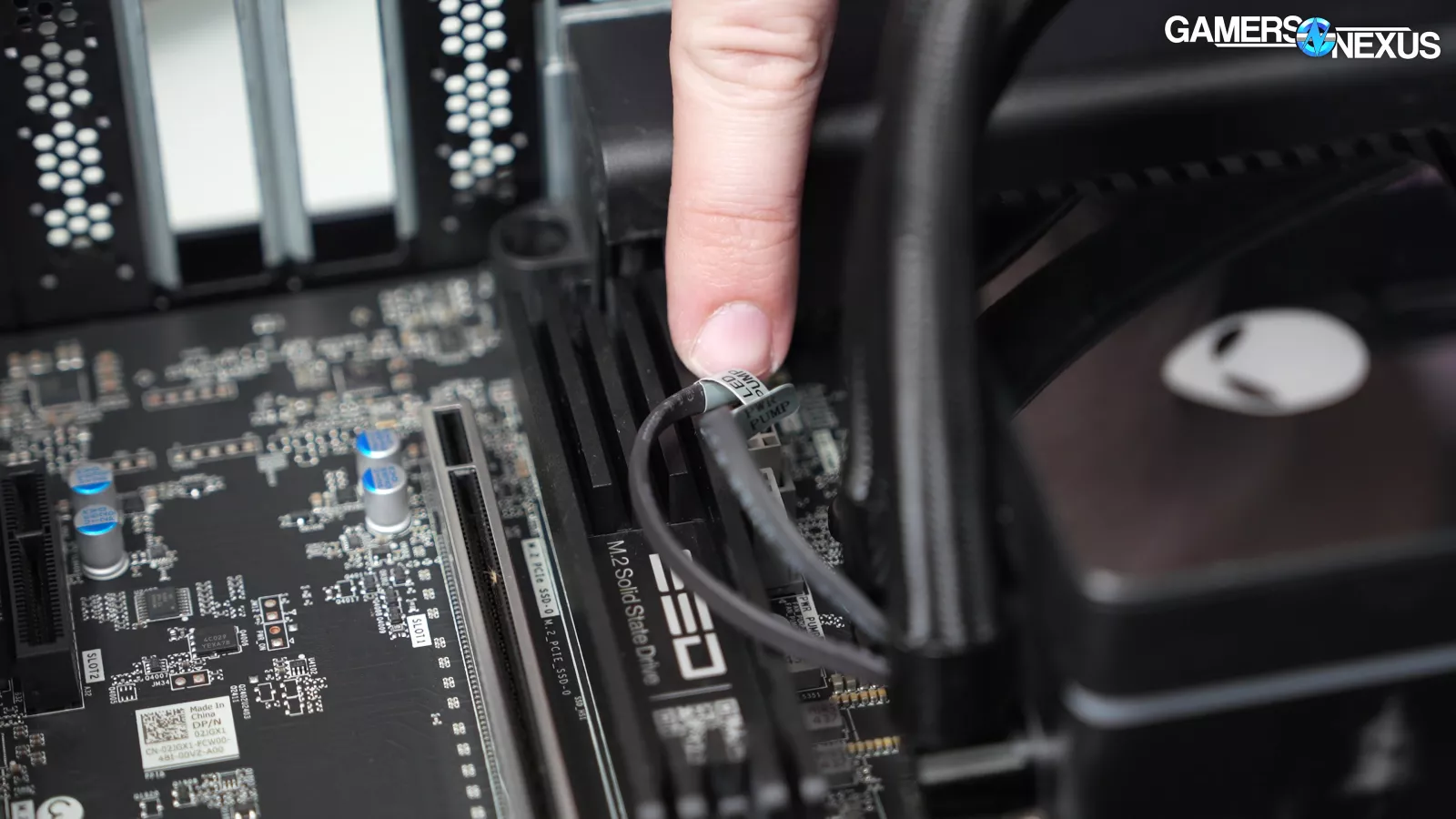
We like how Alienware labeled almost every single cable.
Removing the pump block, we can see a thermal pad was applied underneath. The paste pattern is a bit lacking in spots.
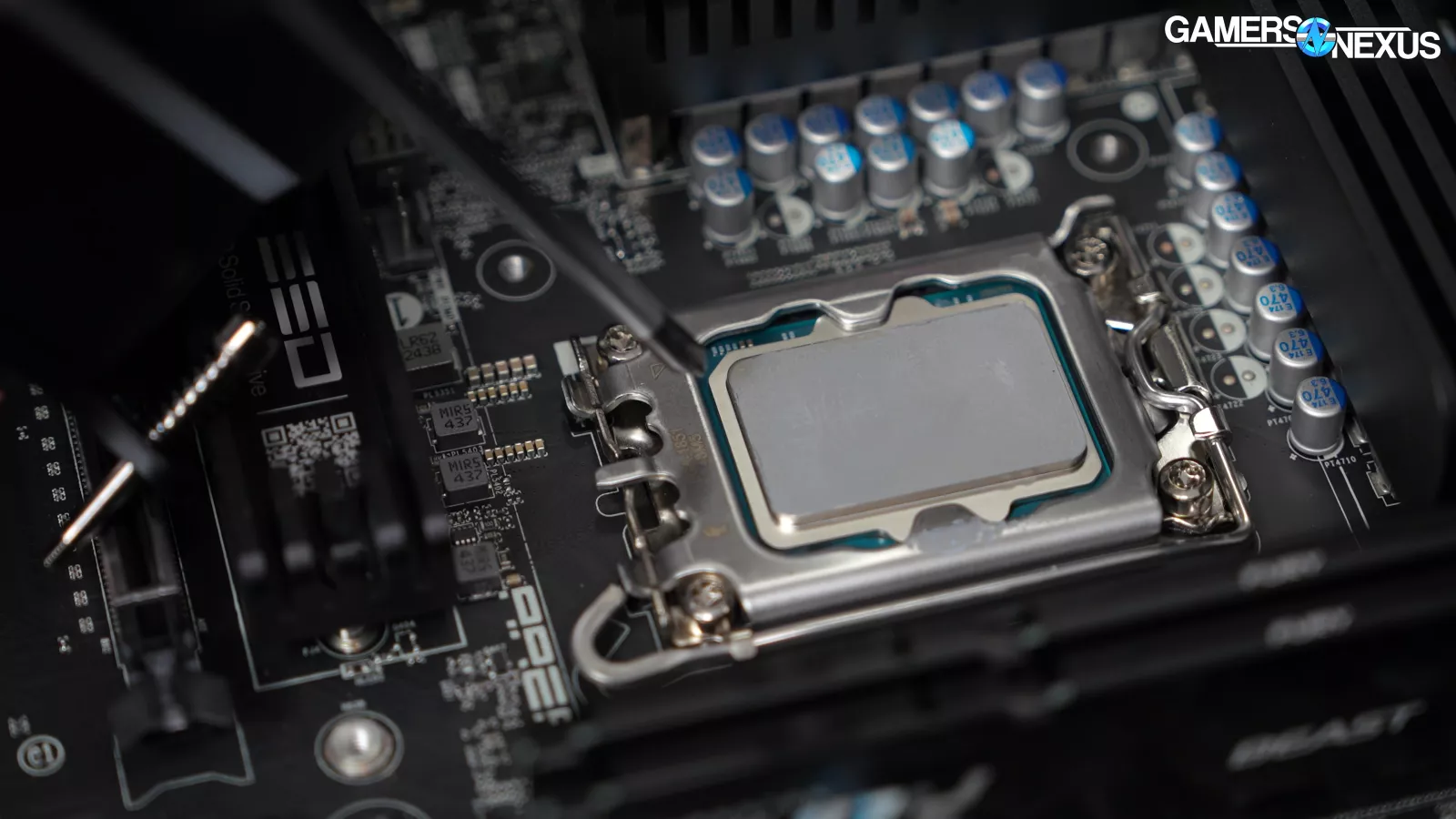
On the CPU side, we noticed a slight gap in coverage on one of the corners, but that’s an okay spot. Overall, it looks good.
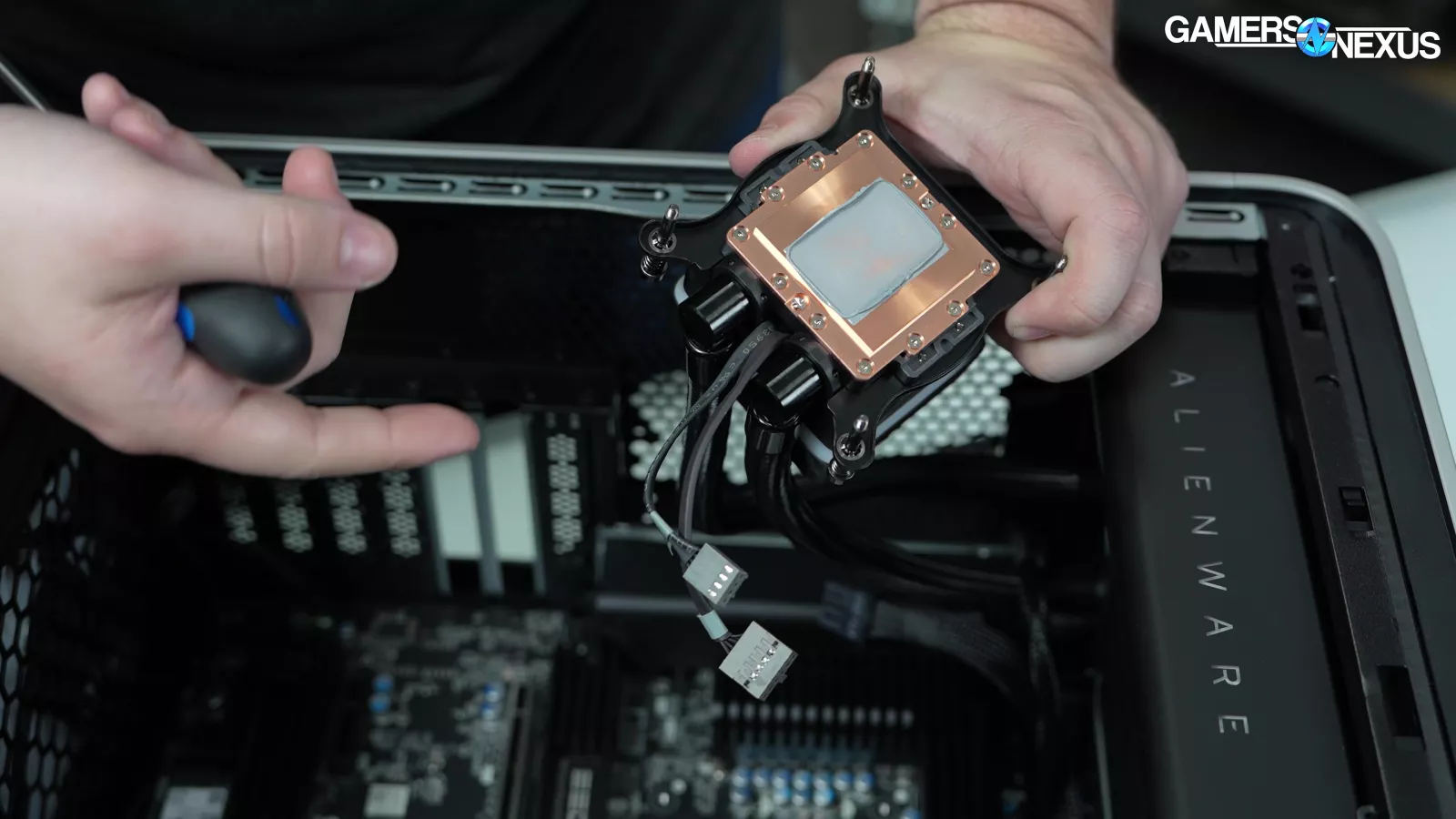
We also like how water block’s cables were kept short and run straight into the board, which is an advantage that Dell has.
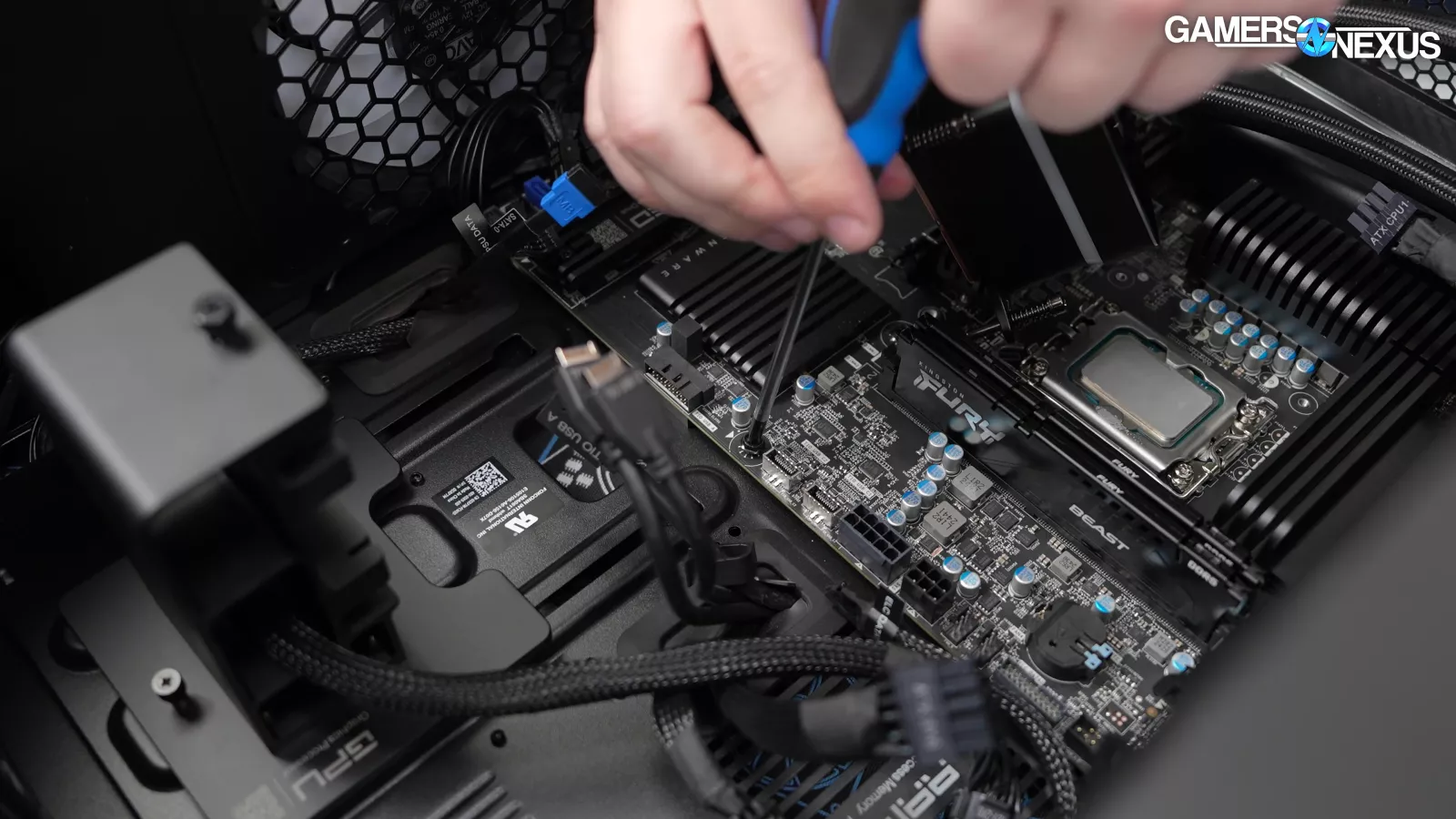
Removing the screws from the motherboard, we discovered one that wasn’t all the way in.
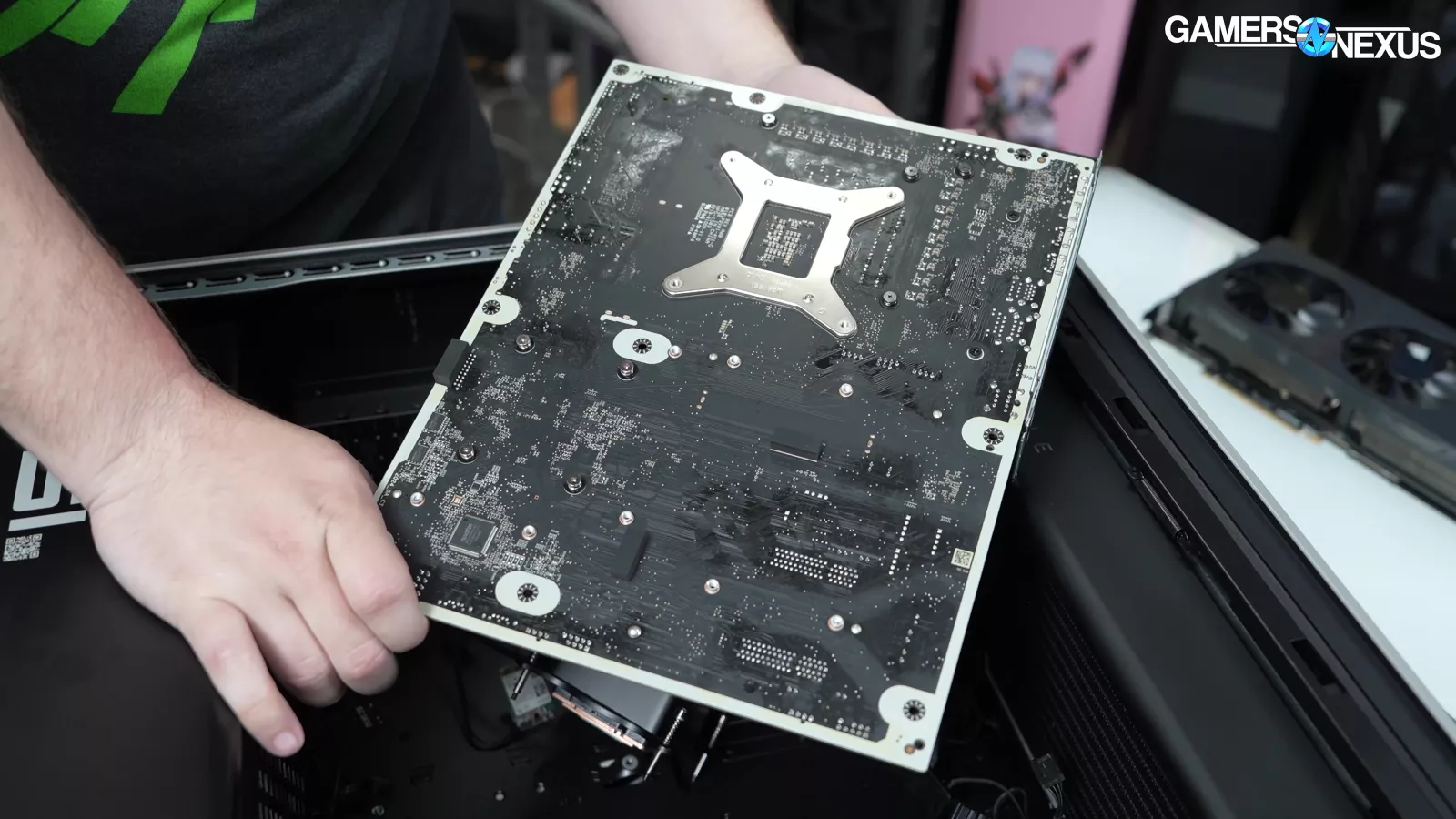
Lifitng the motherboard out of the case, we noticed that it was sticky on the back, which indicates that it wasn’t thoroughly cleaned. It shouldn’t hurt anything, but it’s kind of ugly.
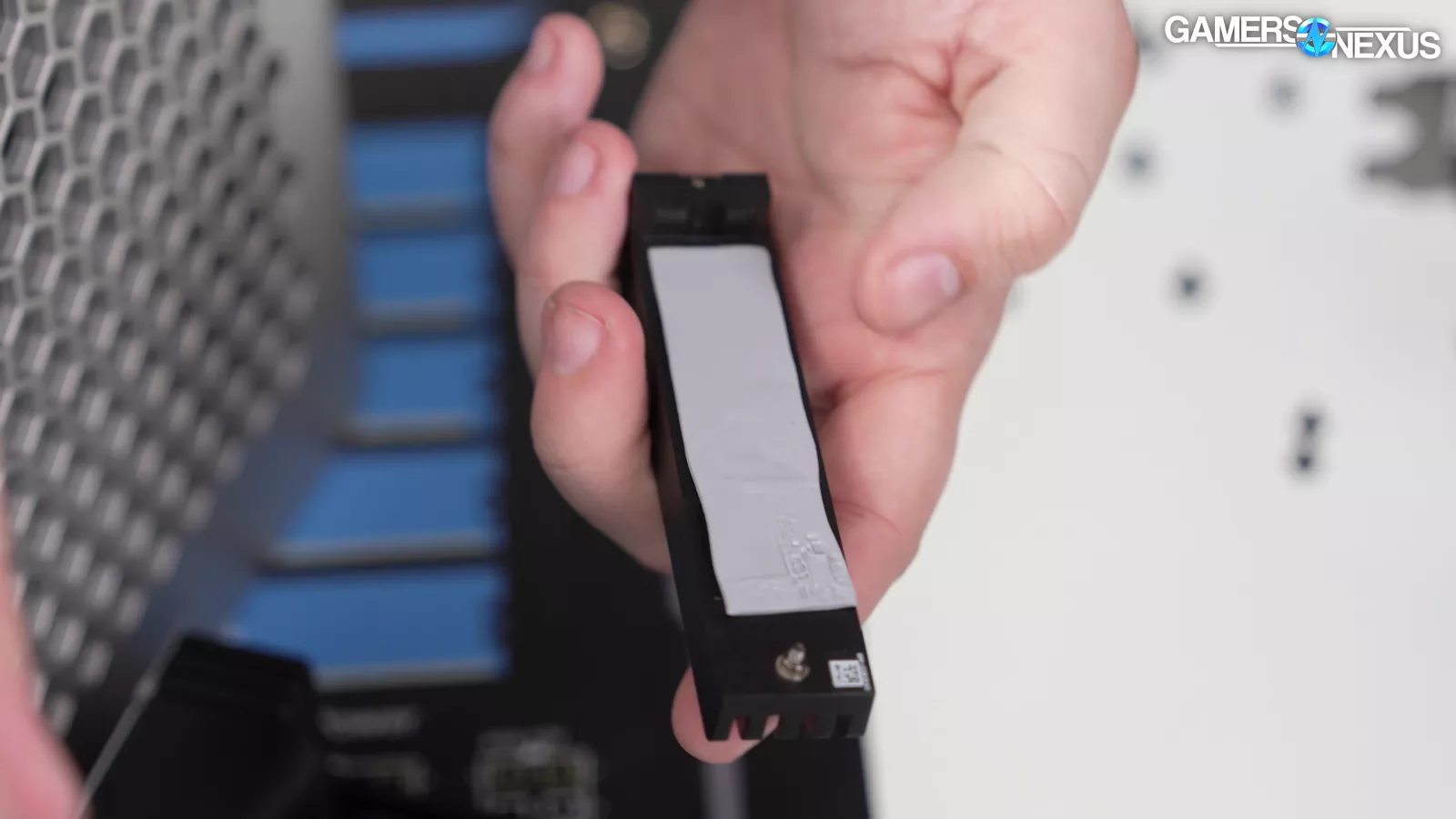
Removing the heat sink off of the SSD and taking a look at its thermal pad looked good as there was no tape on it.
Taking a look at the SSD itself, that didn’t look great as it was bent. Alienware is lucky it didn’t snap the SSD. This is disappointing because the company was doing relatively well up until this point. Taking the drive out, it maintains its very slight arc as a result.
Taking another look at some of the components, there was a lot of factory dust inside the system.
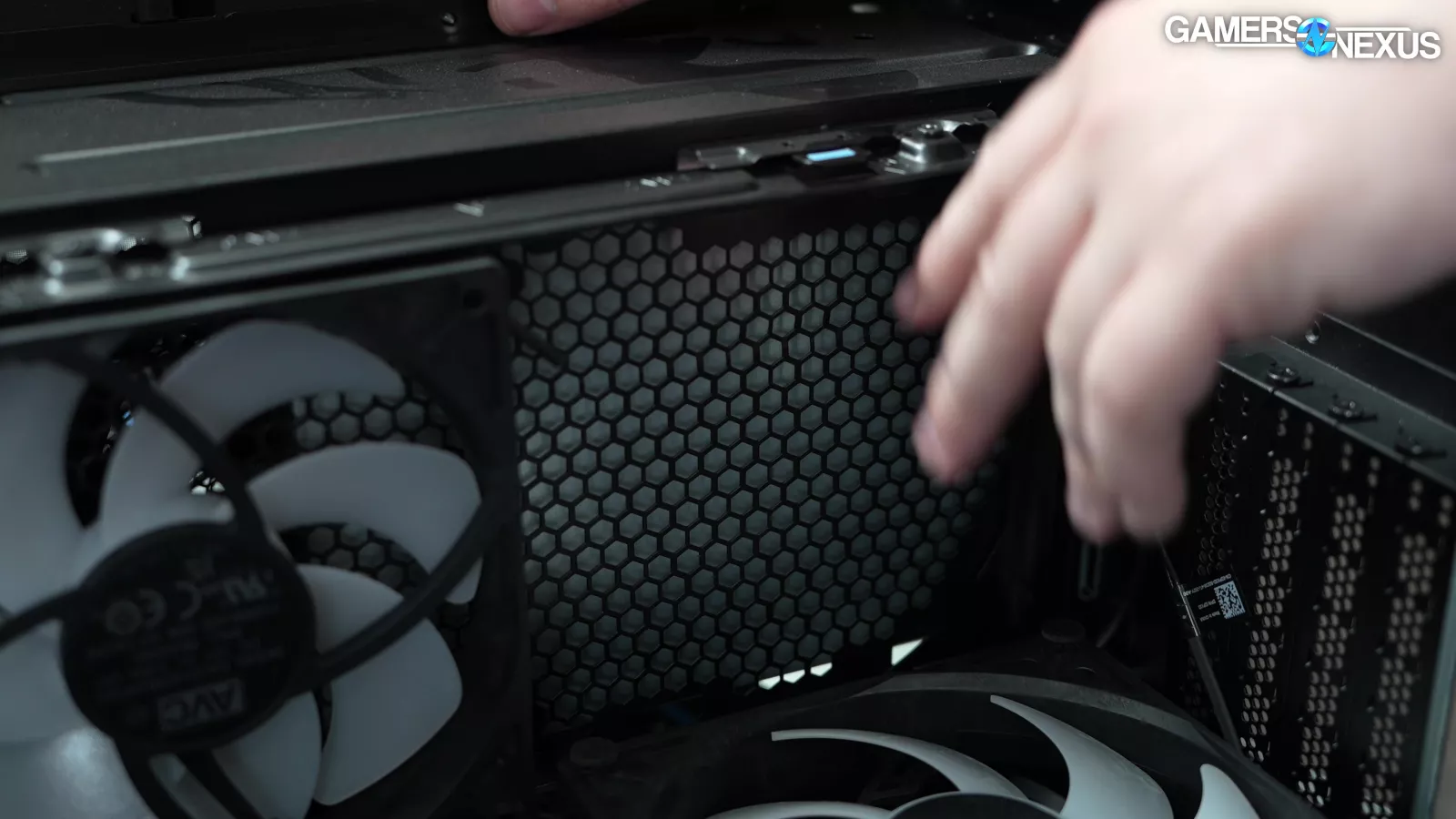
Opening up the PSU shroud enclosure, and removing the back-most fan, we can see it doing functionally nothing as it’s right up against the power supply. The case’s 2 grills also add impedance as well. Looking at the bottom of the system, there isn’t a lot of room for air to come up through.
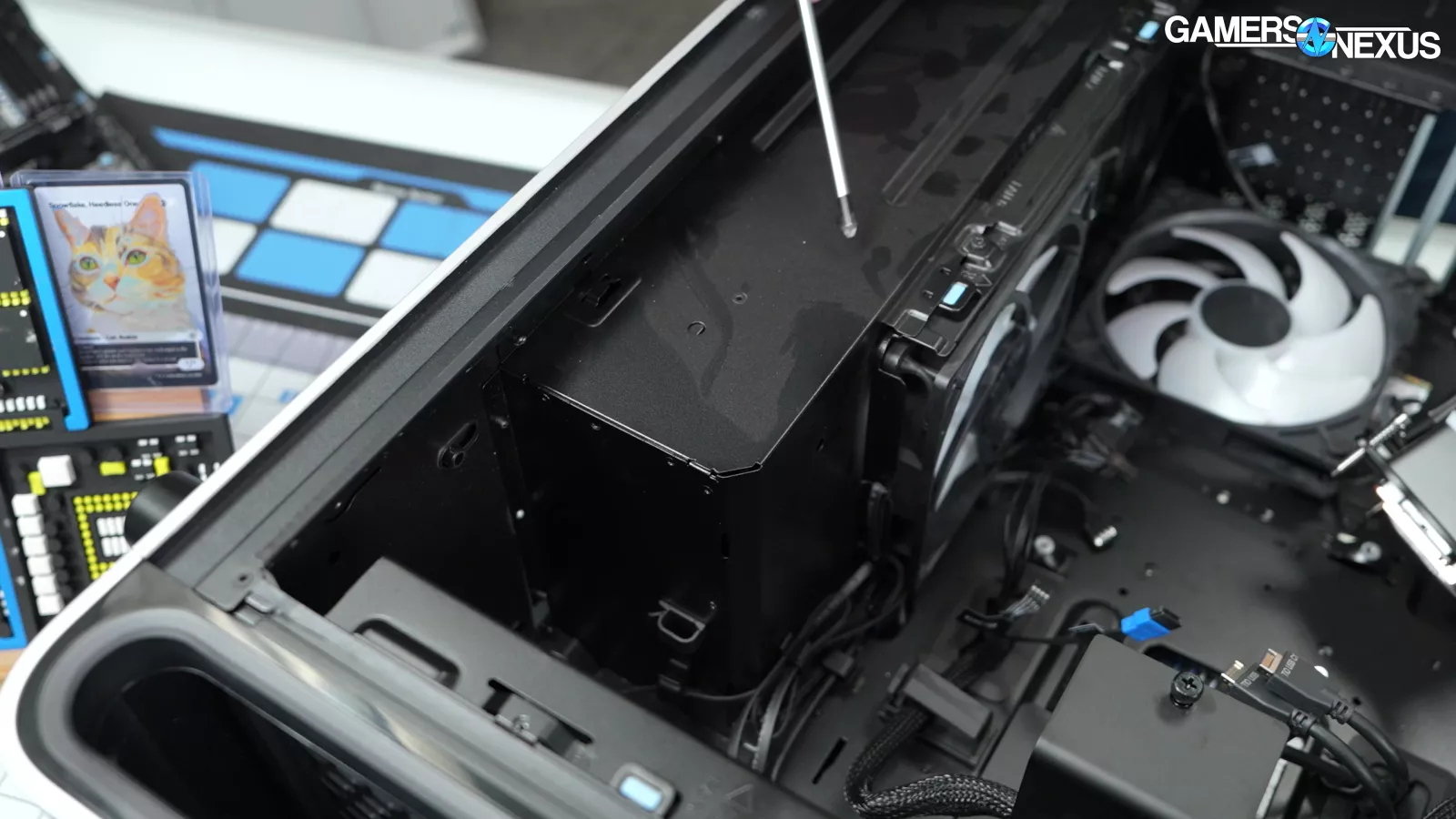
We also noticed a lot more factory dust.
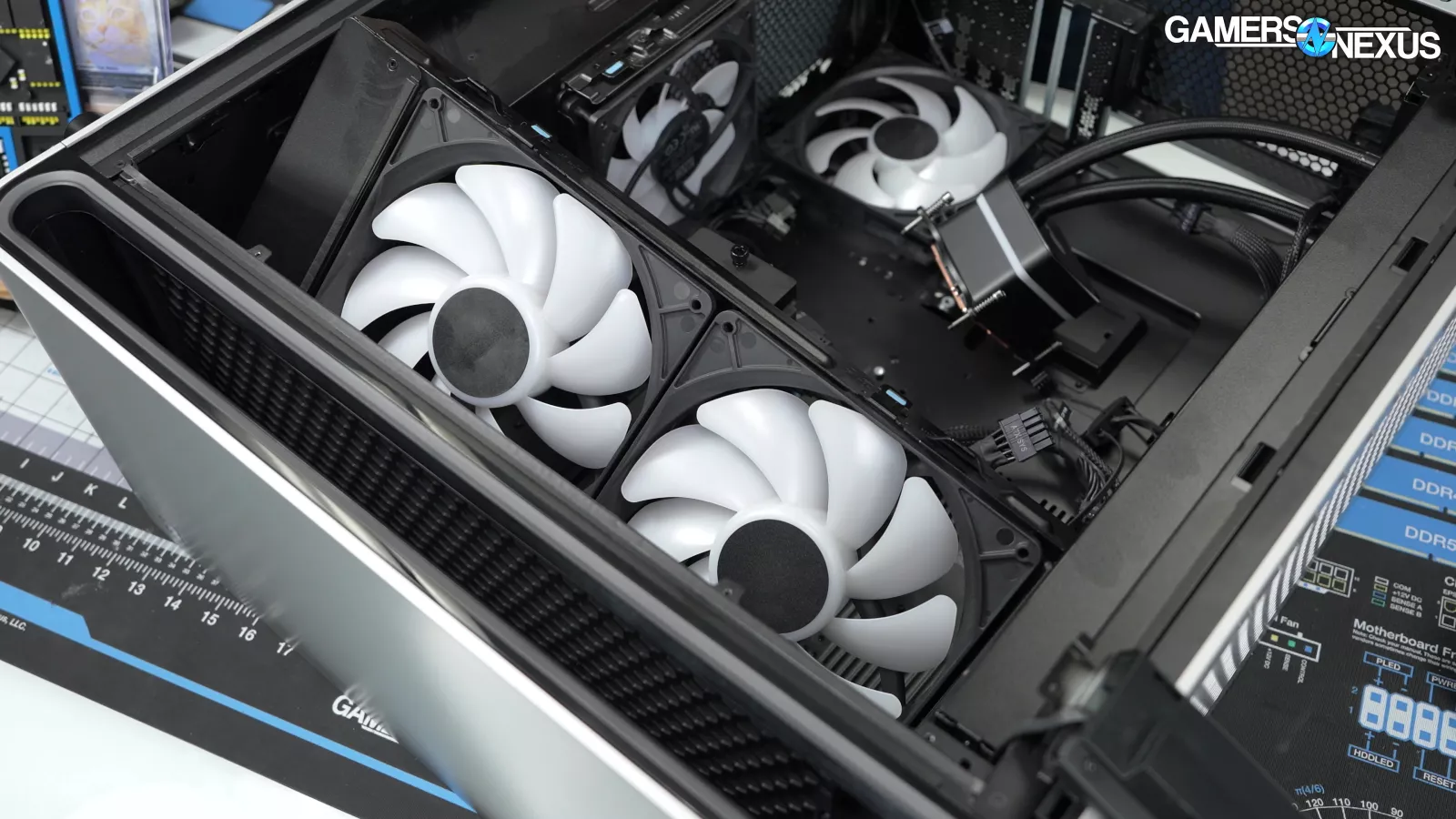
We took the top radiator fans out and measured them at 38mm, which are pretty thick.
Alienware Area-51 Upgradeability
Back to the rest of the review:
Alienware intends for this generation of Area-51 to be expandable and upgradable into the future. That’s apparent in immediate ways like the empty drive trays under the right side panel with pre-routed cables, which is something we like.
Unfortunately, rumors point to LGA1851 being a dead-end platform. If that’s true, there won’t be any CPU upgrades.
The GPU would be as easy to swap as in any normal PC, and space is plentiful. Alienware also claims up to a 420mm radiator can fit in the top of the case.
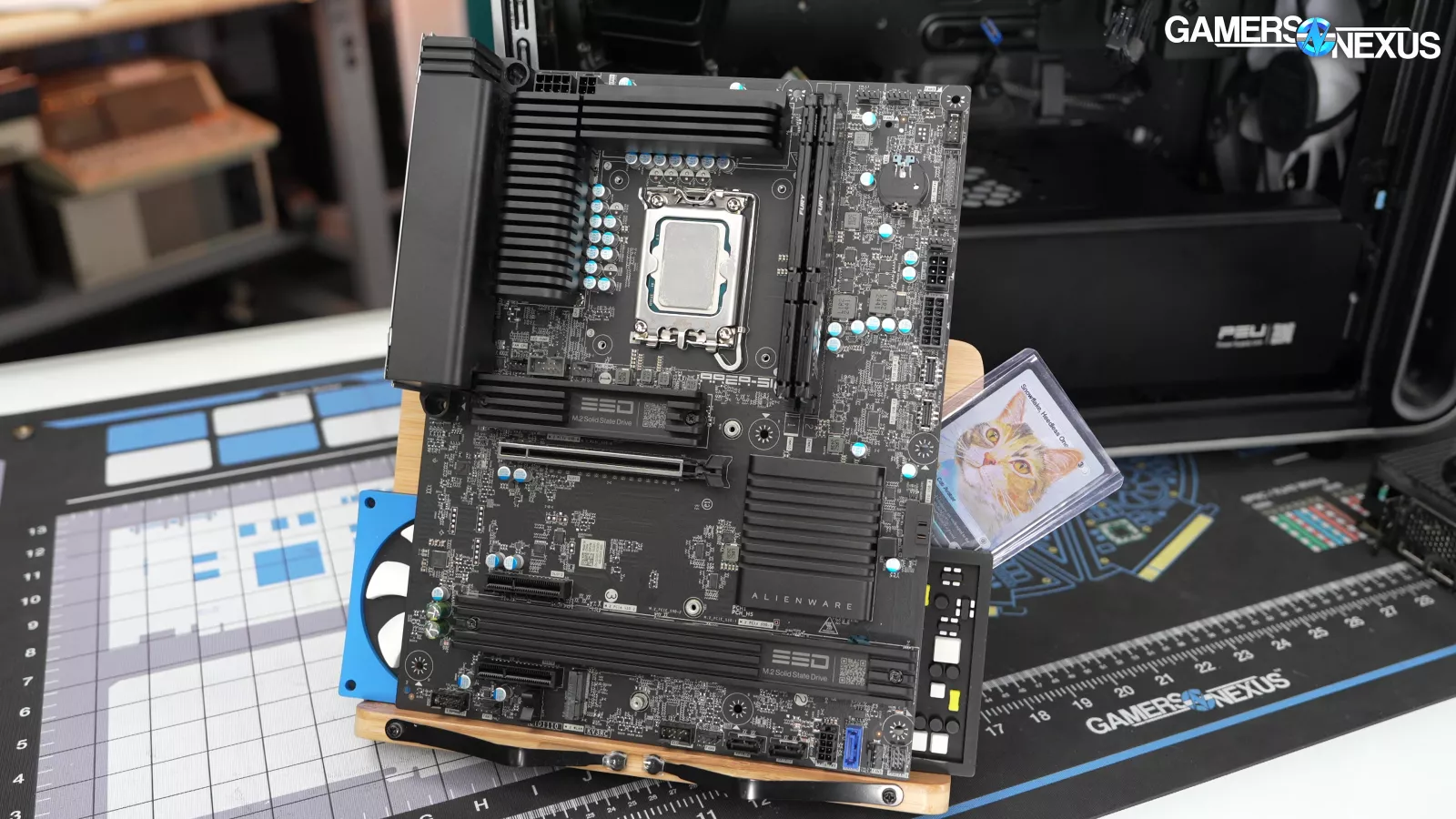
It gets weird when considering a motherboard swap. Since this is an ATX12VO system, that means it would either need to be another ATX12VO motherboard or you’d have to also swap the PSU, which would be a shame. This is a chicken or the egg problem. There aren’t many ATX12VO motherboards in the DIY market, but Alienware also isn’t using something proprietary. It is a real standard. It’s just not one that’s heavily adopted by DIY motherboards.
The really weird thing is the so-called “AlienFX board” behind the right side panel. It’s a combo platter of fan and light control, along with providing front panel connectivity. However, it doesn’t actually have any fans connected to it – they’re all directly connected to the motherboard as normal. Alienware’s idea here, we think, is that if you ever do swap the motherboard, you can buy a conversion kit. That kit hooks the AlienFX board to the new motherboard, and would then provide both light and fan control via the Alienware software.
Frankly it seems back-asswards to how we’d think this would go. It would make more sense to us if the stock configuration had all the fans connected to the AlienFX board, then a future motherboard swap would just use the regular headers.
So overall, the Area-51 is technically upgradeable, it’s just in a niche tech-tree with a dubious future.
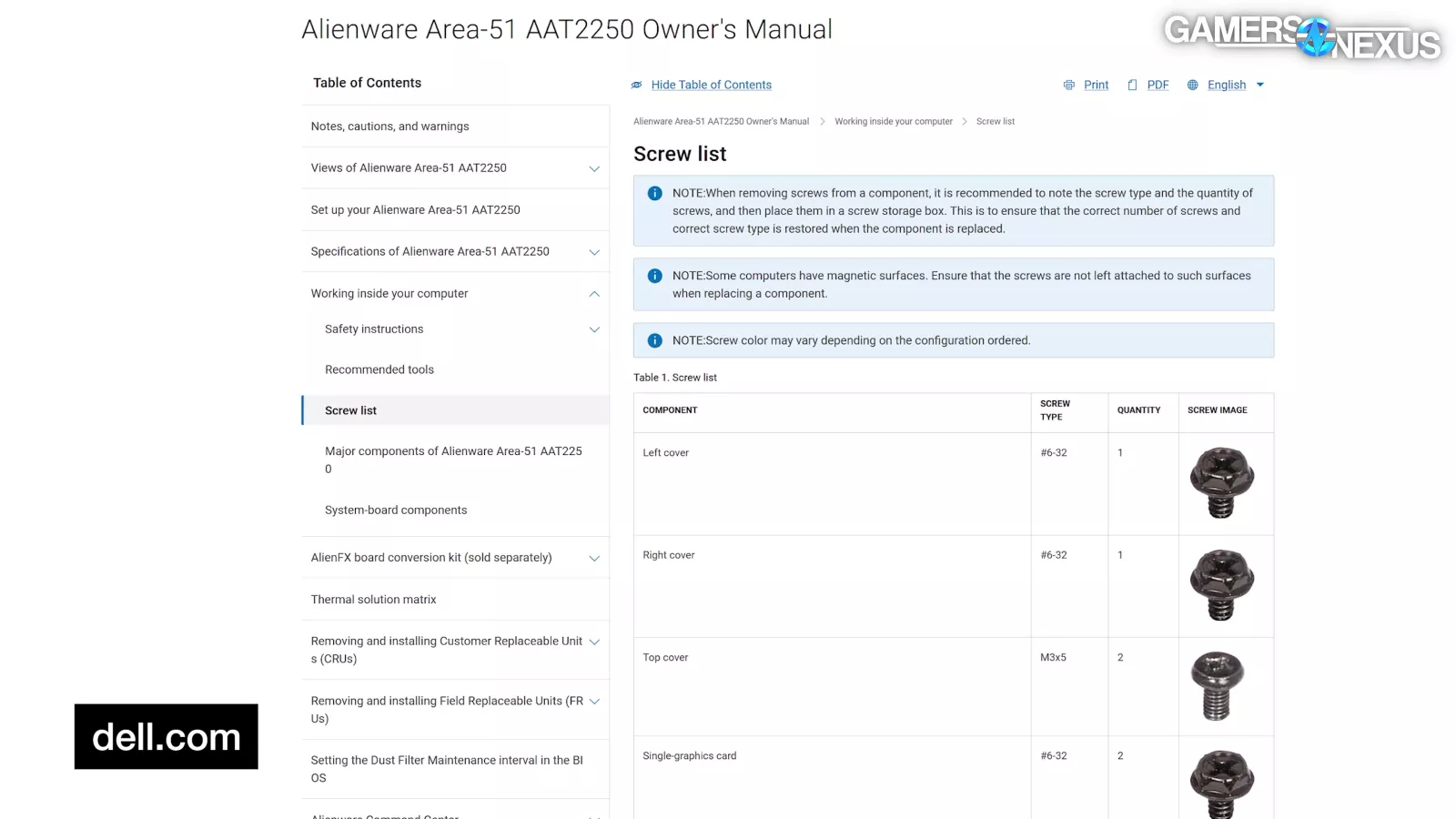
The case is also covered in at least 7 QR codes that link to various sections of the manual. It’s detailed, including this cool exploded diagram of the system and a dedicated screw list. Alienware is actually making progress here. Using ATX12VO and LGA1851 is a limiter, but the parts are standard, and that’s a big improvement over the proprietary crap they’ve used in the past.
Intro to Charts
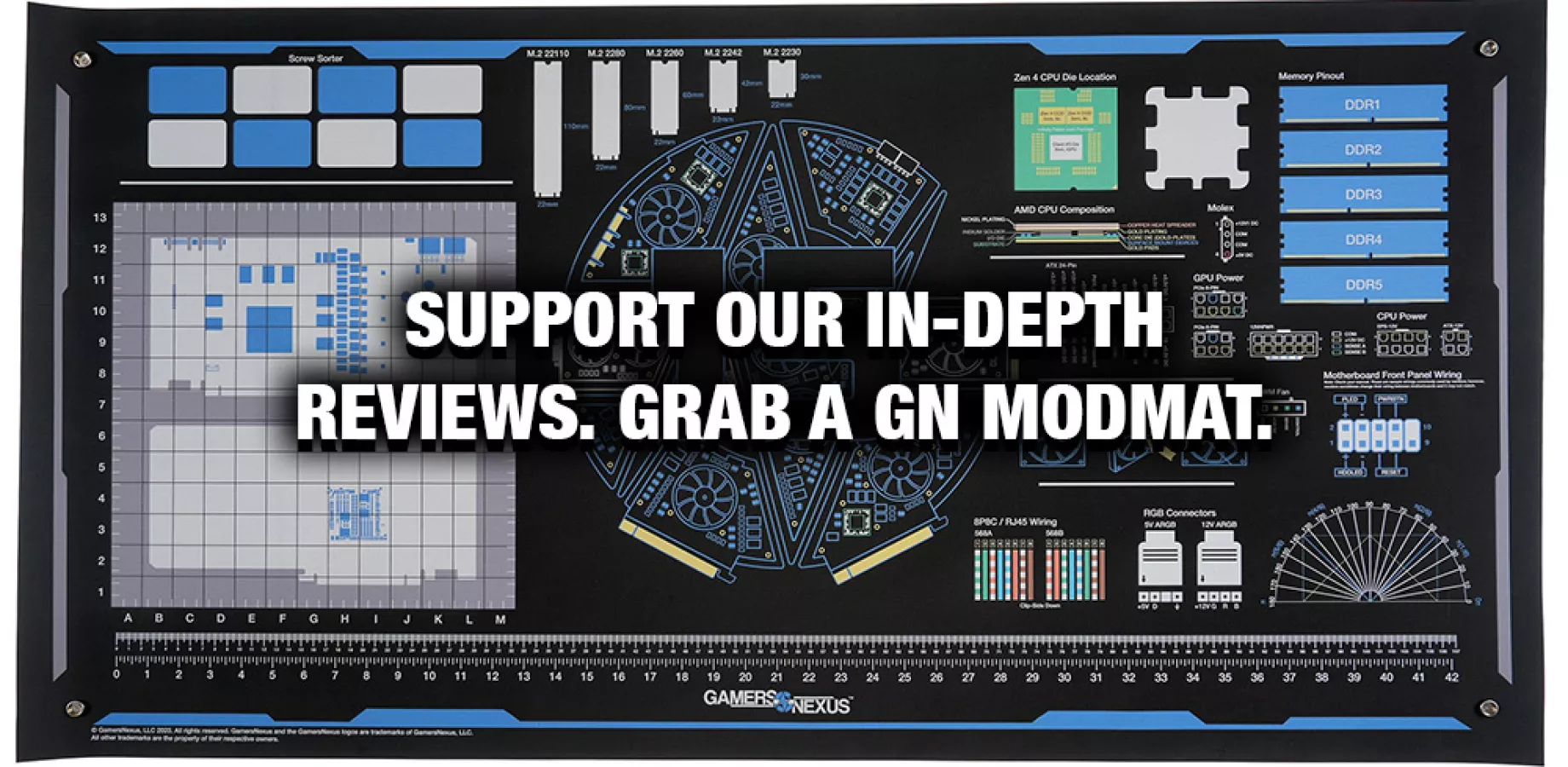
Let’s get into the benchmarks.
CPU Thermals - Steady State - Alienware Control
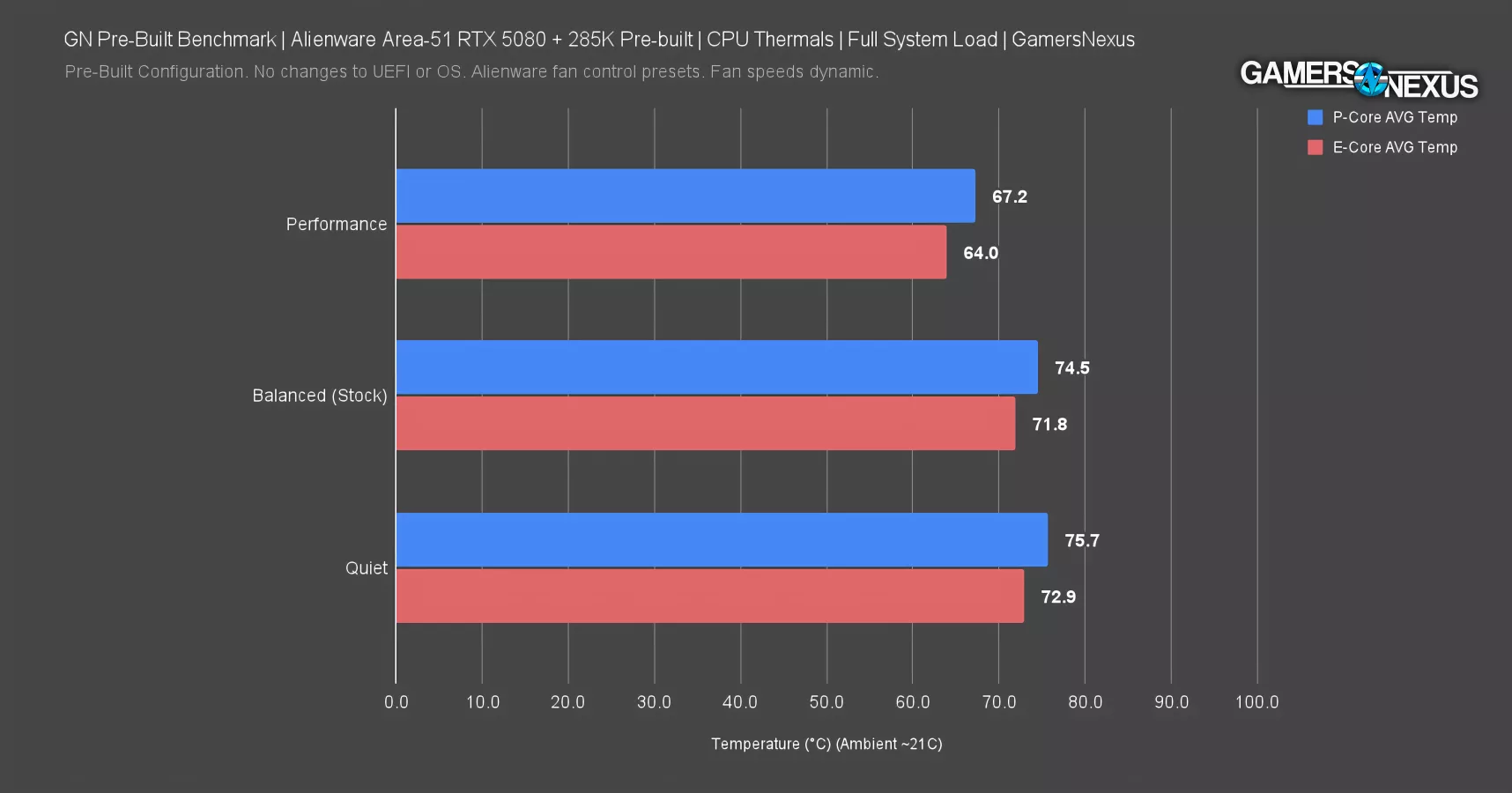
We’re starting with CPU thermals at steady state. The Performance fan preset resulted in a huge temperature reduction versus the other options of 7.3 degrees Celsius on the P-cores versus the stock Balanced preset at 74.5C. The Quiet preset didn’t change much and was roughly 1 degree warmer than Balanced.
E-cores average and follow the same pattern.
GPU Thermals - Steady State - Alienware Control
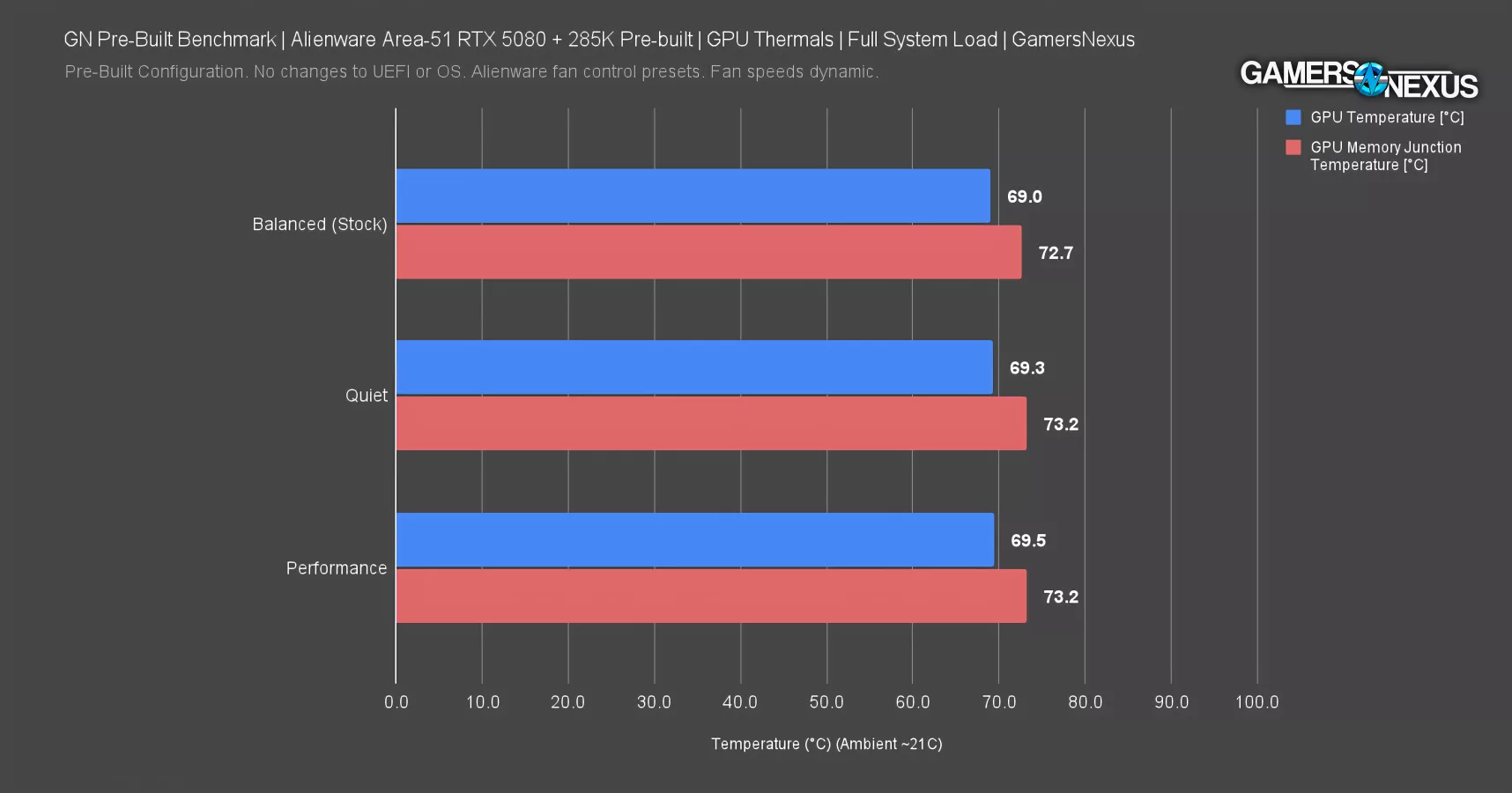
GPU thermals under automatic fan control are pretty much a wash and illustrate NVIDIA’s maintenance of a target temperature from VBIOS.
GPU Thermals vs. Fan Speed - Over Time - Alienware Control
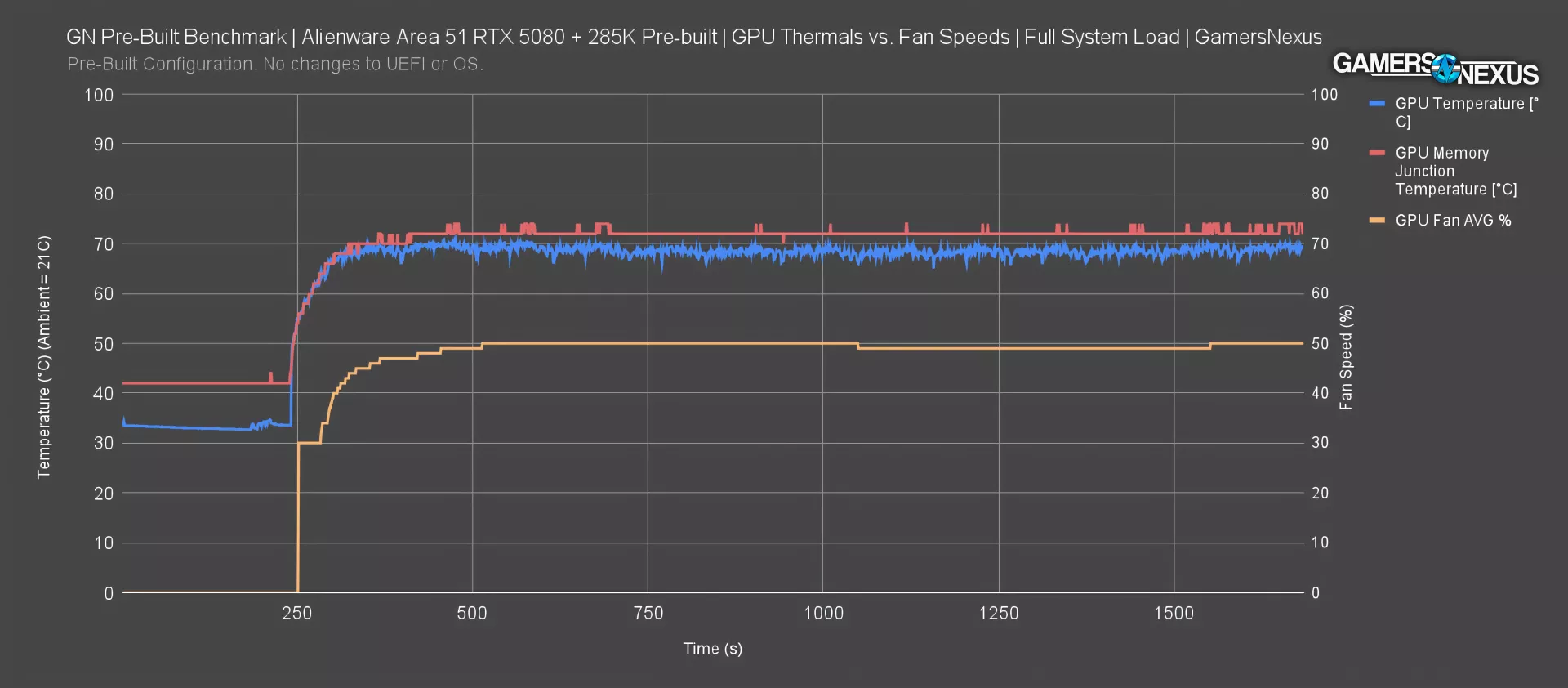
Here’s a quick look at GPU temperature and its fan speed over time. The results are unremarkable except as a model for what this should look like. GPU temperature quickly climbed to the high 60s and the fans locked in at 50% after a few minutes. That’s definitely a lot better than what we saw with Origin, where it took 8 minutes for the fans to do anything.
I/O Thermals - Steady State - Alienware Control
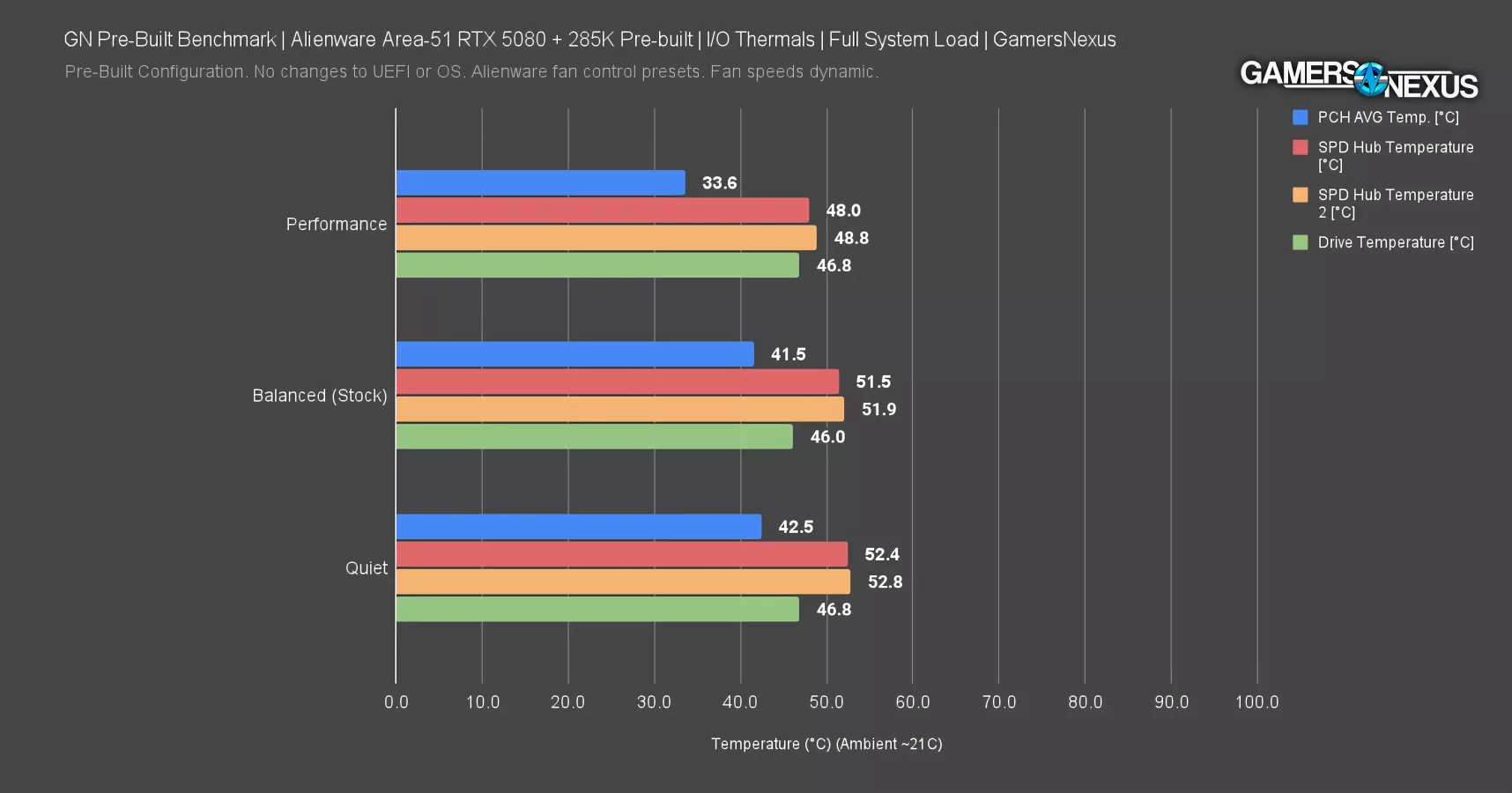
Other temperatures were mostly unremarkable, with the exception of the PCH temperature getting significantly more cooling with Performance mode. Any of these results are acceptable for the chipset temperature, though, so this mostly tells us where the air goes.
Intro to Manual Fan Control Thermals
Next, we’re manually controlling the fan speeds to do some A/B testing to evaluate Alienware’s design choices. We connected all the fans to a Corsair fan controller preloaded with PWM values that roughly correspond to the values at steady-state under Alienware’s control. The GPU fans were fixed at 50%.
We did testing stock, with the front panel removed, and with the top fans flipped to exhaust.
Steady State - Manual Control
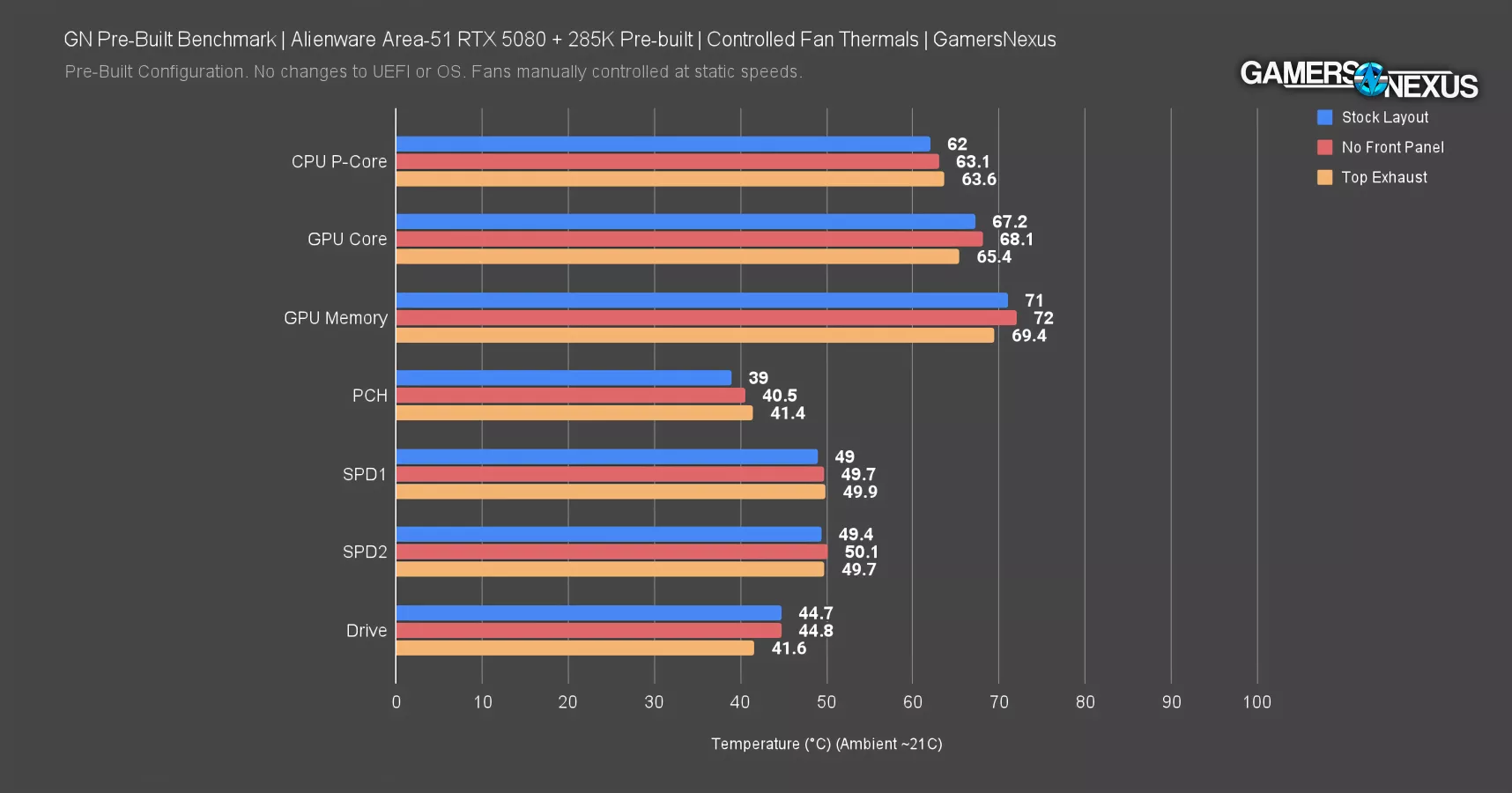
Broadly speaking: Removing the front panel had no meaningful impact on results and was within error. Top exhaust significantly improved drive temperature, GPU memory temperature, and GPU temperature for the core, with reductions of about 3 degrees in each. The GPU temperature in particular improves because of the better ability to utilize flow-through cooling, evicting warmed air out the top of the case in a straight path for the GPU. This naturally heats up the CPU radiator more, which means CPU temperature slightly increases. The CPU can take it though, and the GPU will actually boost slightly higher as a result of this. Likewise, the CPU temperature increase is less than the GPU temperature decrease.
Frequency - CPU
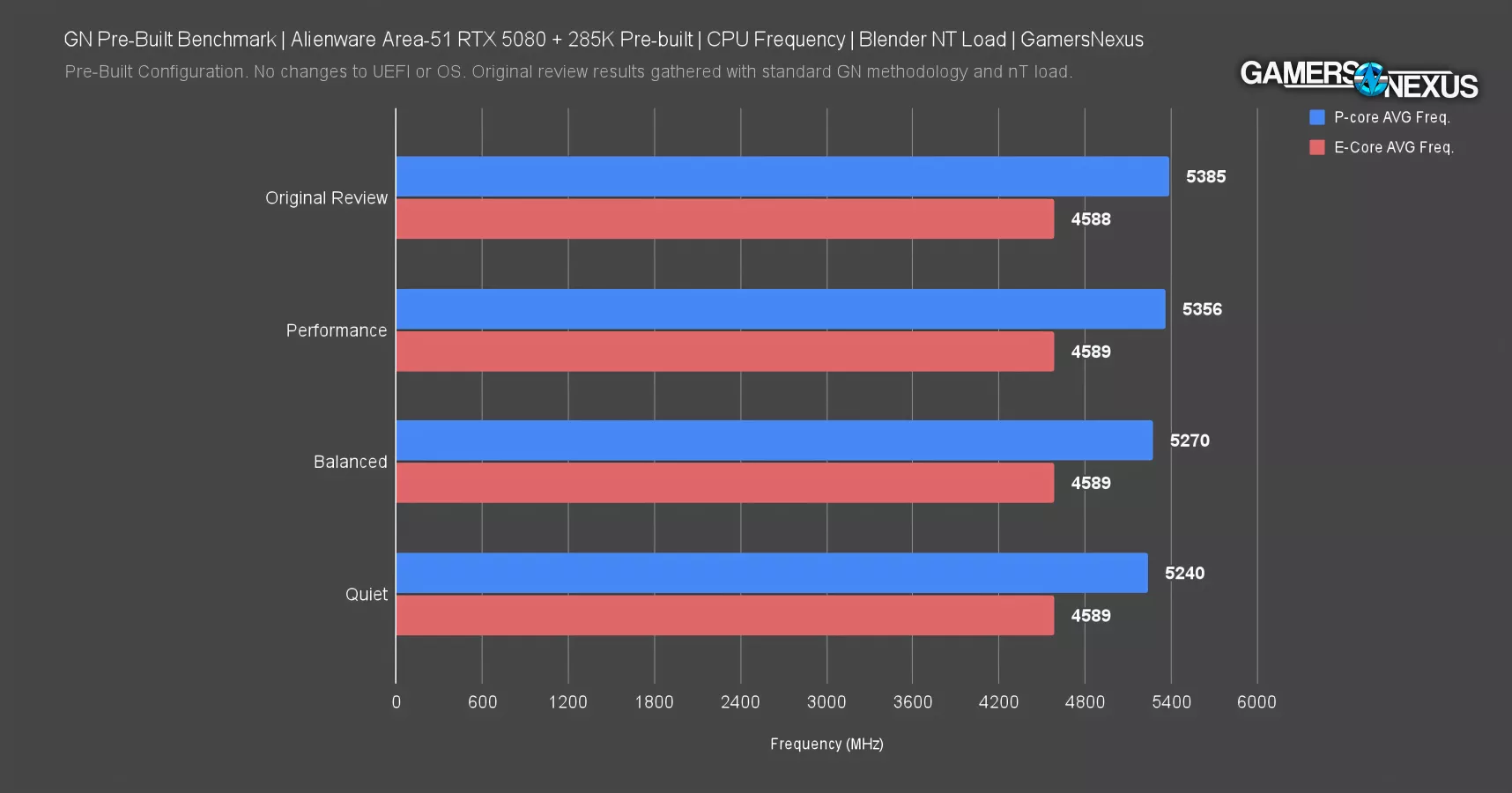
CPU frequency has frequently been a key area of failure for several of the pre-builts that we’ve reviewed – usually due to poor thermals or power management.
To Alienware’s credit, that’s not the case here. The Intel 285K with the 360mm liquid cooler and the fans at the Performance preset only loses an average of 29MHz across the P-cores versus our original review of the 285K. The stock Balanced preset gives up 115MHz on average, and Quiet falls behind by 145MHz versus stock. A 145MHz loss is large across all cores averaged and would be noticeable where performance is time-based, but because it’s an optional fan preset, we’re OK with it as long as users know about it. It’s trading clocks for lower noise.
Acoustics - dBA Over Time

Next up is testing in our hemi-anechoic chamber, which we’ll use to evaluate noise levels of the different preset fan profiles (now that we know the trade-off for performance and thermals).
The stock Balanced profile idles around 21-22dBA before spiking in response to the initial CPU load. There’s a faint extended stair-step pattern throughout the test duration before settling in at 29.7dBA average at steady-state.
The Quiet profile follows much the same pattern – actually measuring slightly louder than Balanced during parts of the test. This reflects the extremely similar thermal behavior we saw between Balanced and Quiet.
Performance idle was around 24-25dBA, ramping beyond 30dBA quickly, then settling in at 35.9dBA at steady-state. It’s not objectively that loud, but is by comparison to the reserved nature of the default curve.
Power at the Wall

Measuring power at the wall during the full system torture load shows only marginal differences between the three profiles, all sitting around 650W average at load. The most significant difference is elevated power consumption at idle when using the Performance profile. This is due to the raised fan and pump speeds.
Setup and Software
Software and setup is next.
The Windows installation process was modified to include a registration form and agreements to Alienware’s terms. We can never just get a clean Windows install from Dell. The good news is that you don’t have to fill them out or agree to them, you can just press next. The bad news is that it doesn’t tell you that’s even an option.
After hitting the desktop, we saw that all drivers were present, but the NVIDIA driver version was 572.16 from the 50 series launch on January 30th, despite newer versions being available at the time of build. Also, one of the Intel drivers was even older, dating back to October 2024, even though much newer versions are available.
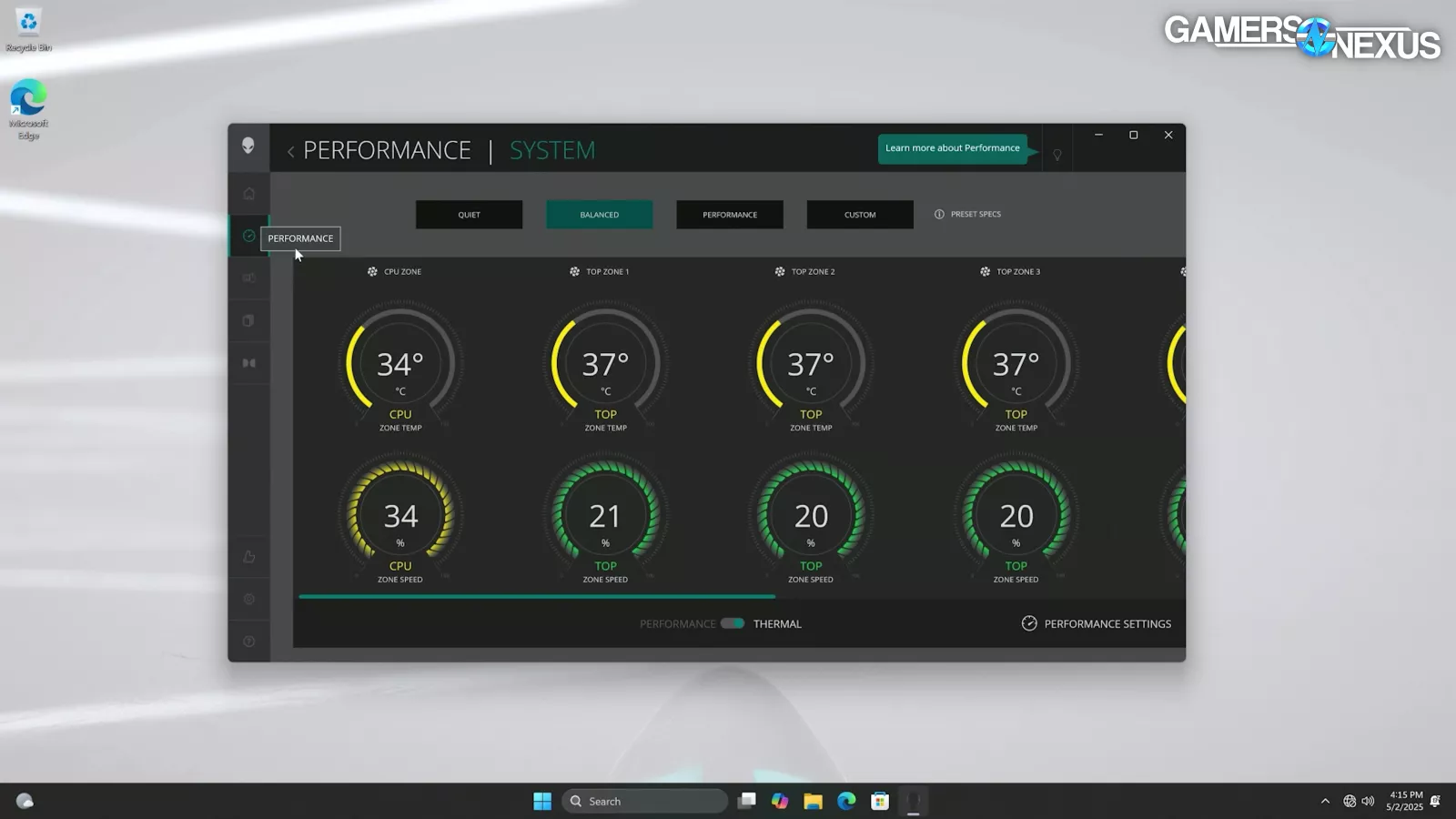
Bloatware includes the Alienware Command Center (which is actually needed for fan and light control), Alienware Digital Delivery, Dolby Access, Killer Intelligence Center networking, Microsoft Office, including “Outlook (new),” and SupportAssist.
This is a lot of crap for a clean install. It’s not the worst we’ve seen: There weren’t any anti-virus solutions installed from McAfee or Norton, which is a major positive, but it’s still a little bit bloated.
Upon opening the Alienware Command Center, you get hit with text reading “Welcome, Gamer!” The main page shows a few basic metrics like CPU, GPU, and RAM utilization, and also basic thermals. From here you can choose performance profiles, which control the fan curves.
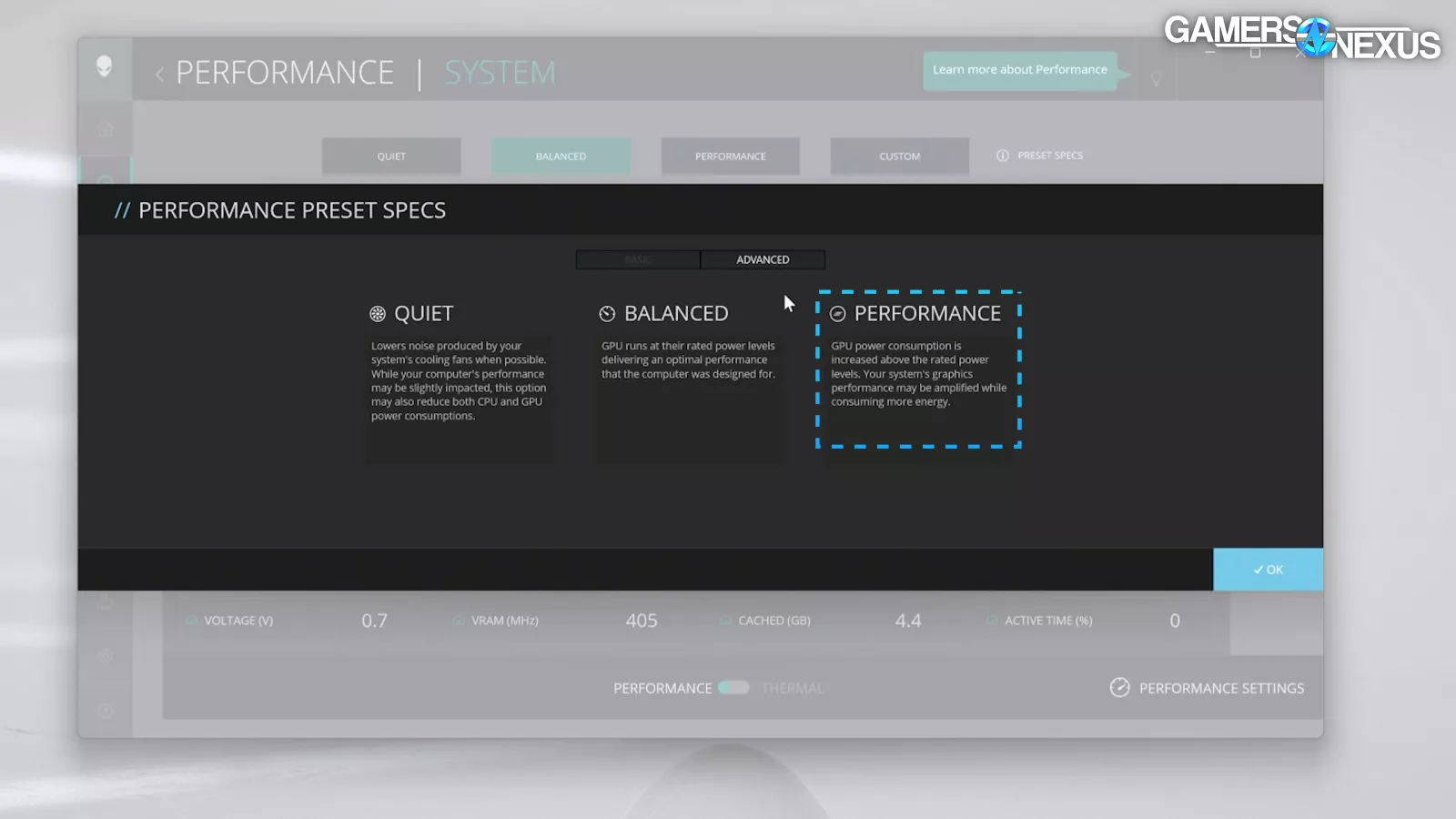
Weirdly, the performance page claims that Performance mode does this: “GPU power consumption is increased above the rated power levels. Your system’s graphics performance may be amplified while consuming more energy.”
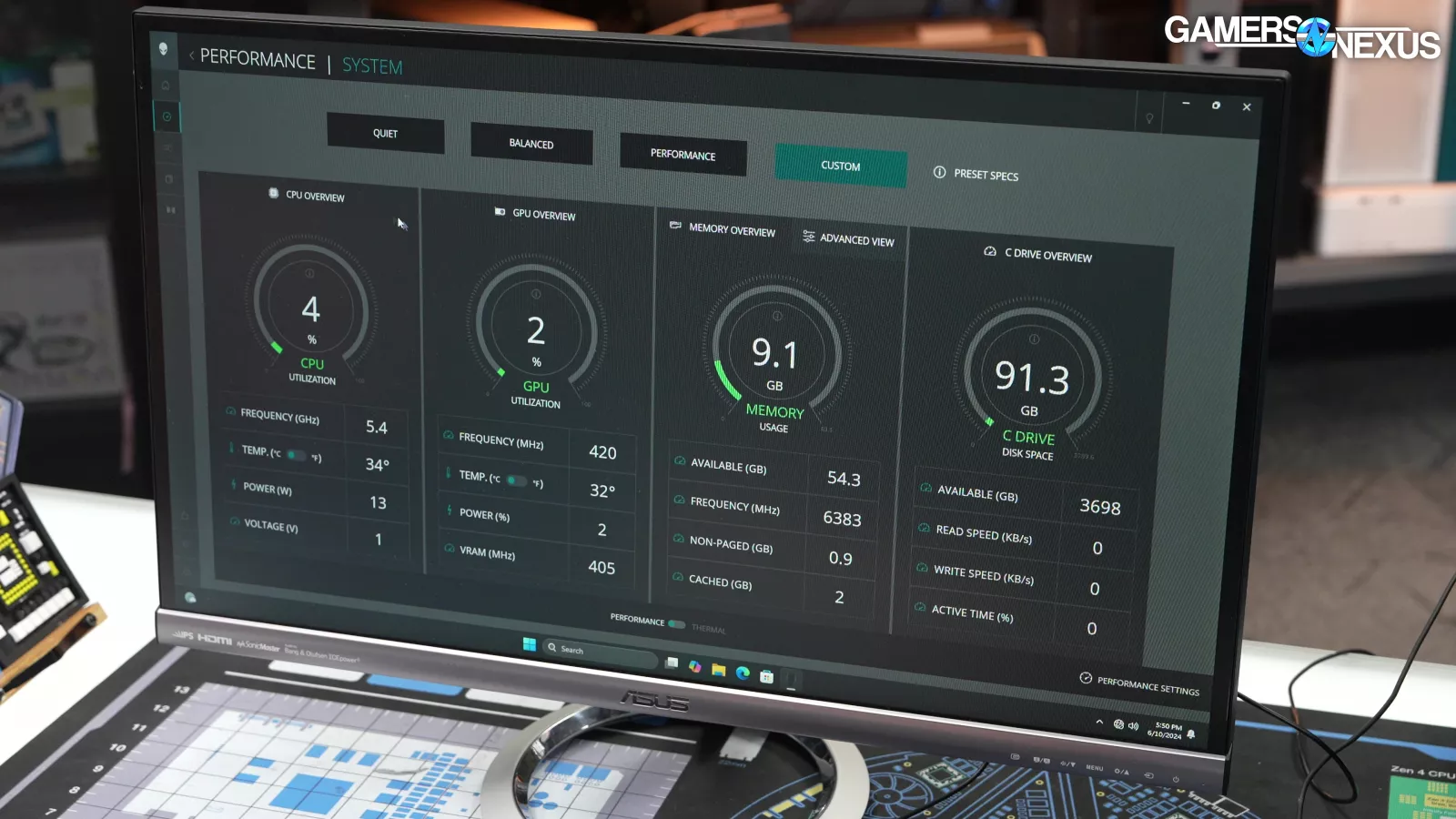
That makes Performance sound aggressive, like it’s overclocked or something, and implies pushing beyond normal limits, which is just a lie. It runs at the rated power levels, not above them, unless Alienware means above its own rated power levels rather than NVIDIA’s, in which case that’s misleading. The app claims it controls overclocking settings, but the Custom profile gives neither clock nor power control.
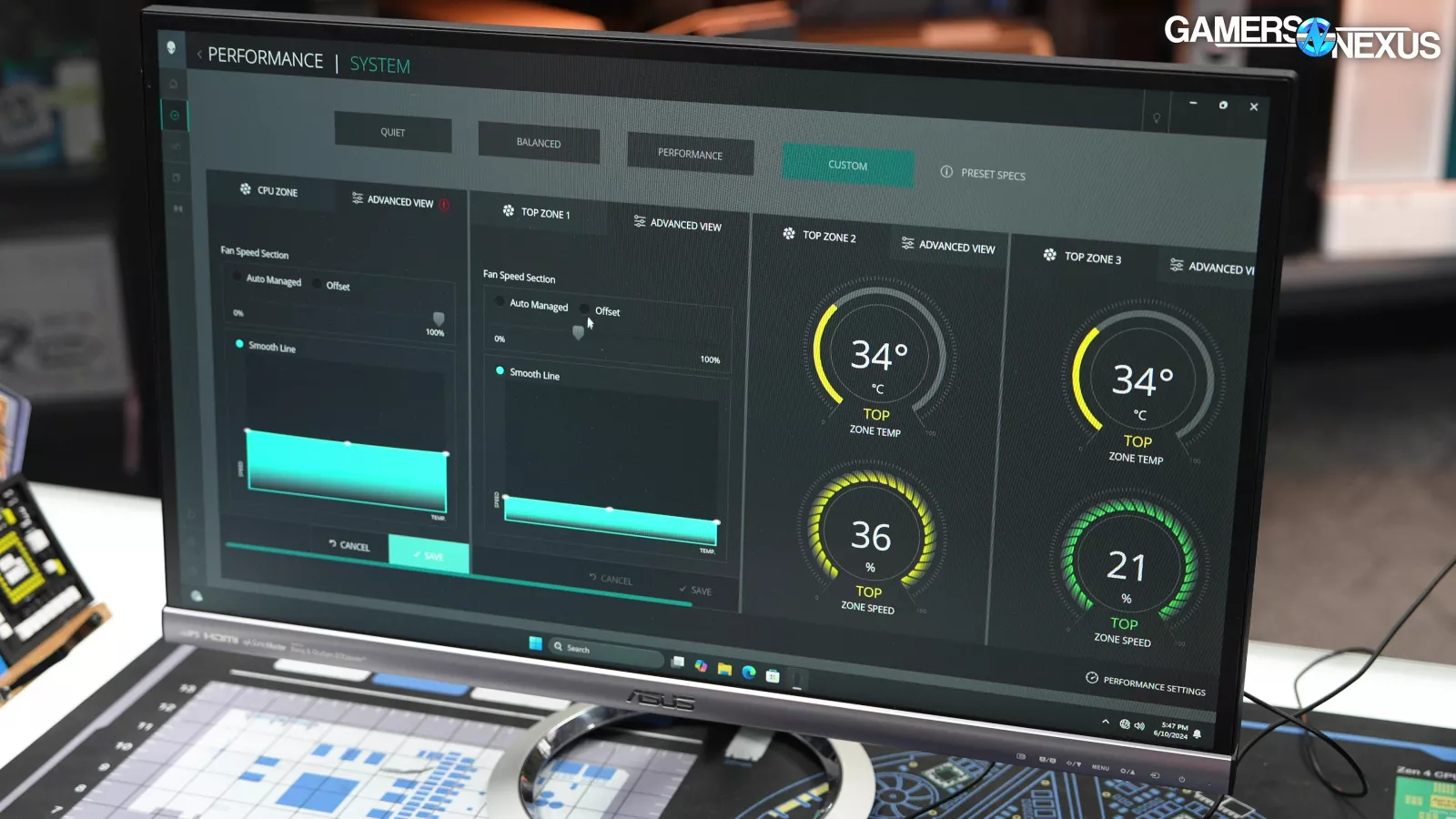
One huge miss here is the inability to set truly custom fan curves. All you can do is add a positive percentage offset to the existing base fan curve. It technically works, but it’s awkward and deprives the user of granular control.
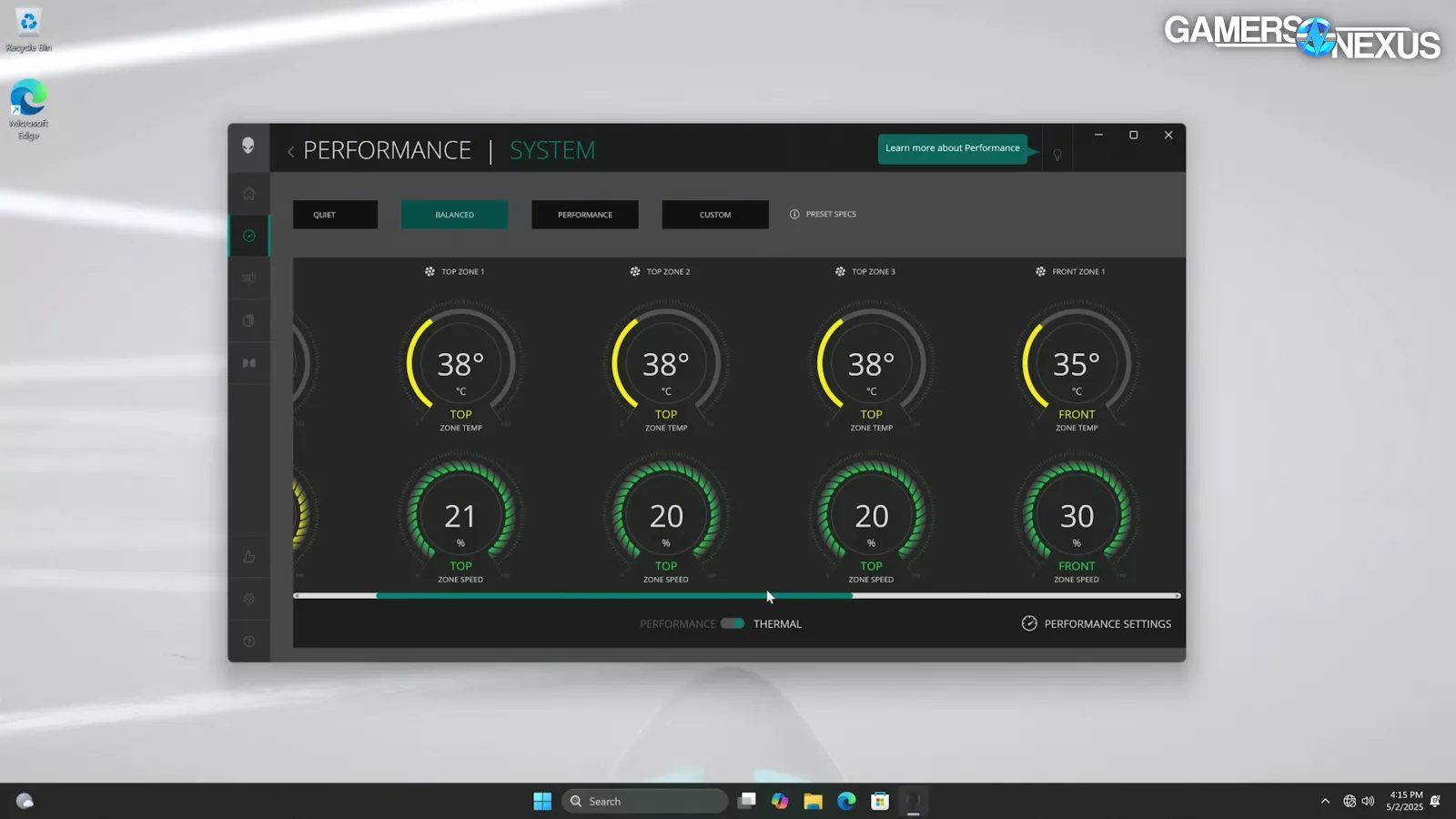
Detailed temperature readouts are split into 8 “zones.” It would have been interesting if these were thermocouples actually placed around the system, but they’re not. CPU, Front, and Top are the CPU temperature, and Bottom is the GPU temperature.
Packaging and Accessories
The Area-51 came in a huge and heavy box. The outer box pulls off after popping the retaining plugs, revealing the foam-encased PC. There’s even a chunk of foam shoved into the front panel opening, which is welcomed attention to detail to prevent front panel damage.
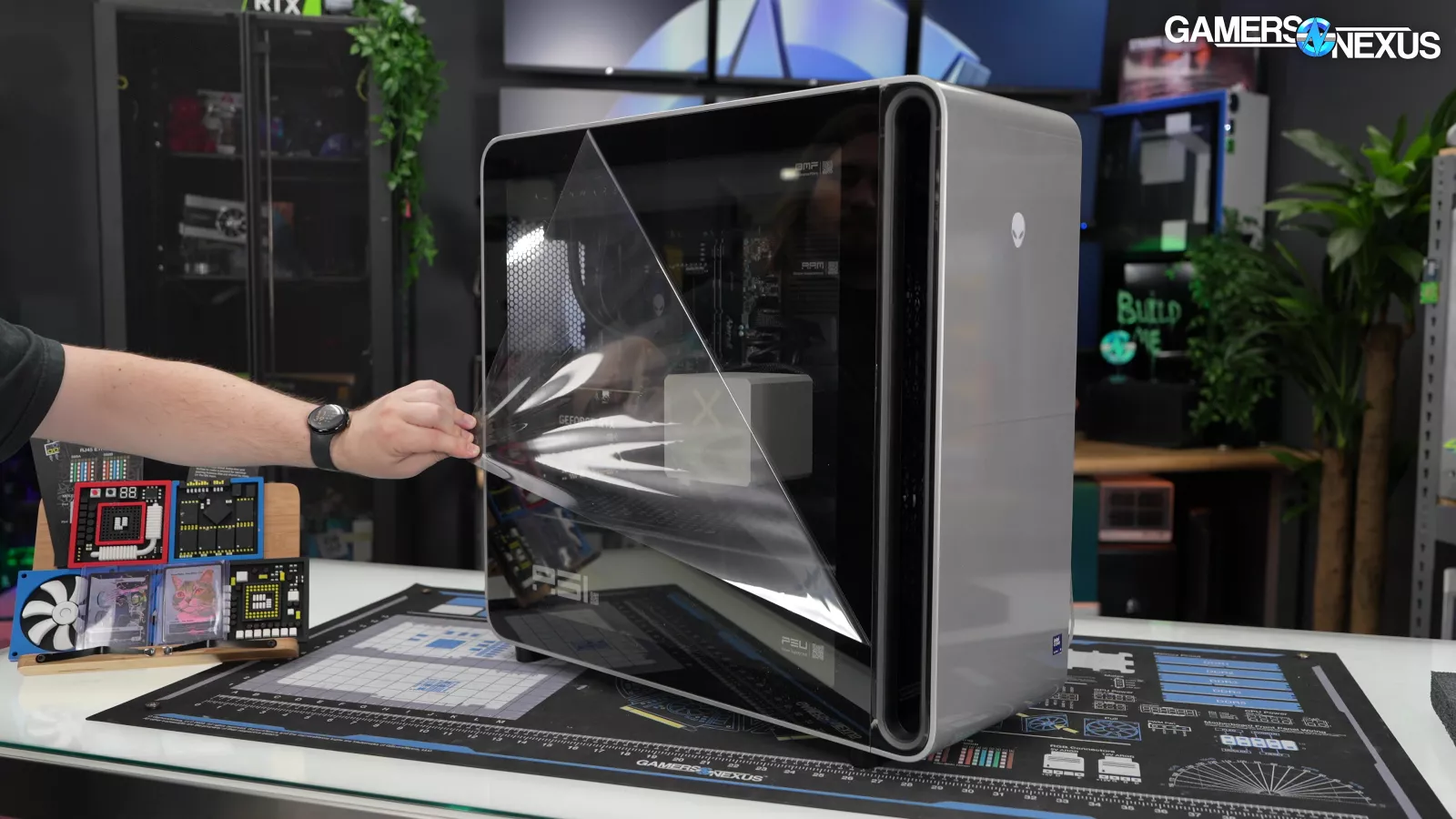
The case itself was absolutely mummified in a ridiculous amount of plastic – every panel, edge, and piece of trim was covered. This is annoying to remove and also creates unnecessary waste.
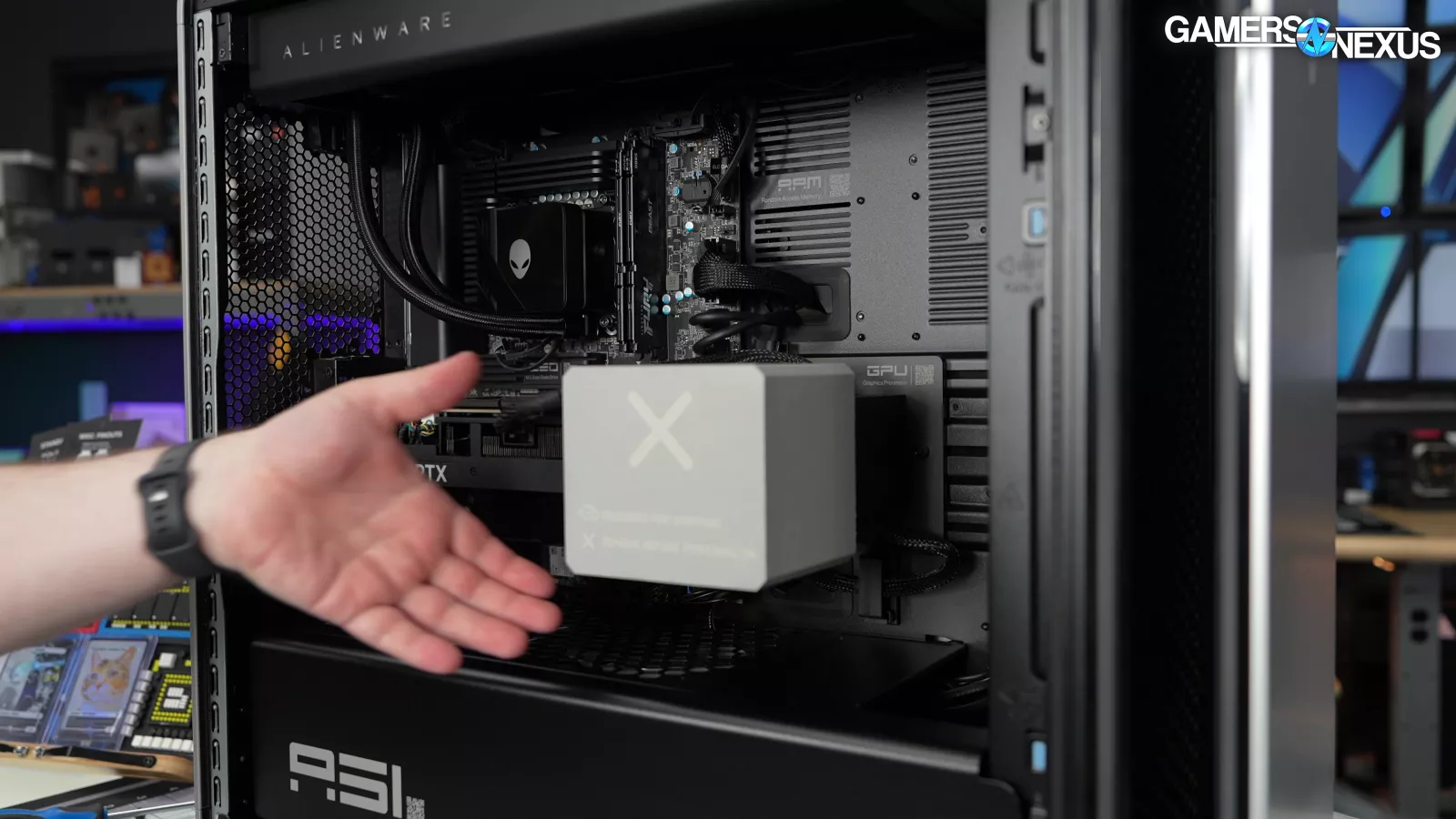
Inside the case was a block of foam for additional GPU support. This is great and allows Alienware to ship with the GPU installed, rather than requiring user installation.
The only included accessories are a basic keyboard and mouse, like the kind you’d get with any Dell system off the shelf.
BIOS

The BIOS is Dell standard with simple sections and a straightforward layout. Mildly interesting is the dust filter maintenance reminder setting, but it’s Disabled by default. This could be pretty cool if utilized properly.
Thankfully, XMP and resizable BAR were turned on, so a few points for that.
Otherwise, there were no oddities in the BIOS settings.
Alienware Area-51 Conclusion

Alienware’s Area-51 is massively improved over Alienware’s predecessor systems. The build quality is better. The company also moved over to standardized components.
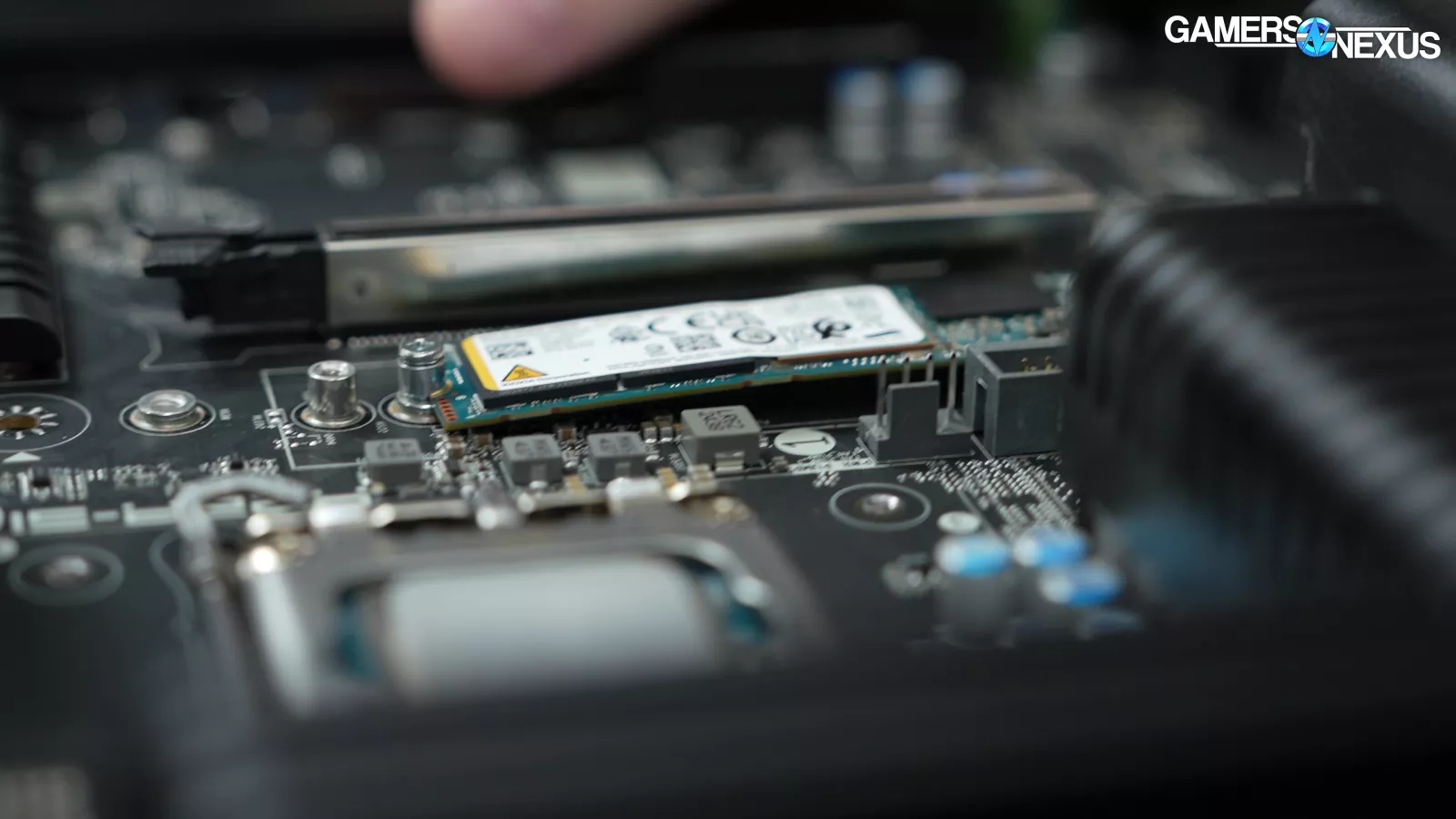
The biggest mark against the system that takes it down from an overall positive review to one with more criticisms is really that SSD. If we saw that much of a bend on an SSD, we would personally opt to replace it, even if it was working at that moment, to avoid any potential data loss.
The dust and the dirt were also pretty gross throughout the system and it’s an issue we’ve seen in past Alienware systems. The company has not improved here. What we found is that as you use the PC, the dust loosens up and gets into the system itself. There’s no reason this system should be this dirty out of the box. We don’t normally see that from other vendors.
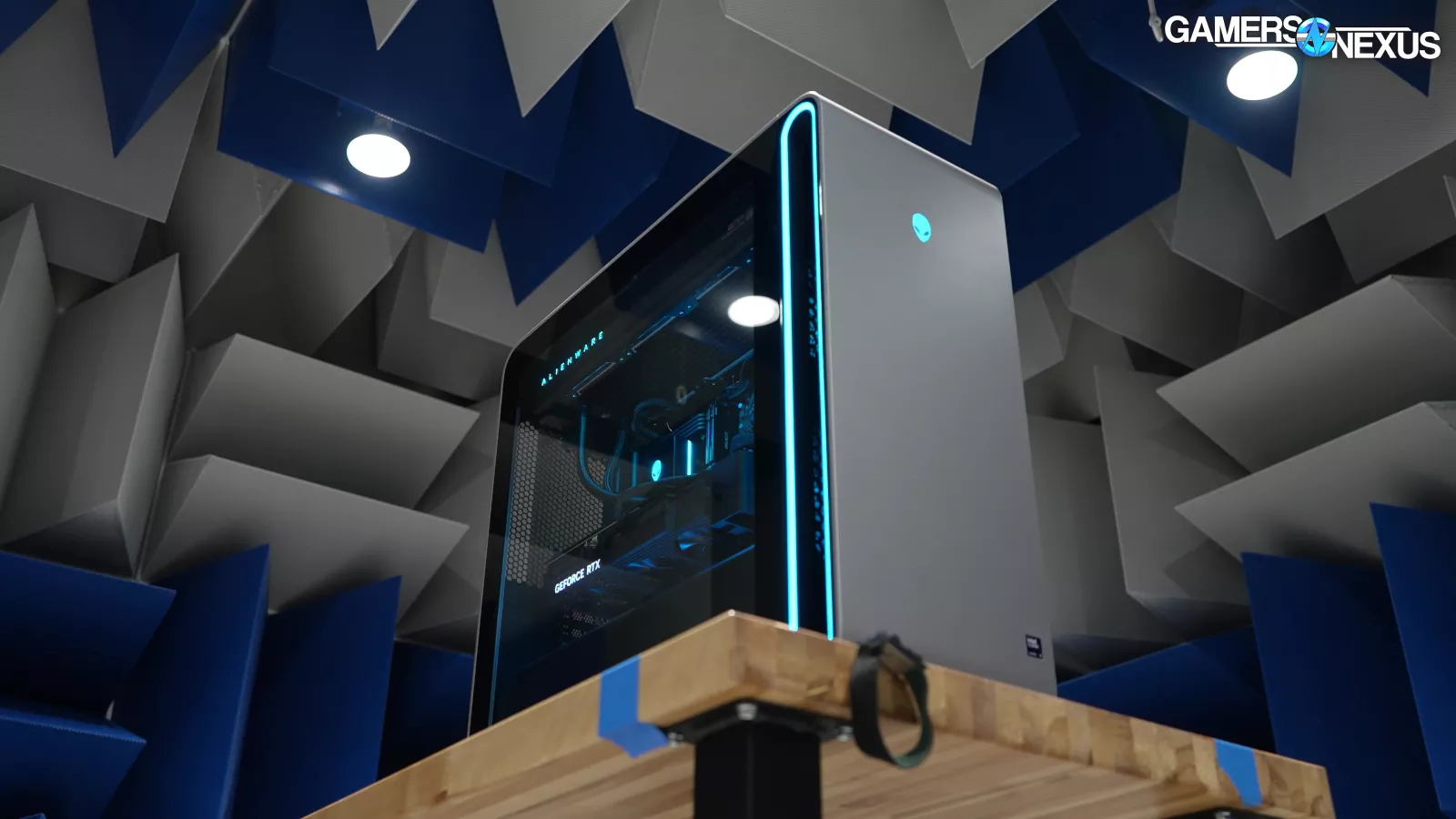
Those are 2 marks against the system despite being overall positive on it otherwise. The price is also 50% over DIY price. As a reference, the Thermaltake View series system that we previously reviewed was roughly 7% over DIY part costs. We’ve looked at some other systems in the past, like some of Maingear’s stuff, which charge around 30% over DIY parts. So the 50% is really high and that kind of kills it on value alone for us despite all of the other improvements.
In a market where it’s a roll of the dice whether competition is even competent, some amount of people will pay extra just to know that it works. The build quality is good and the bloatware is not that bad.

Alienware clearly took some of the criticisms about the former Aurora desktops seriously. The case is heavy and somewhat elaborate, but it’s actually kind of thoughtful in some places. The part selection is niche and may not have a clear upgrade path, but it’s not proprietary, so that puts fault on Intel more than Alienware this time, though we’d like to see something like a 9800X3D (read our review) option. ATX12VO is rare, but it’s an actual standard that has efficiency improvements over regular ATX12V. If Alienware sticks with this but lands on a more upgradeable platform in the future, they may have the basis of a good formula.
The price is the worst part. We were able to find some alternative pre-builts with similar components for about a $700 - $900 increase over DIY cost, which would make those cheaper, but we’re working to get those in to make sure they’re any good.
Anyways, it’s actually a good computer, and unironically, Alienware can get the “It’s-better-than-Dell” award. It is technically a Dell, but now we just need to see if Dell can improve its actual Dell name product lineup for gaming. We may change the name of the award to “It’s-better-than-Origin.”
